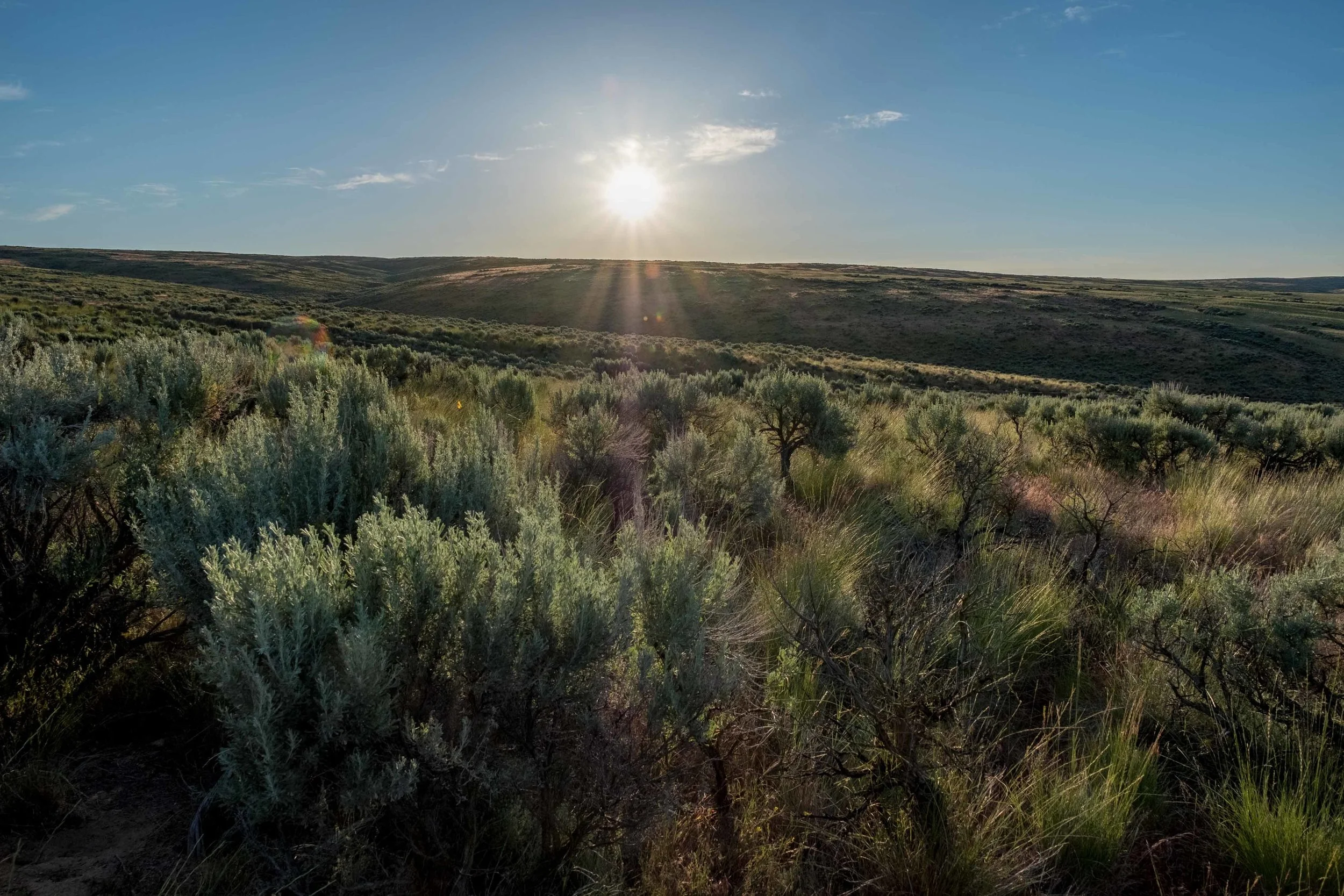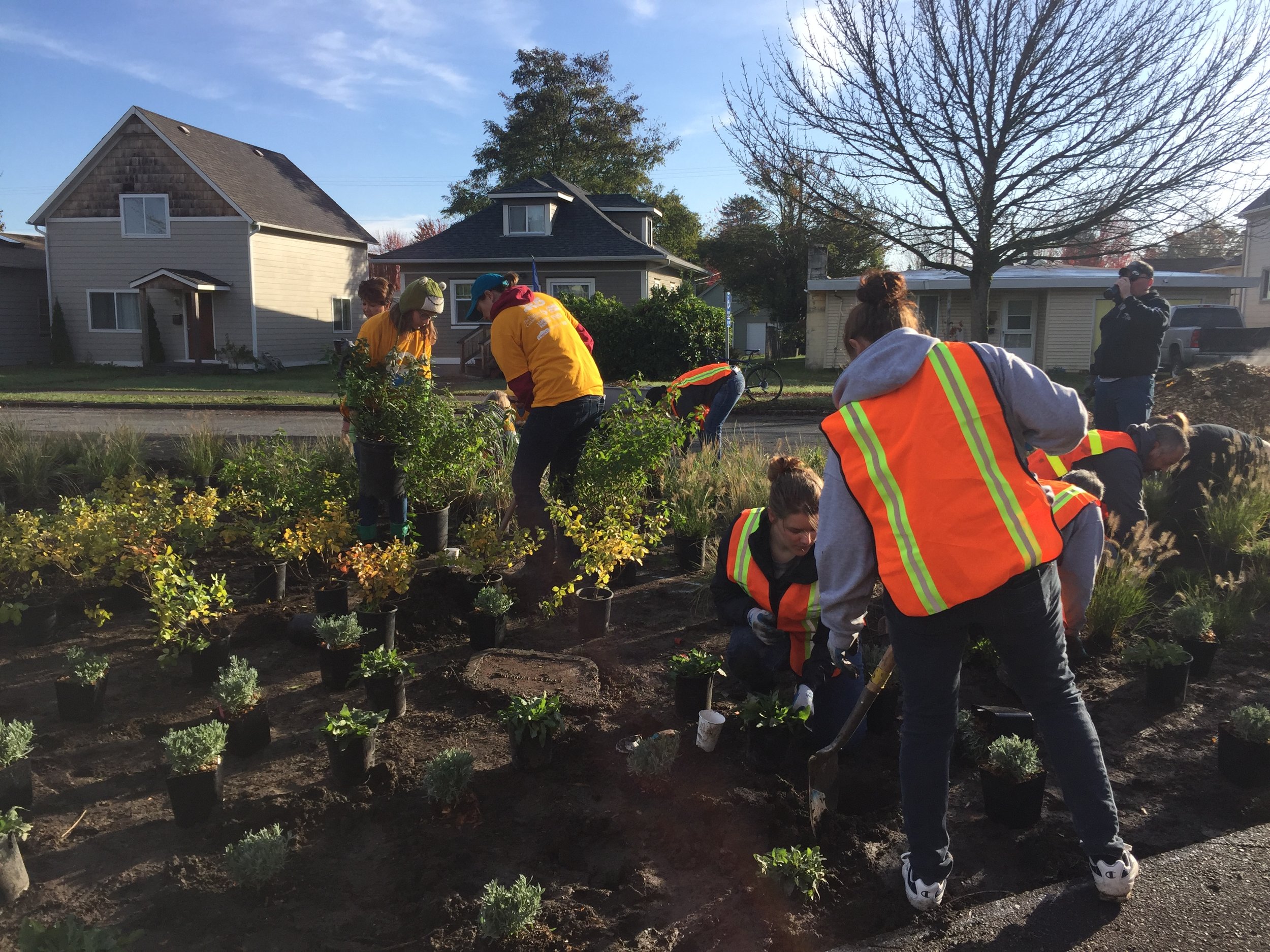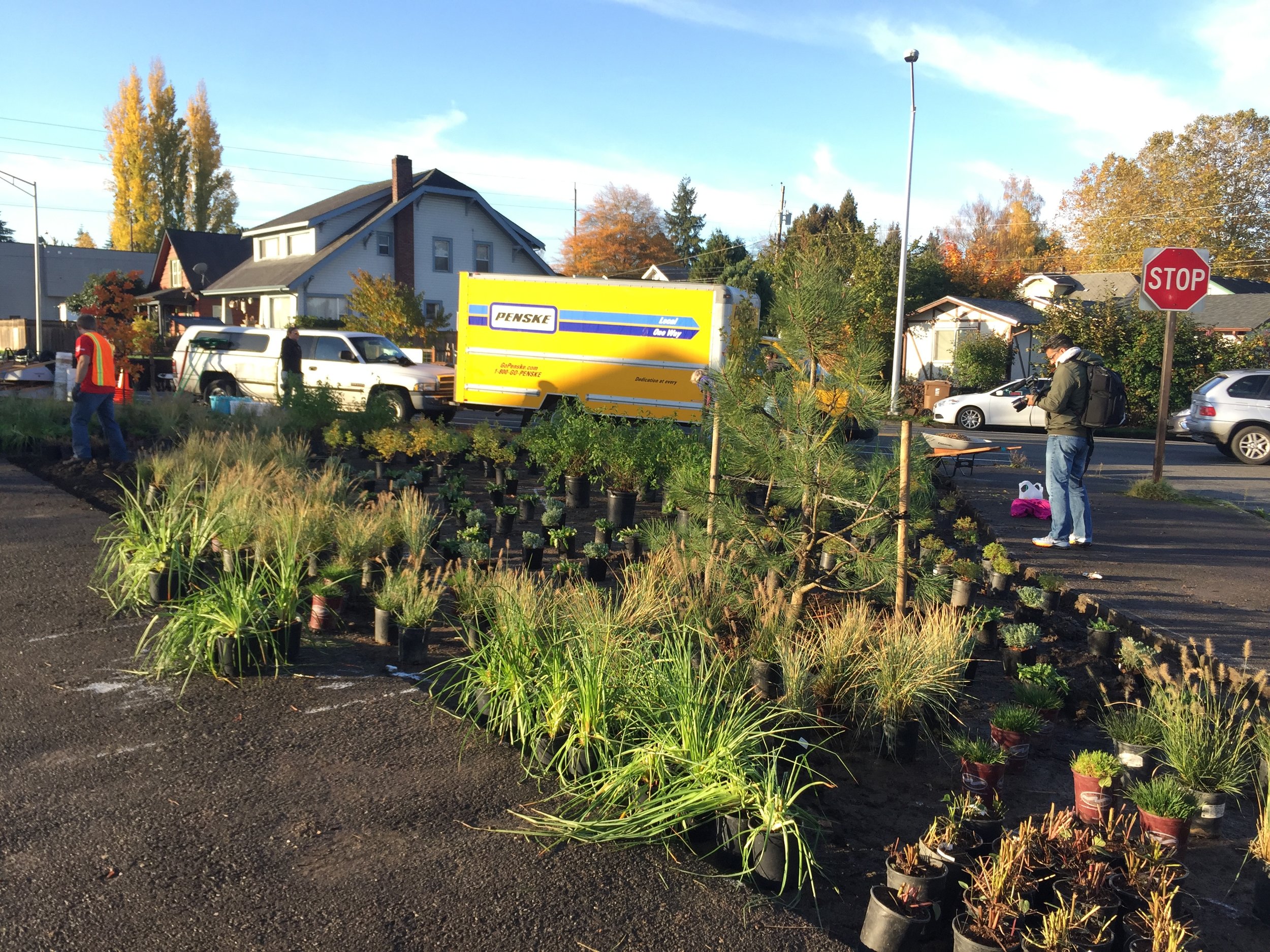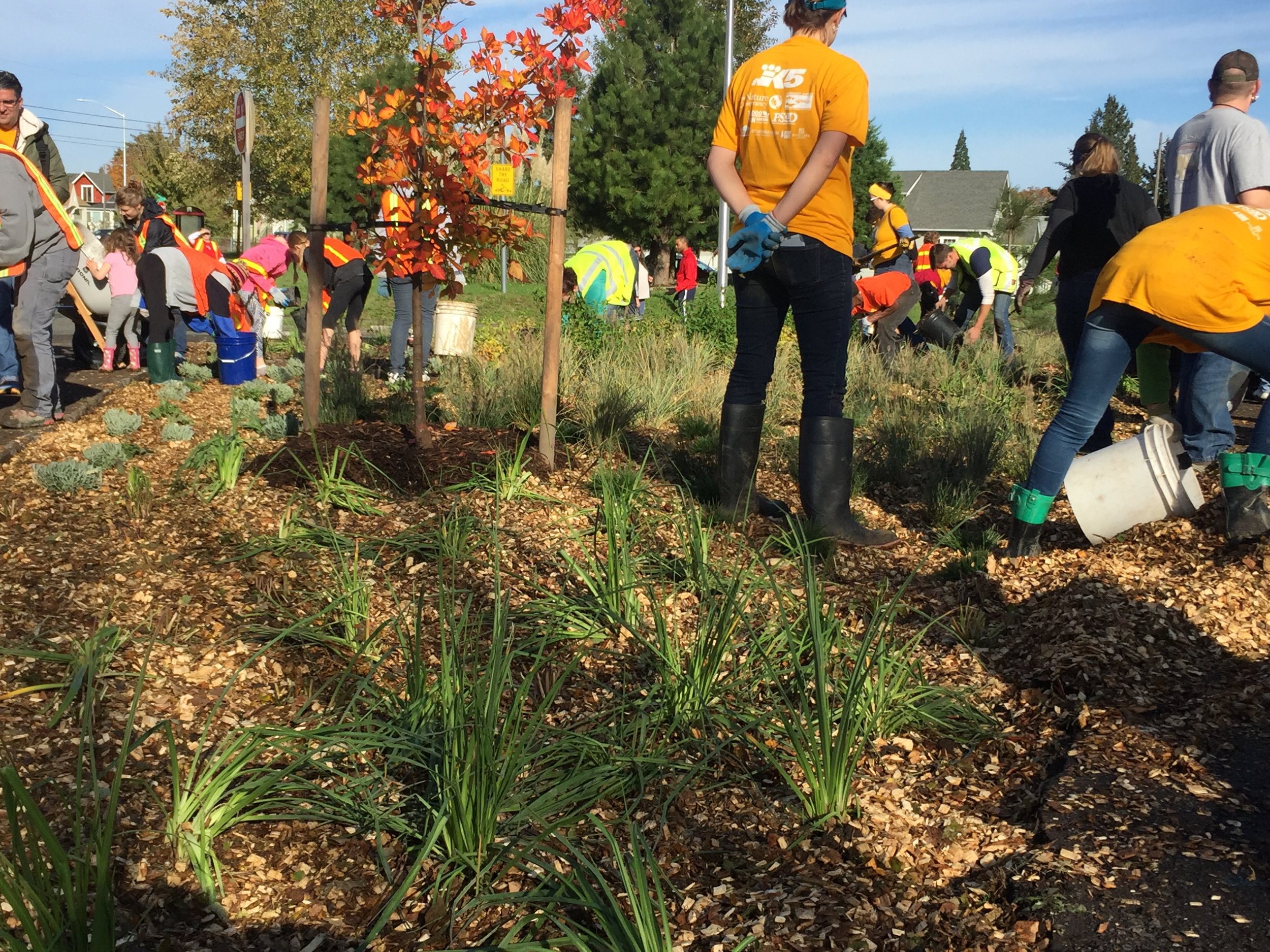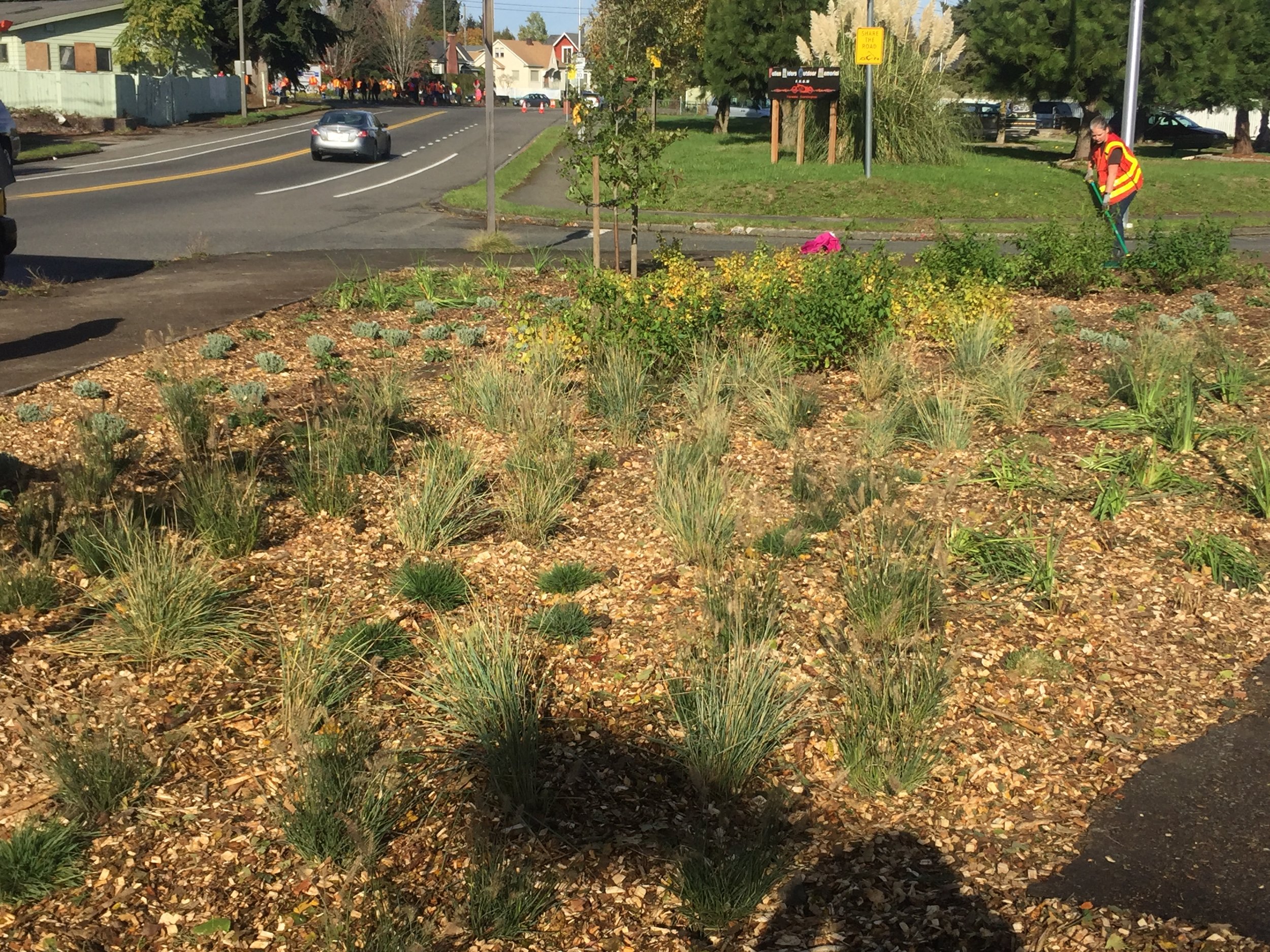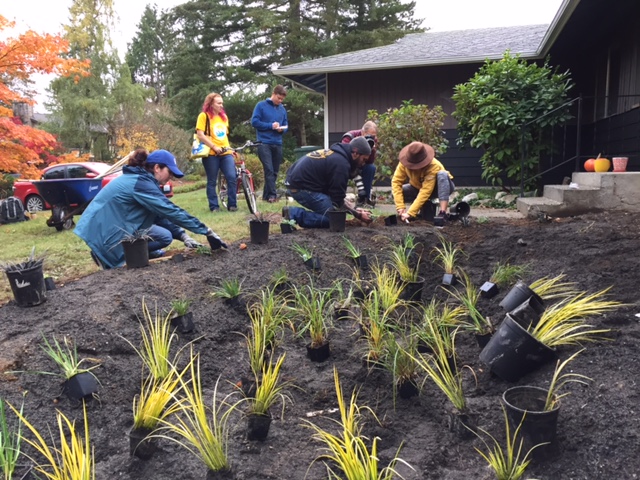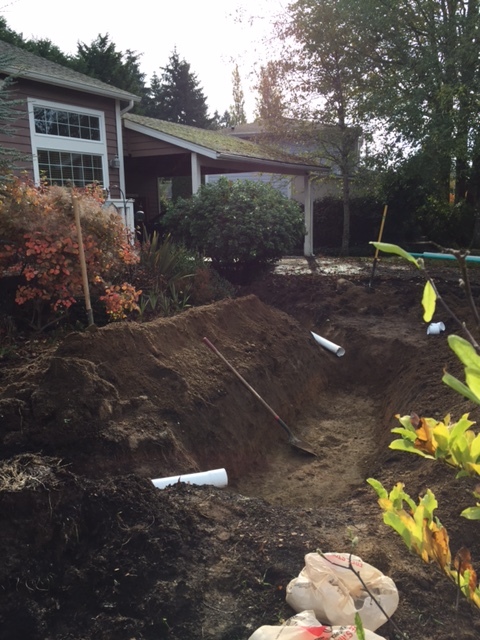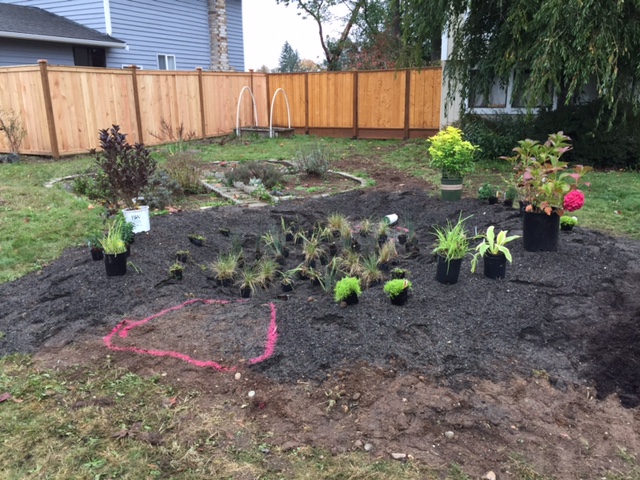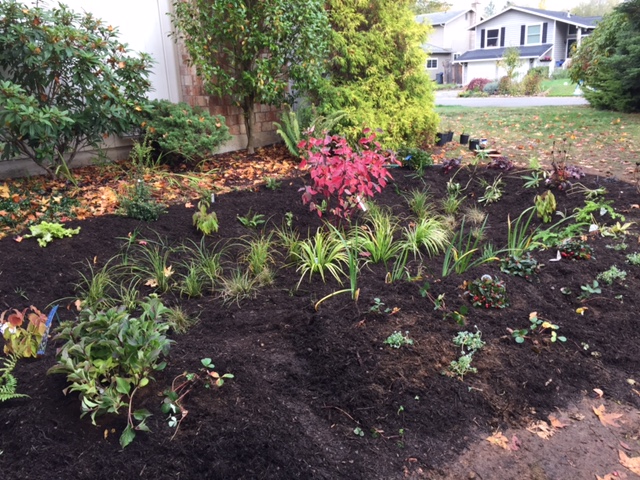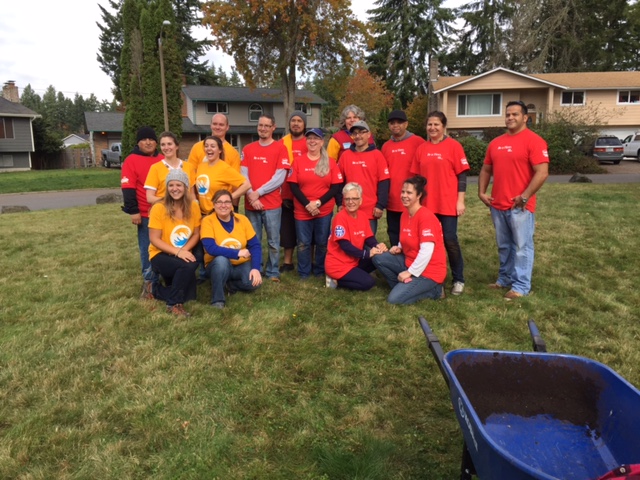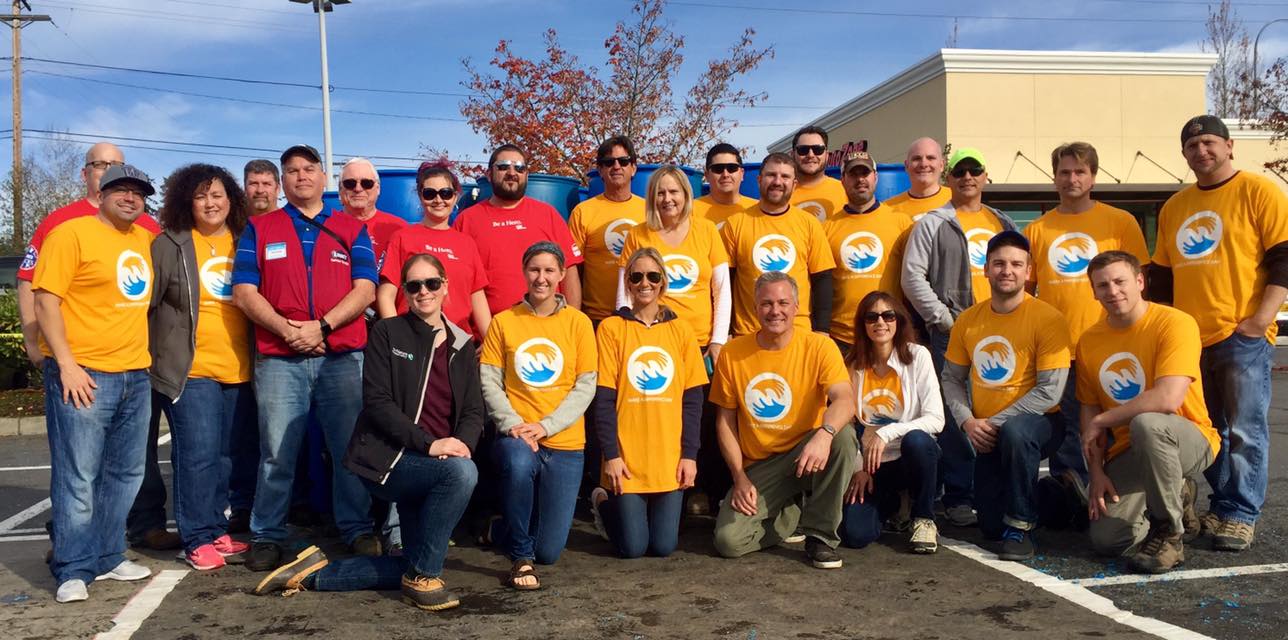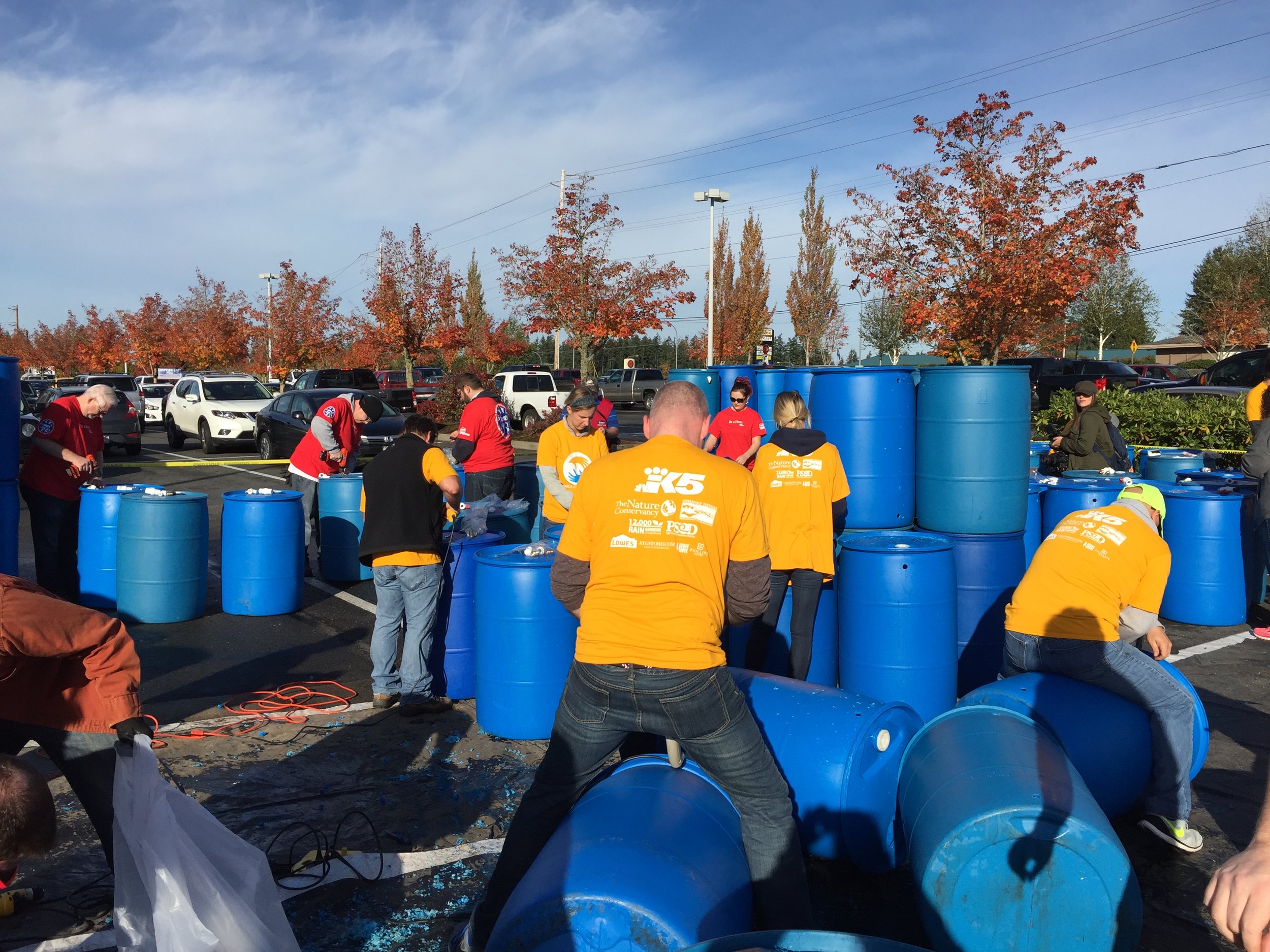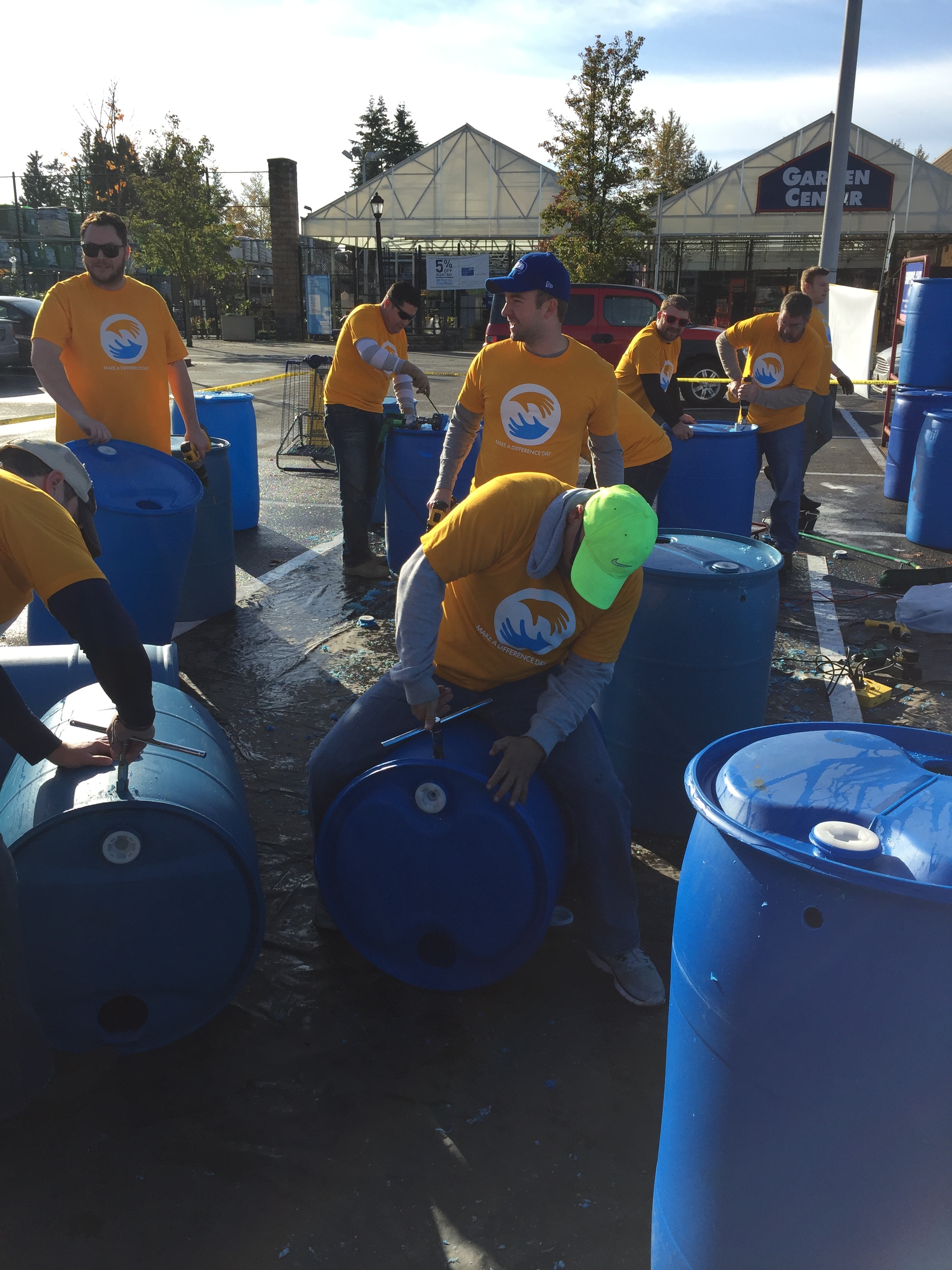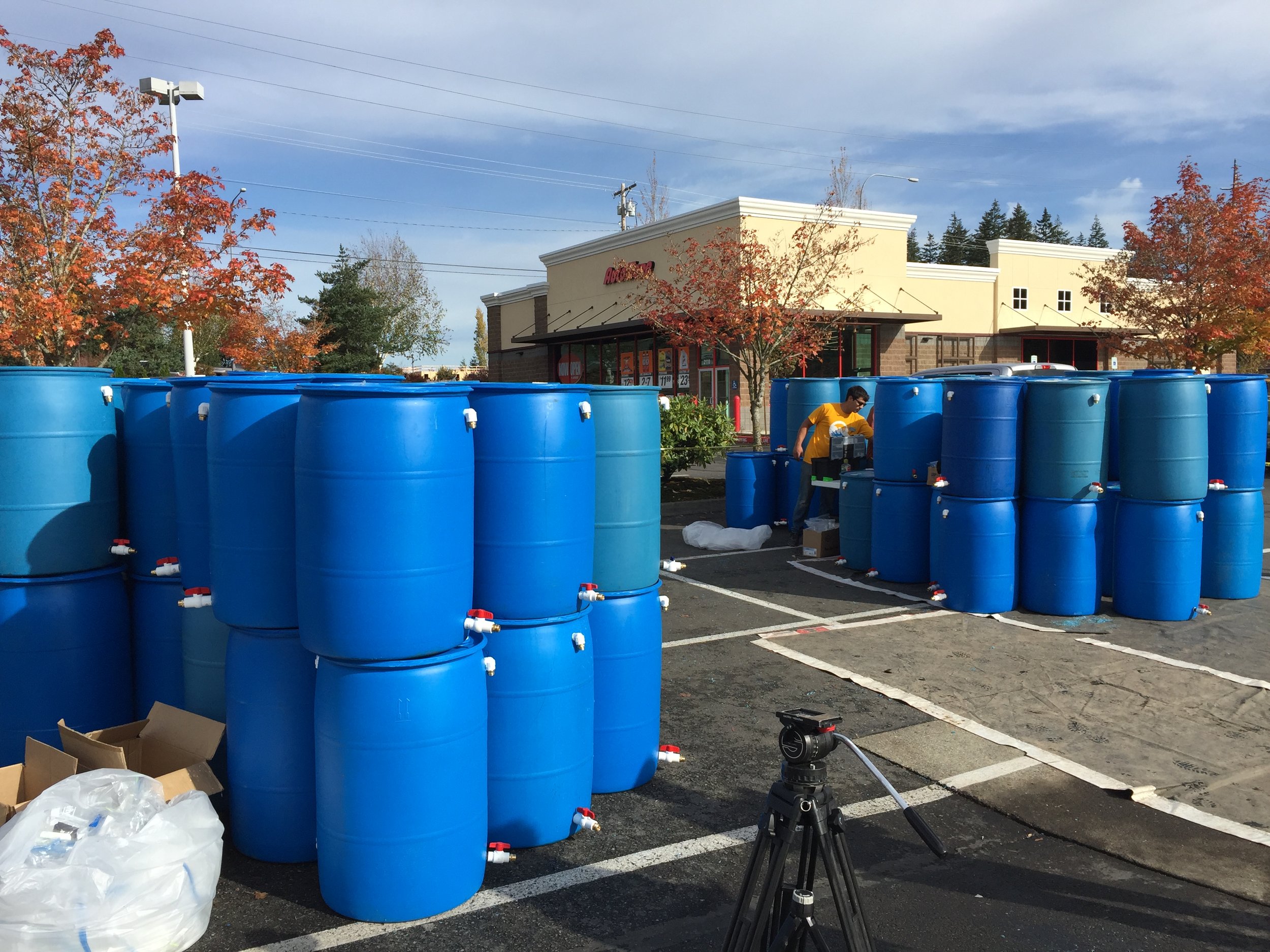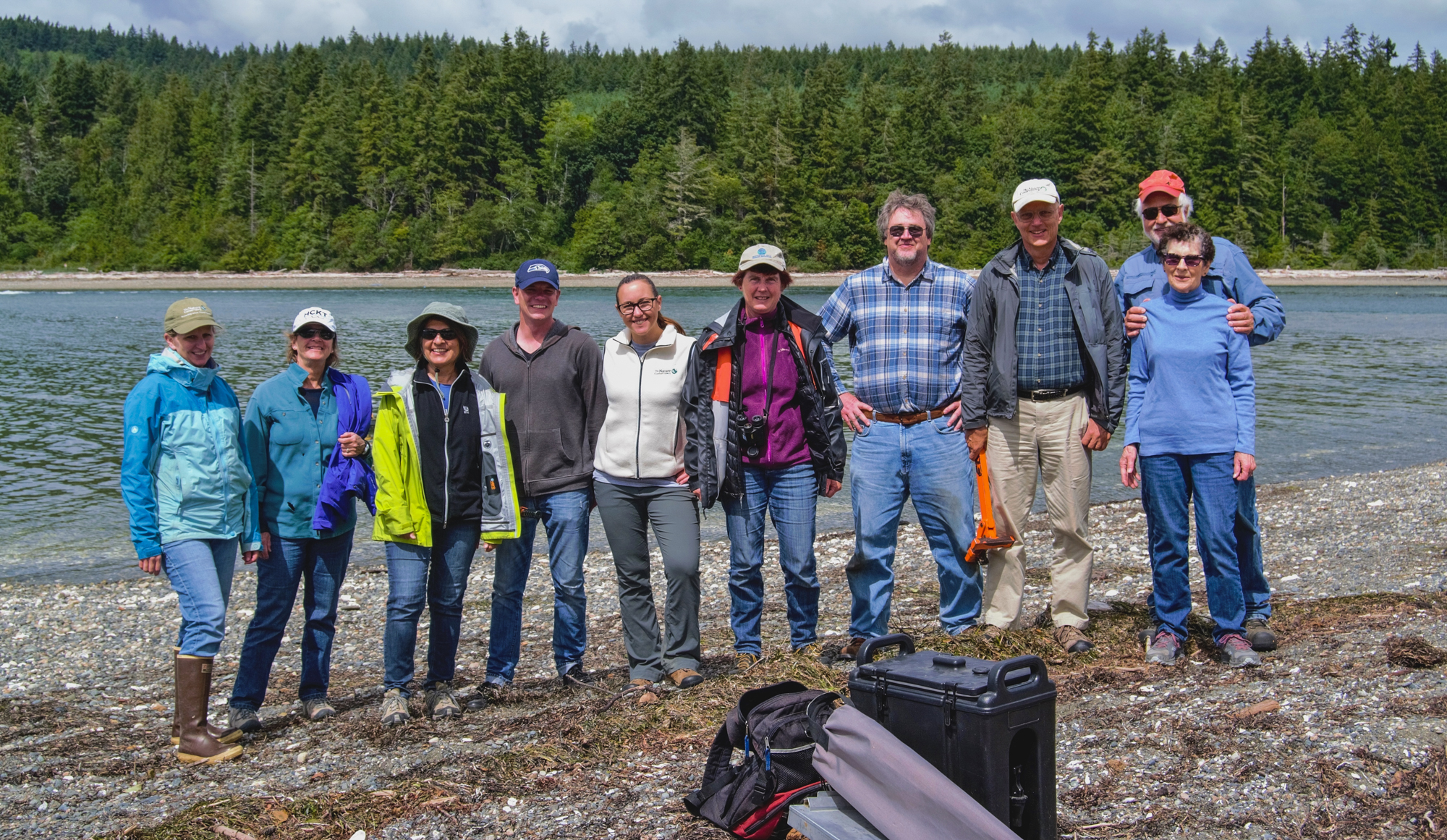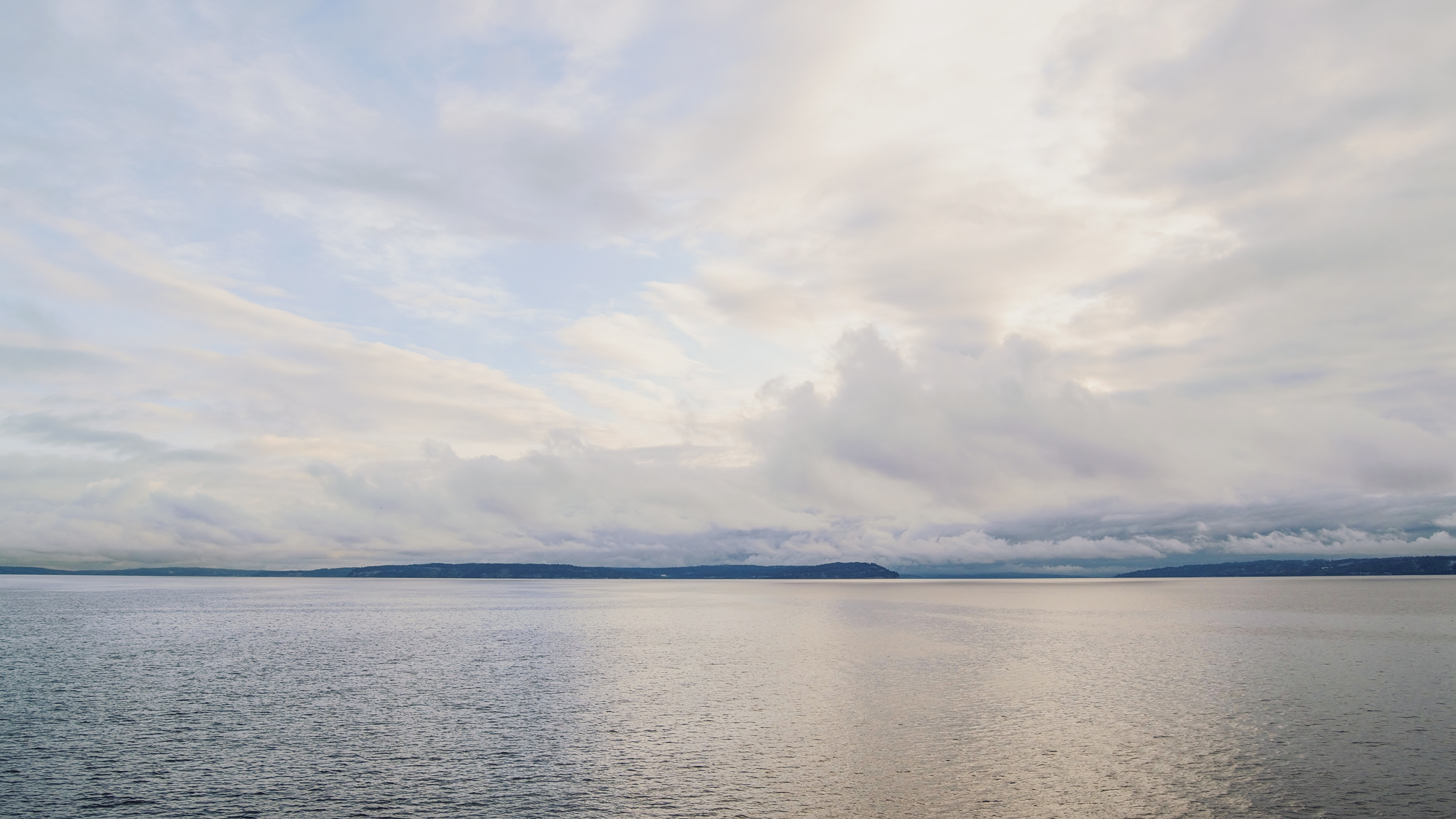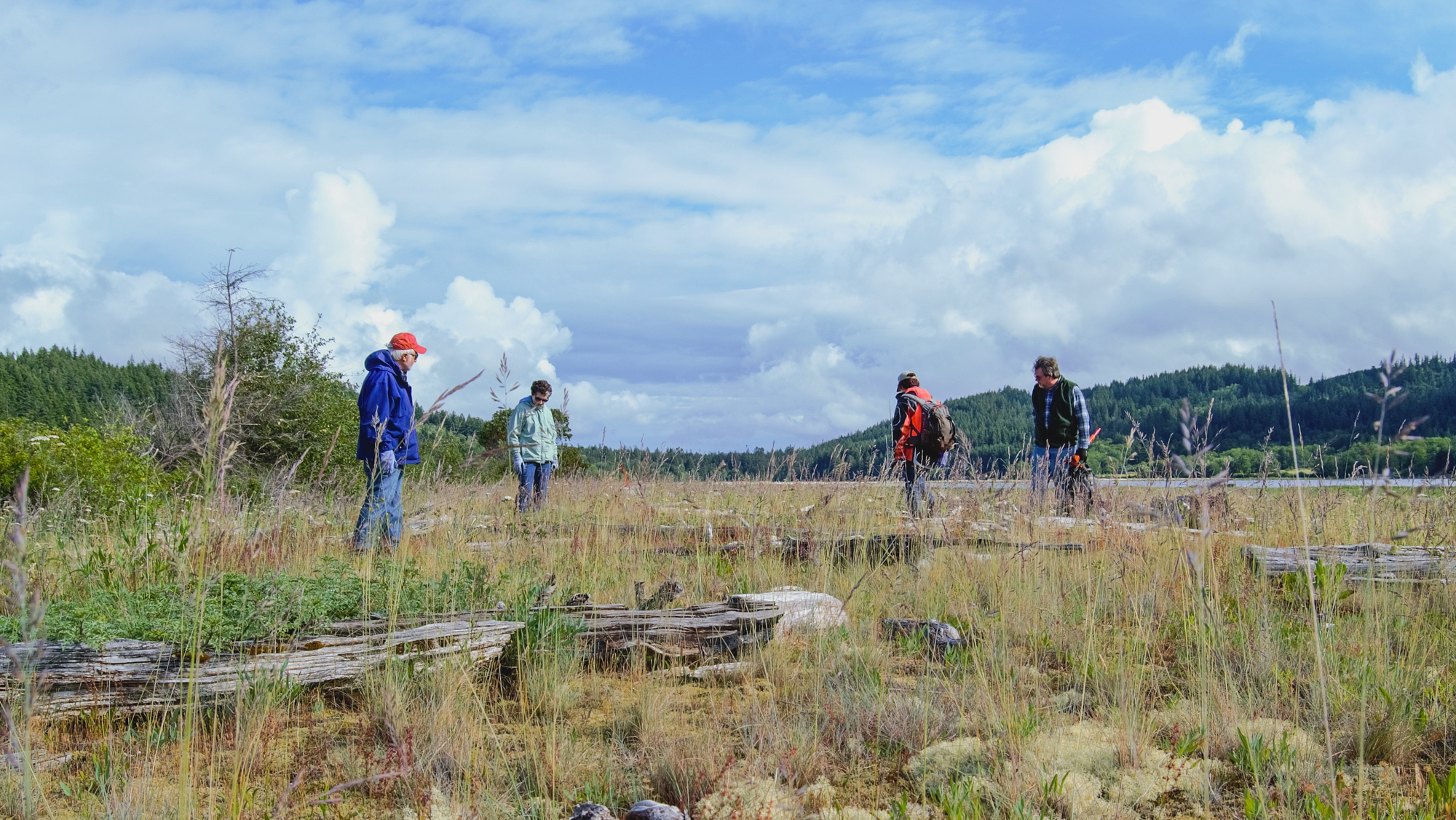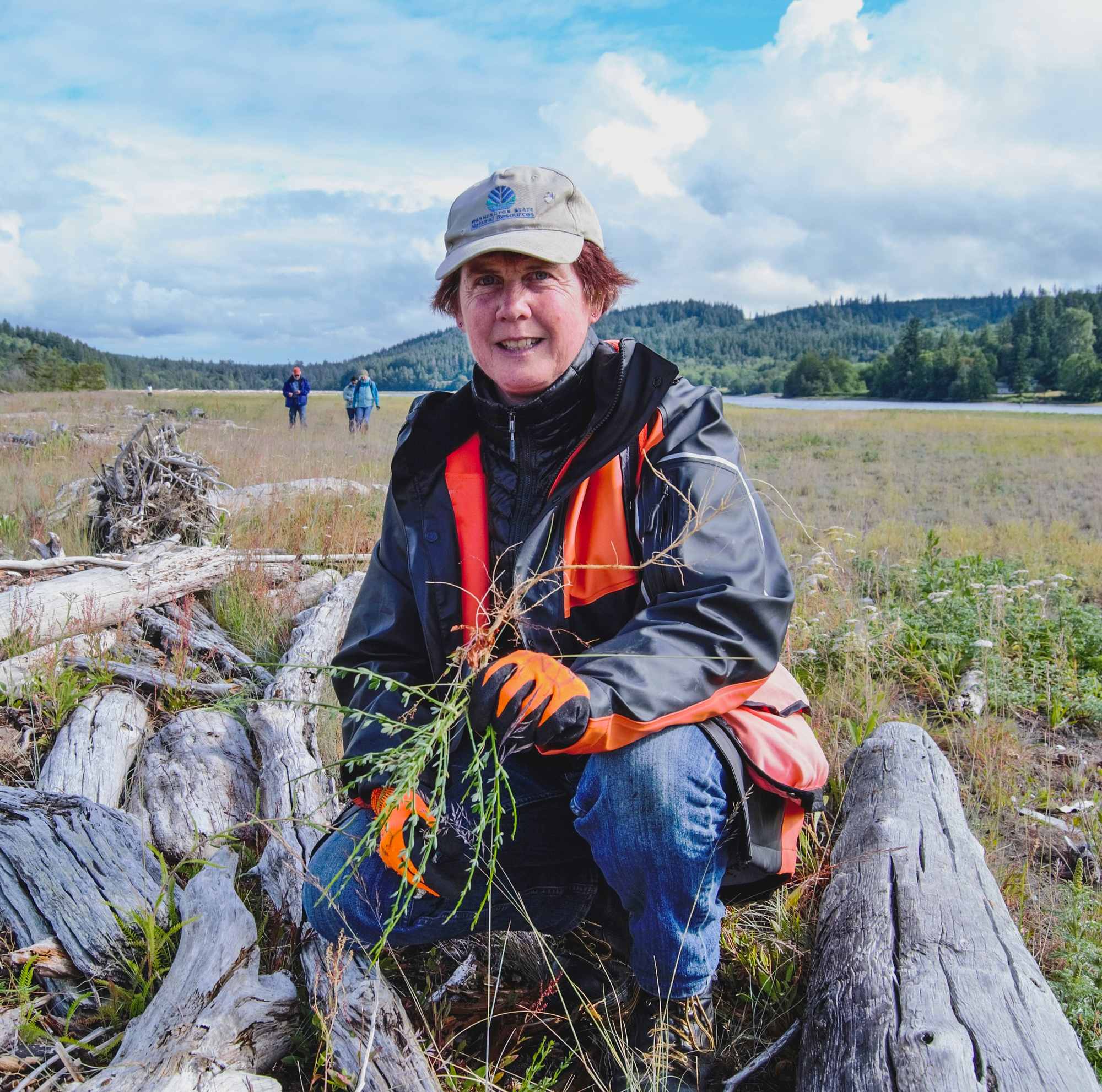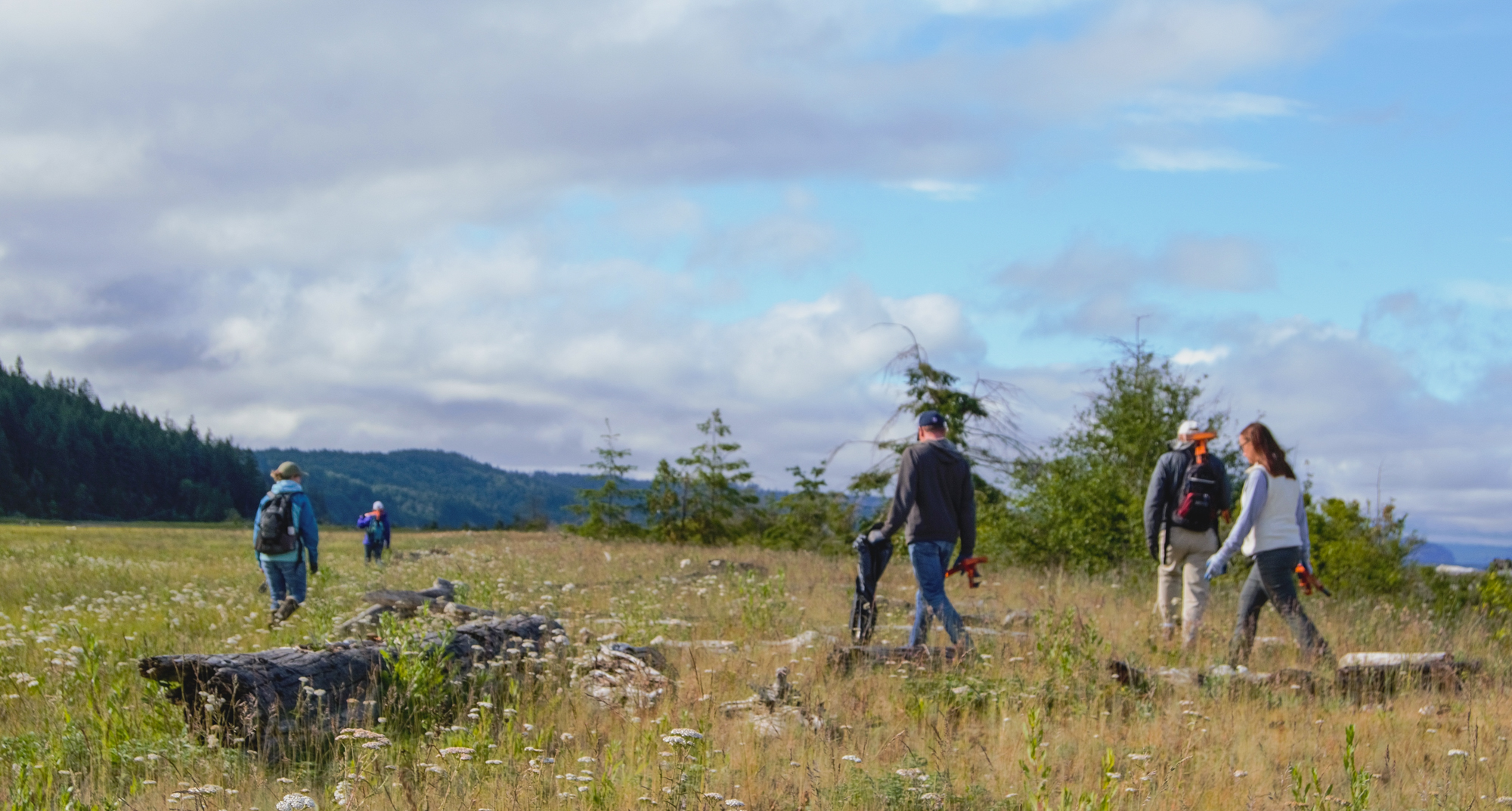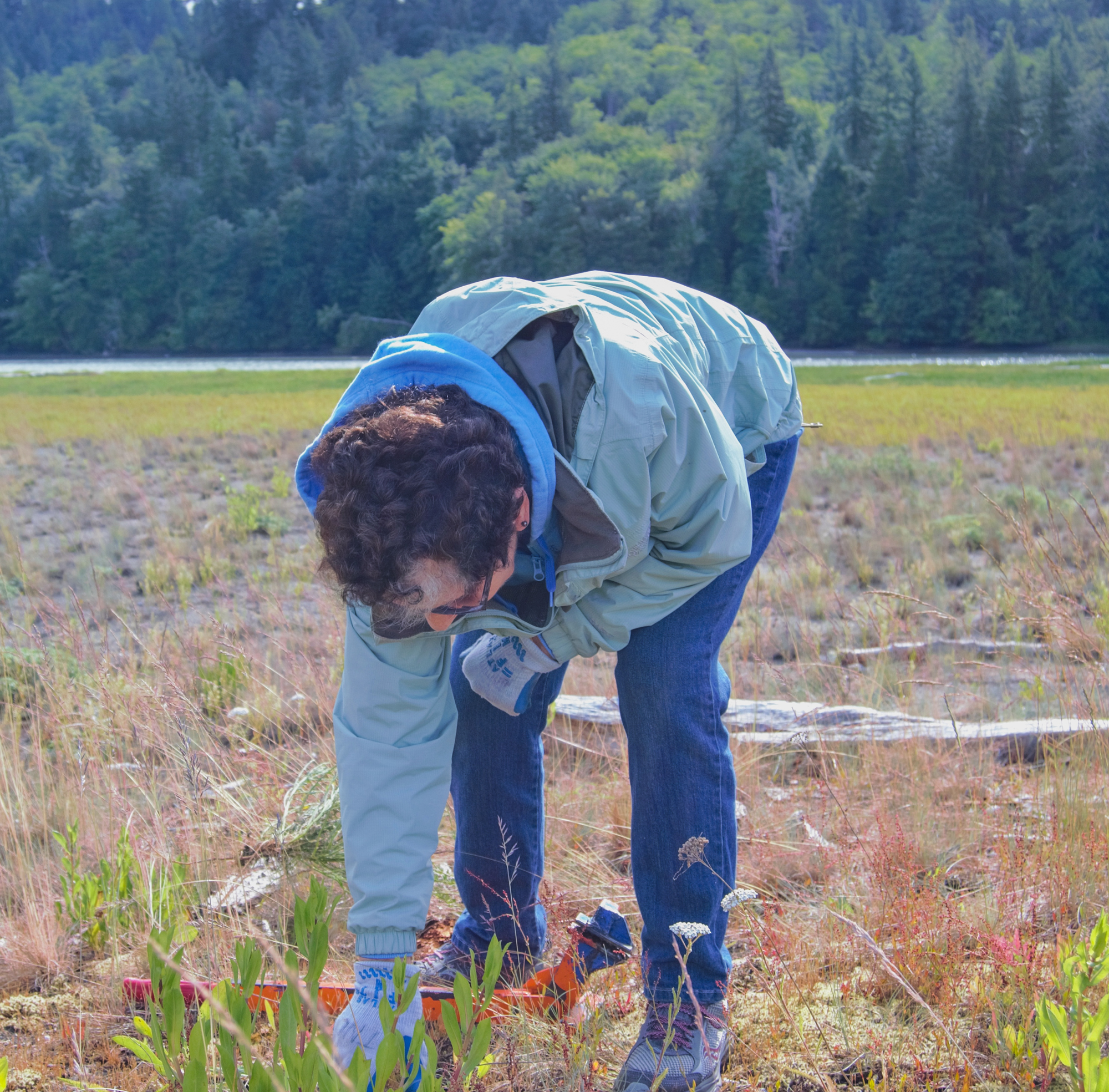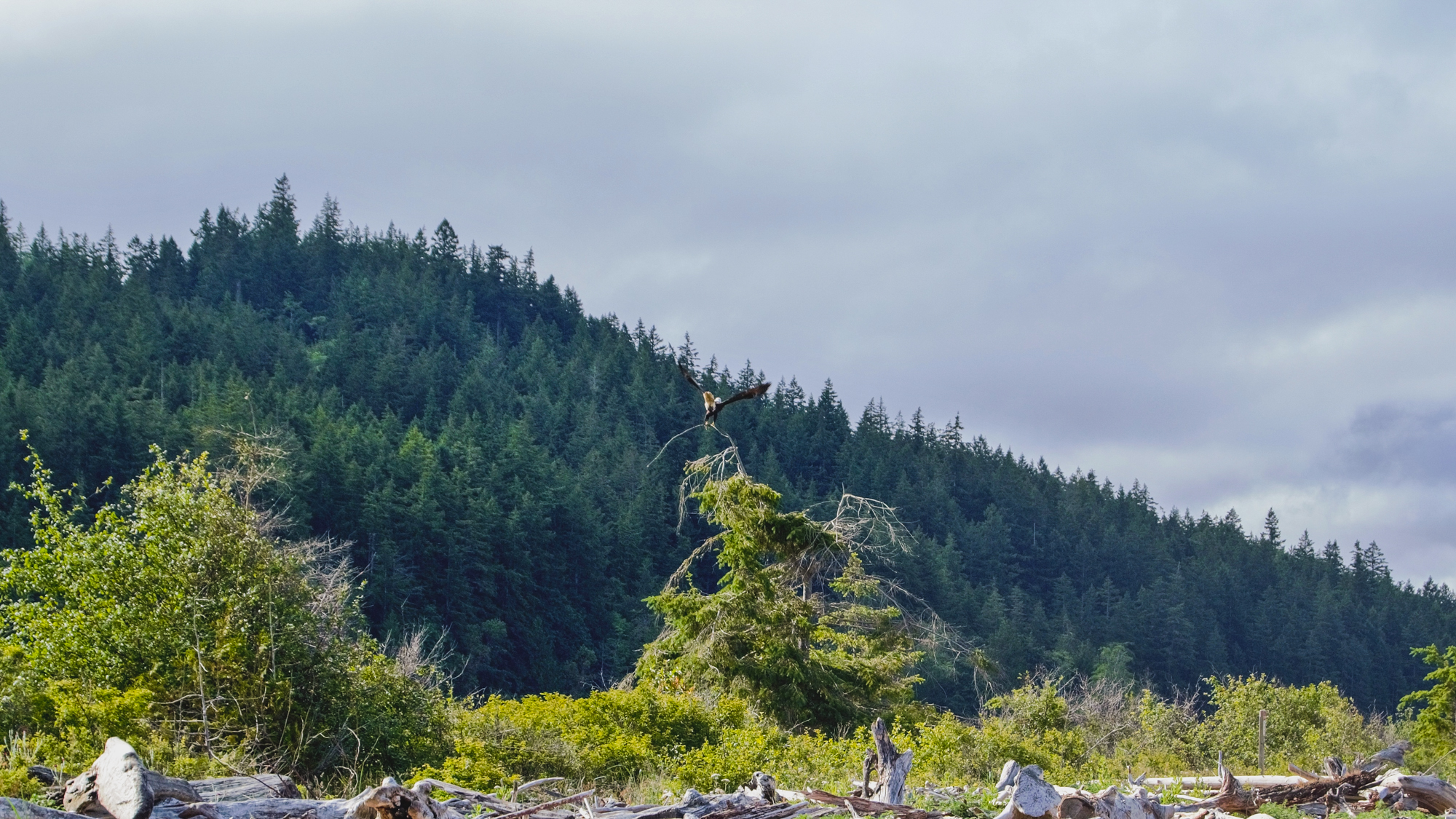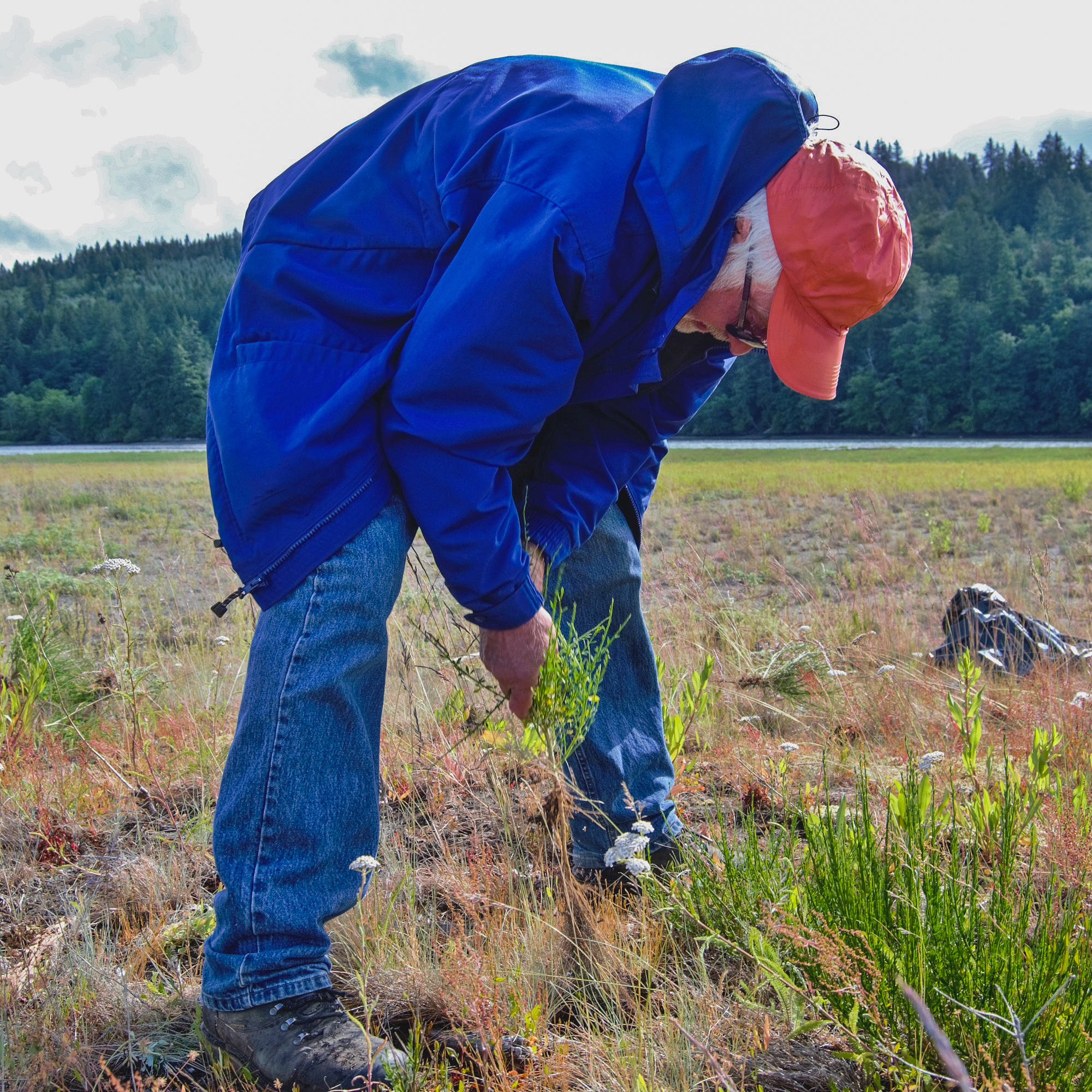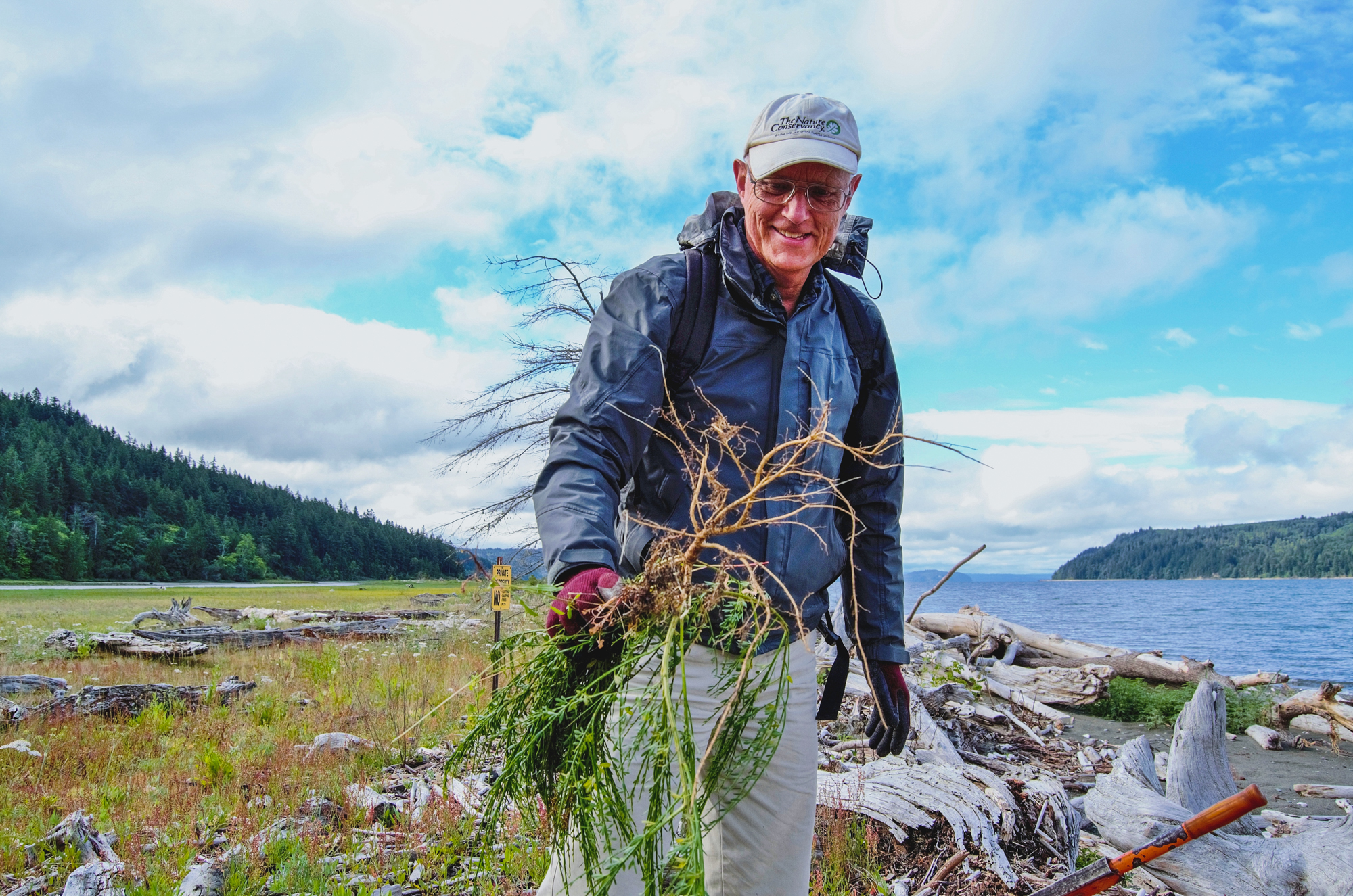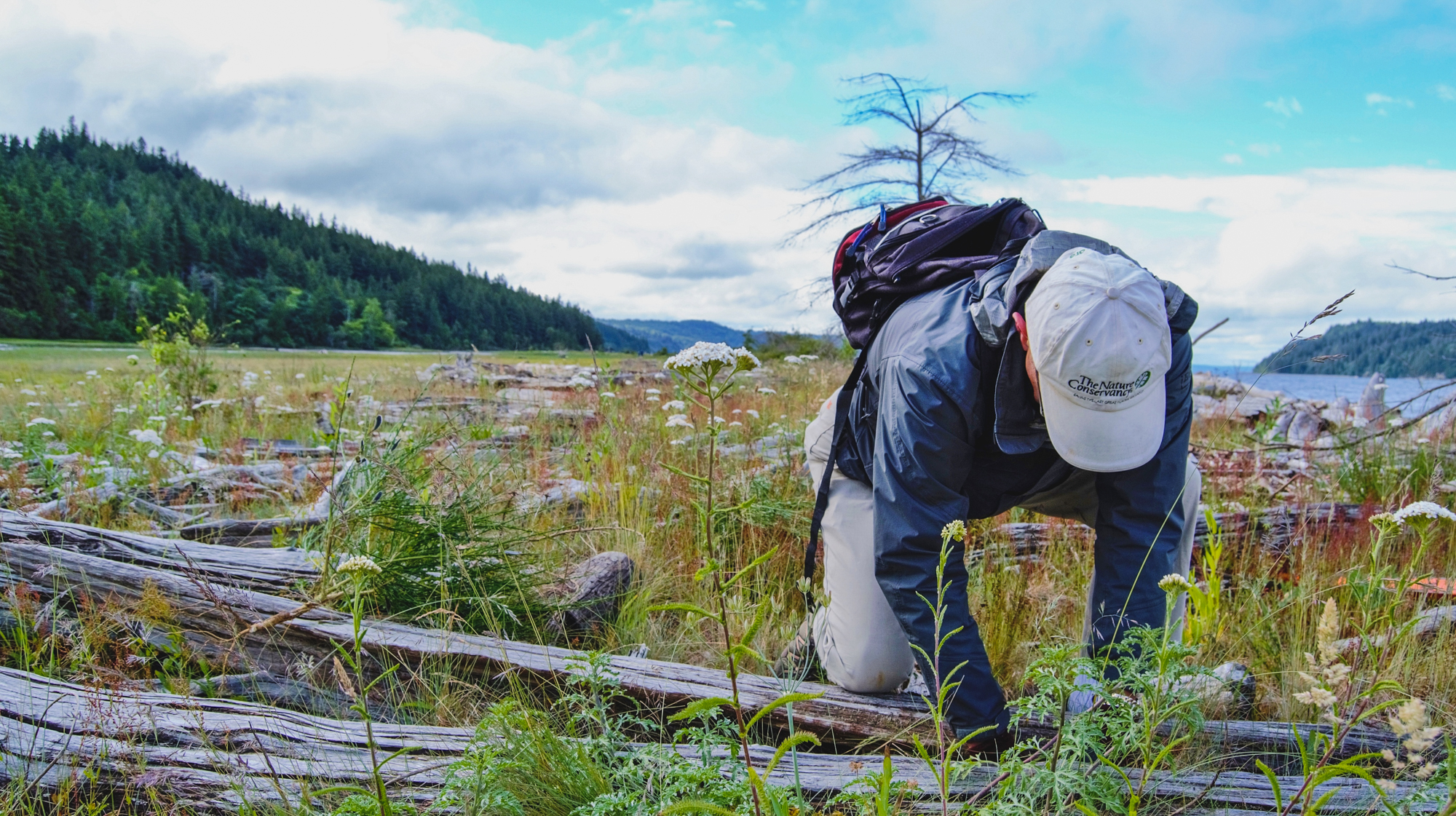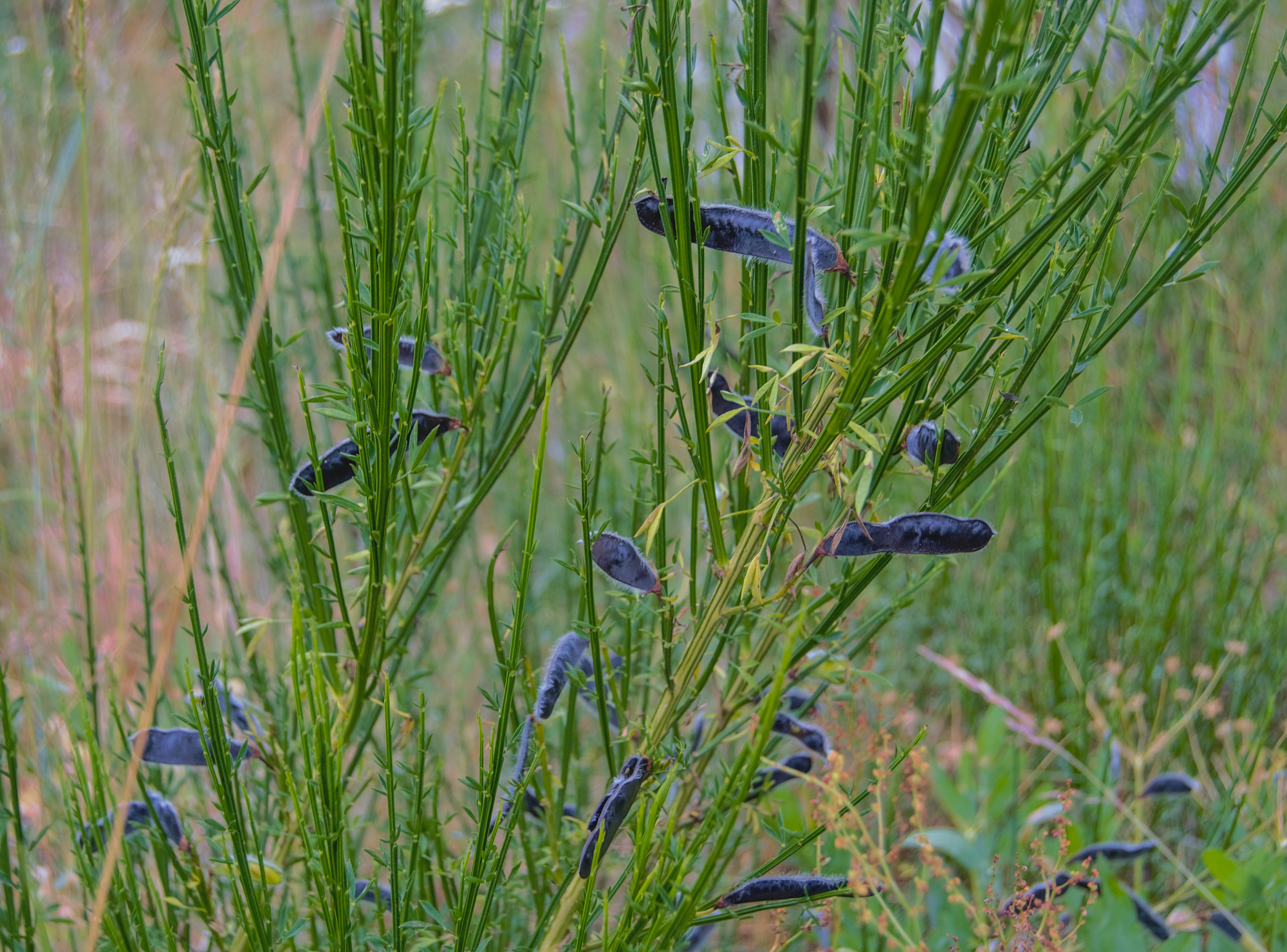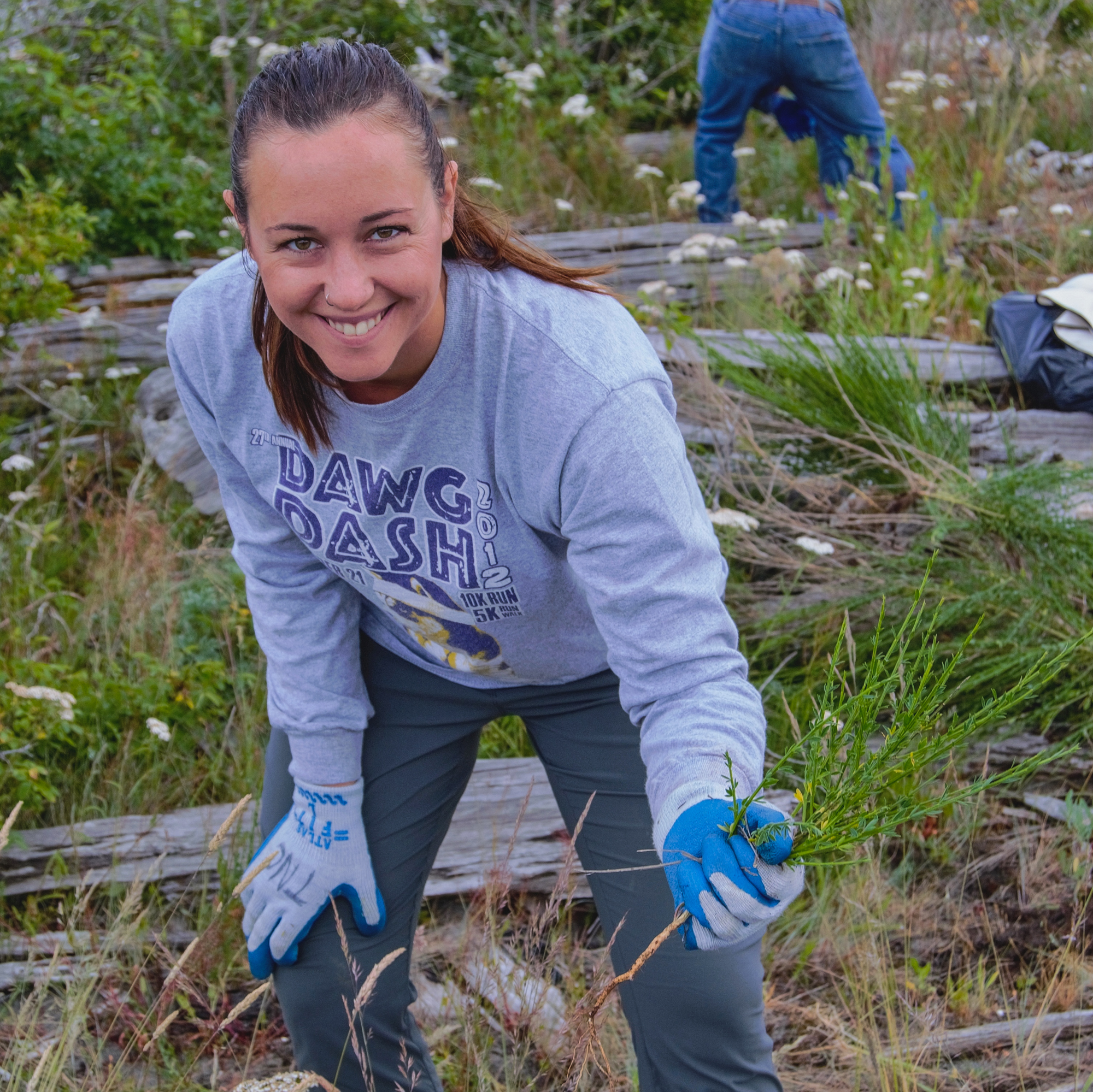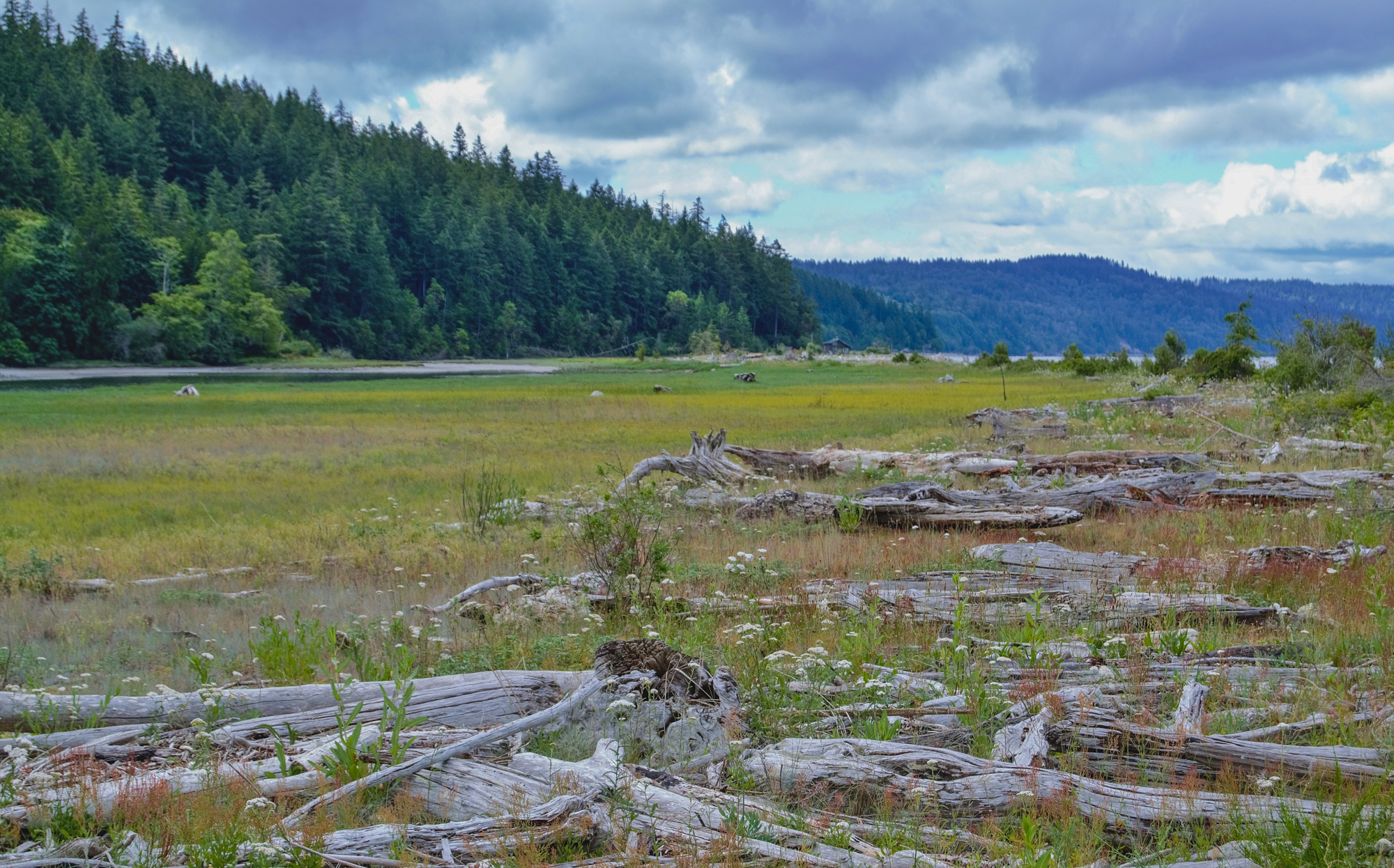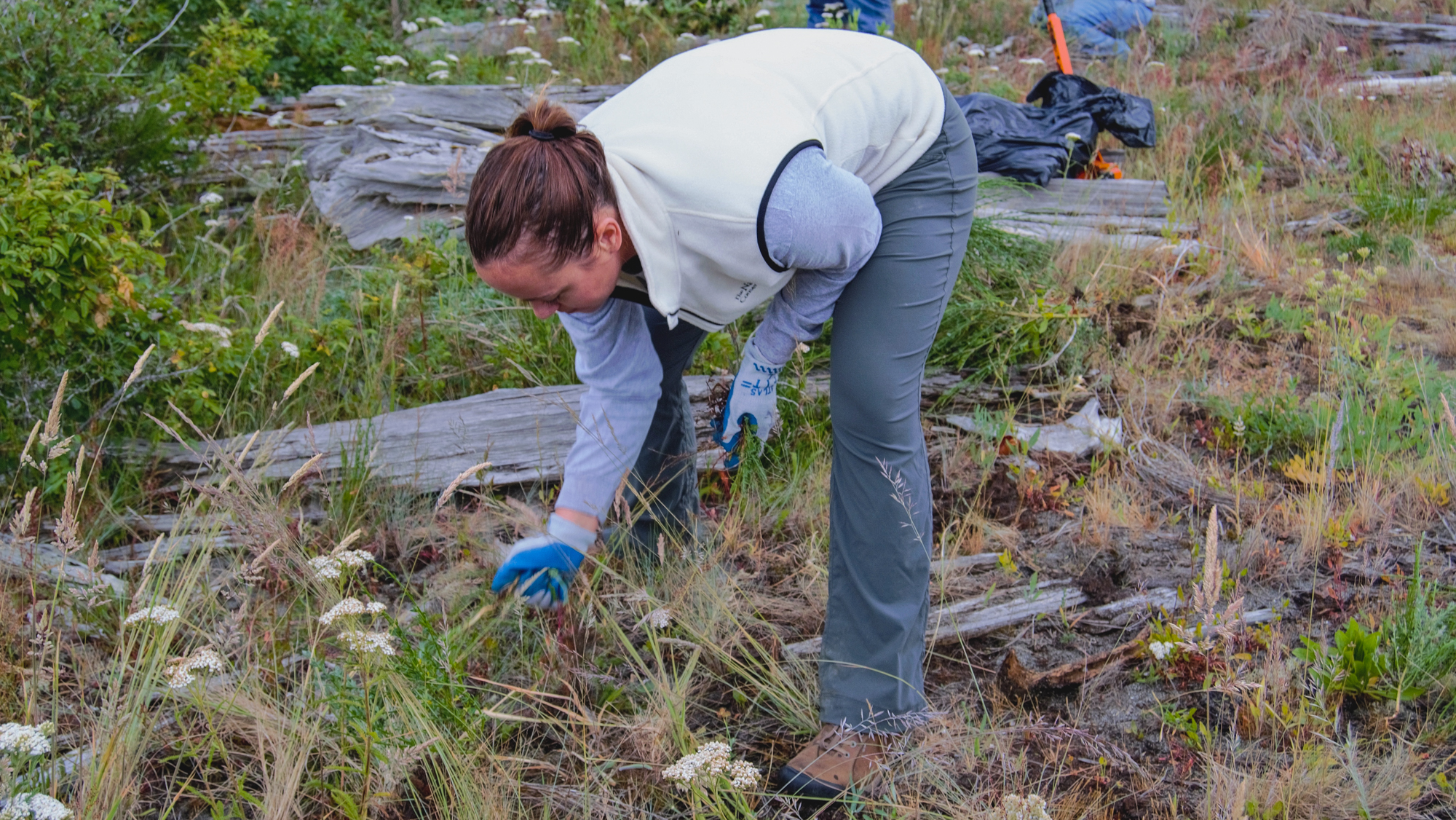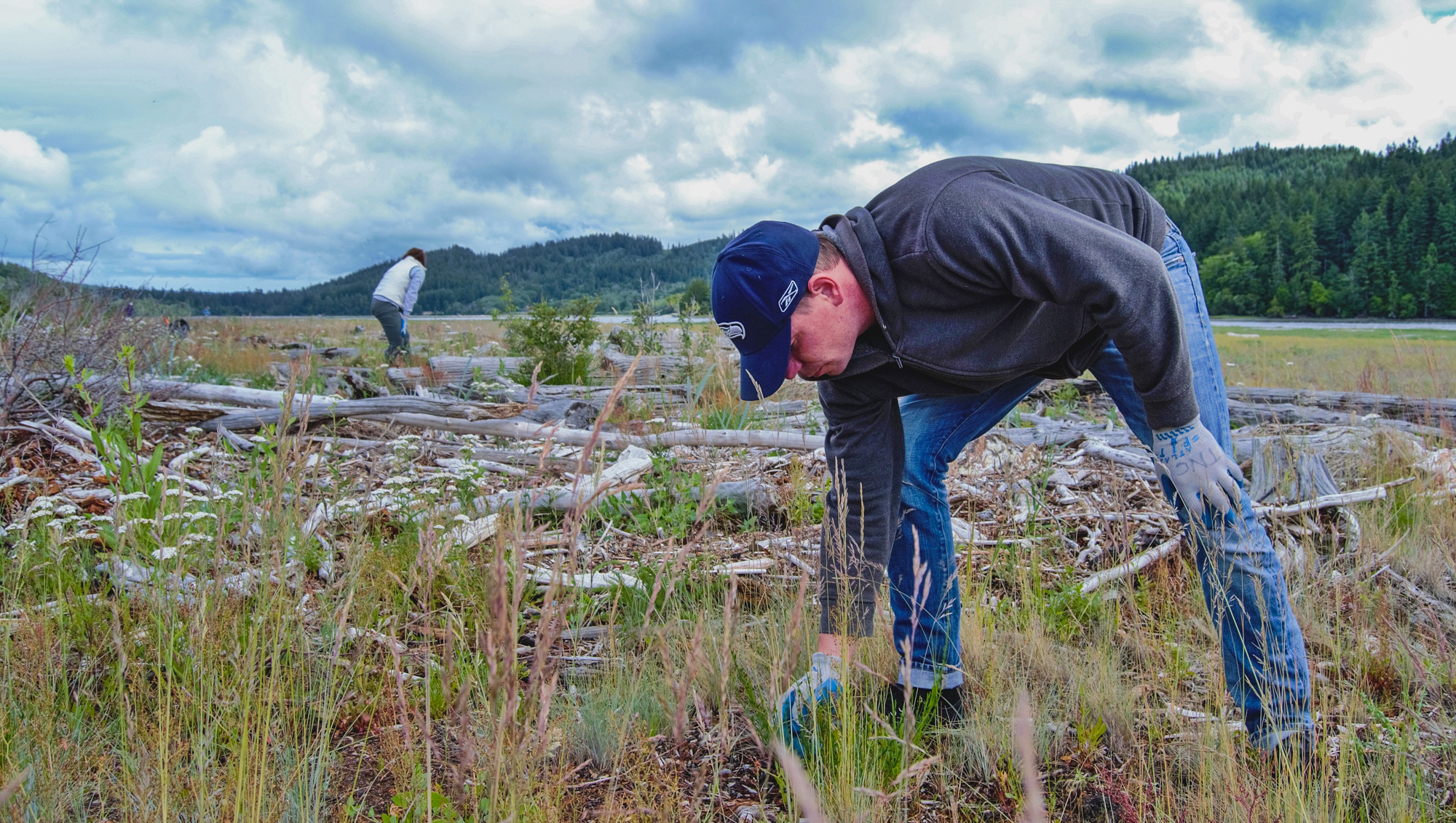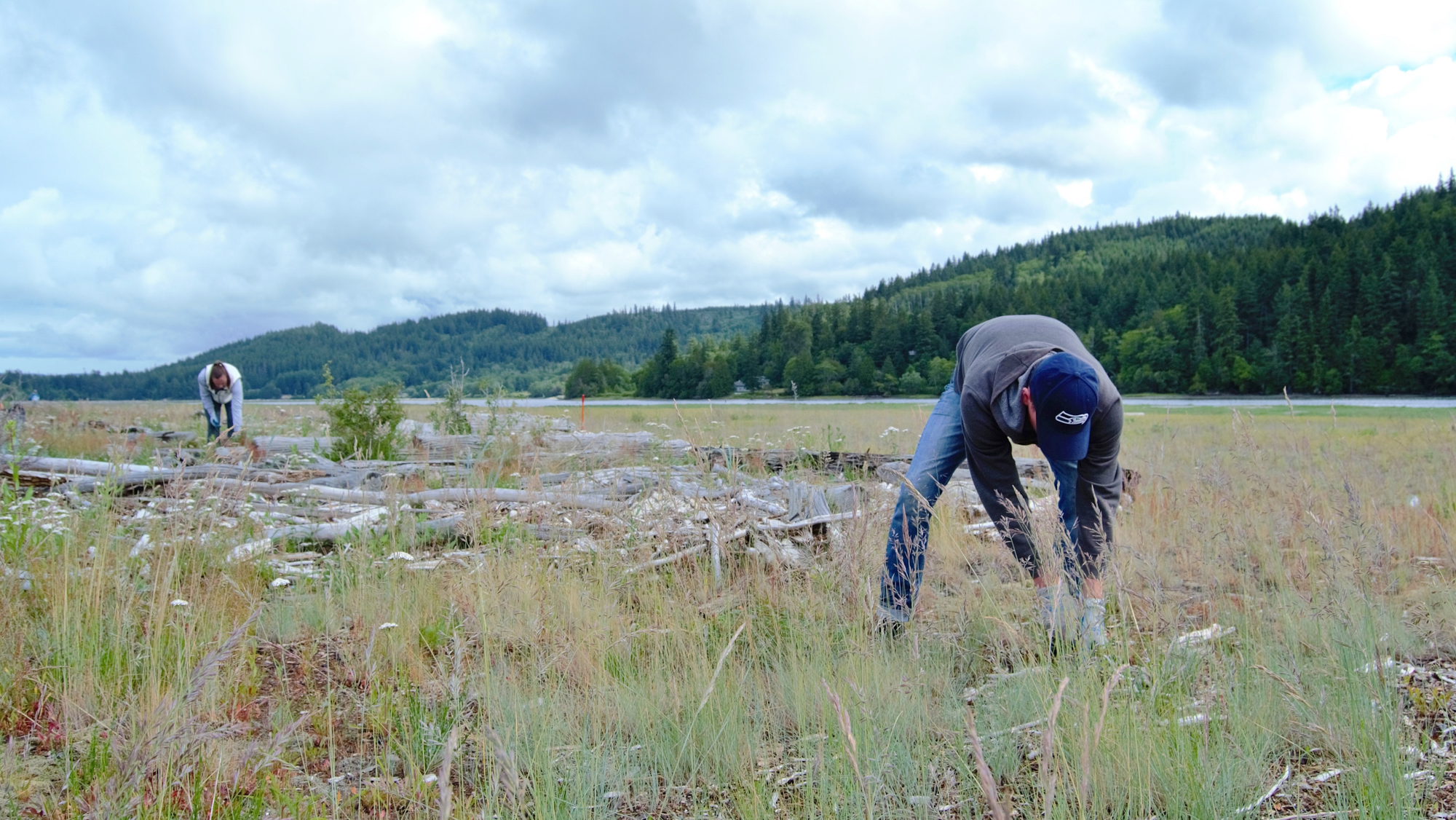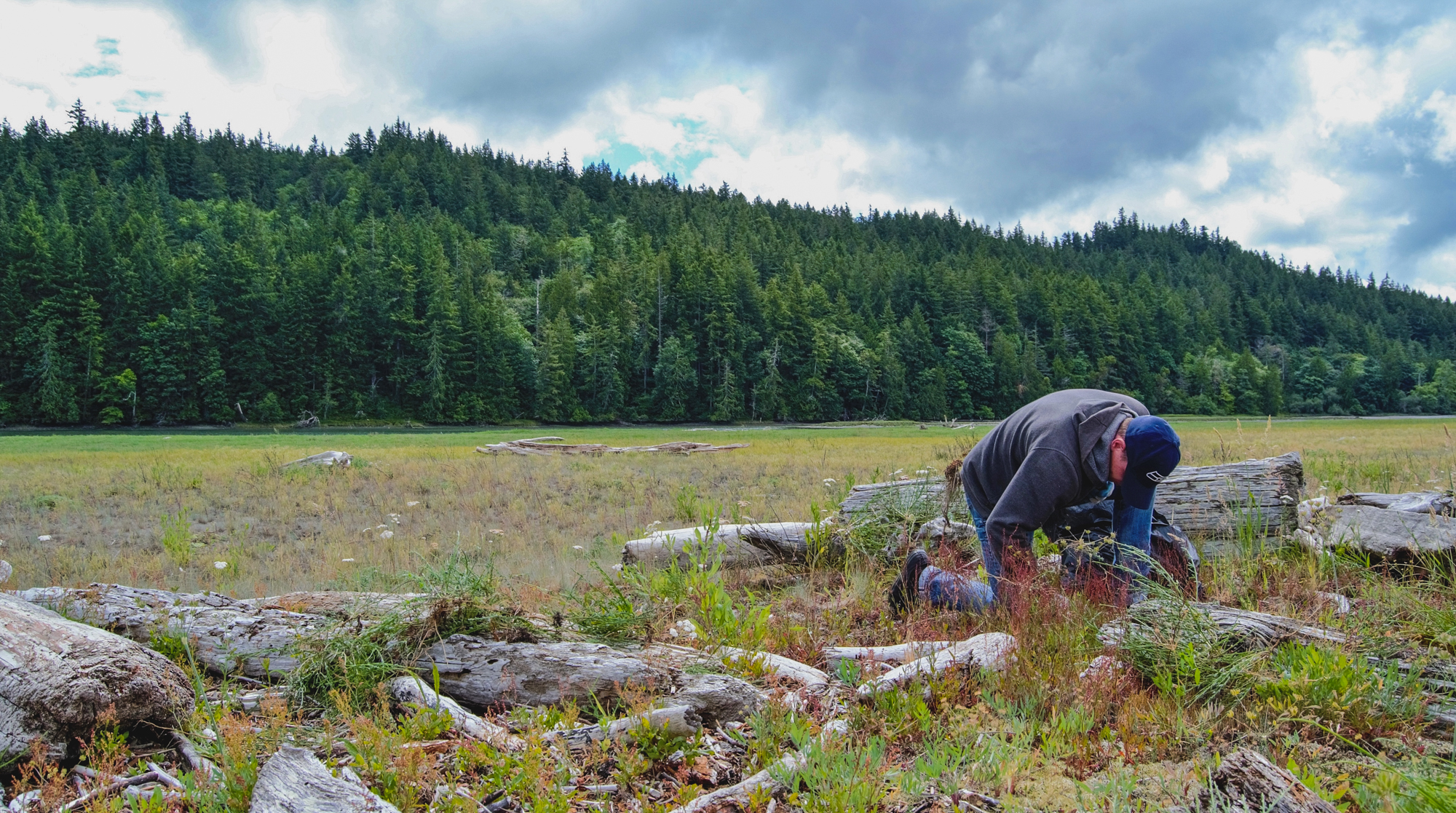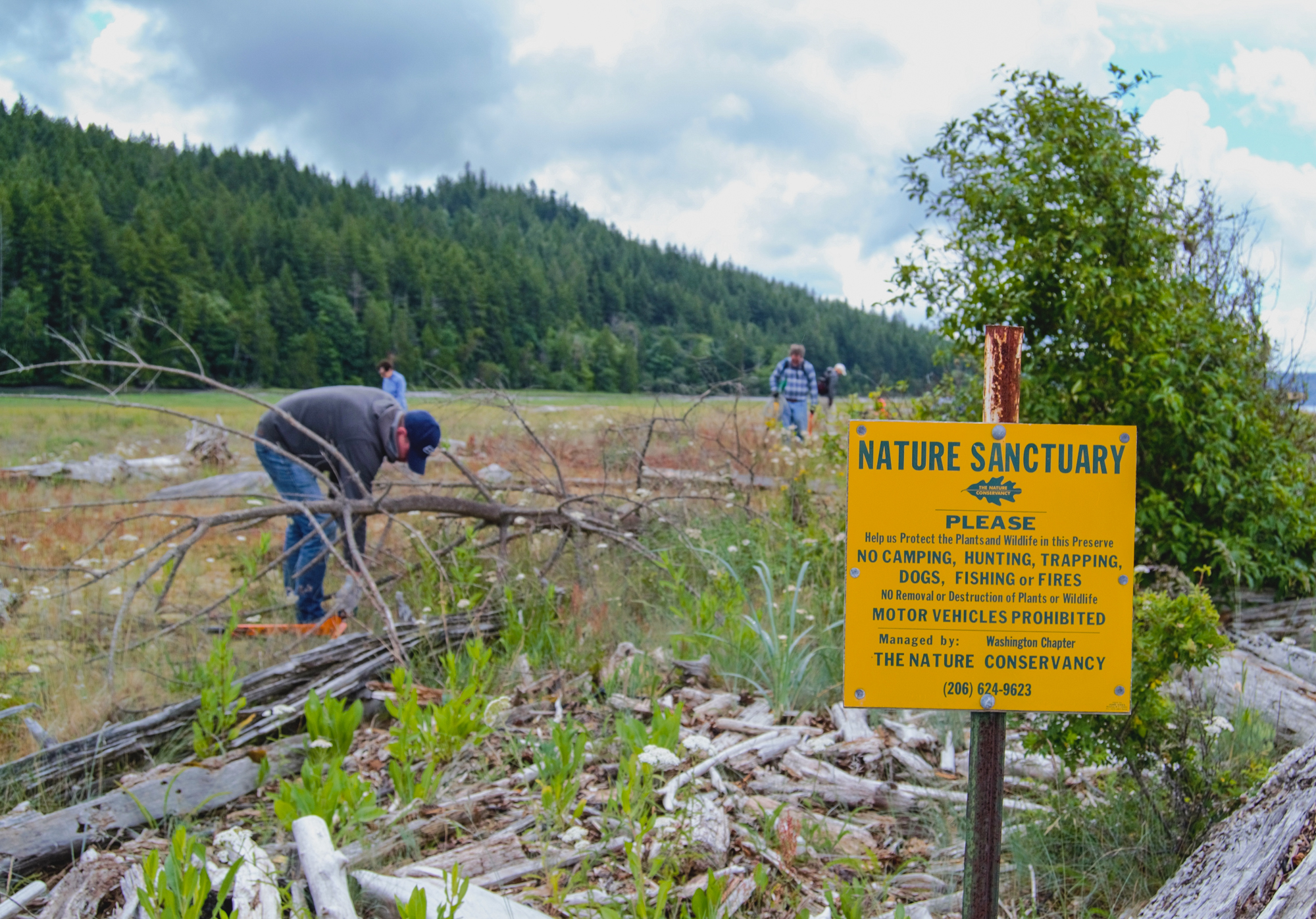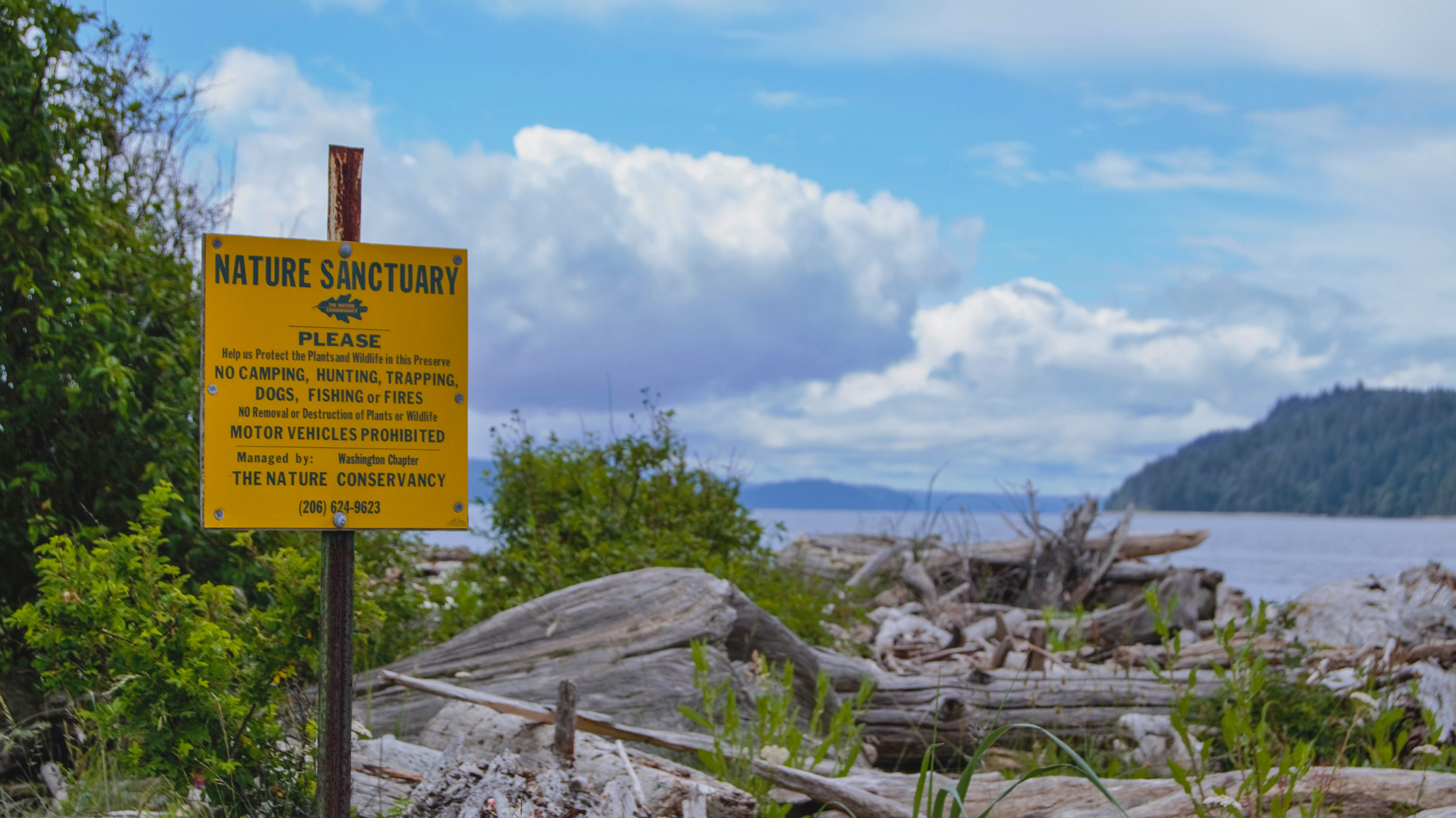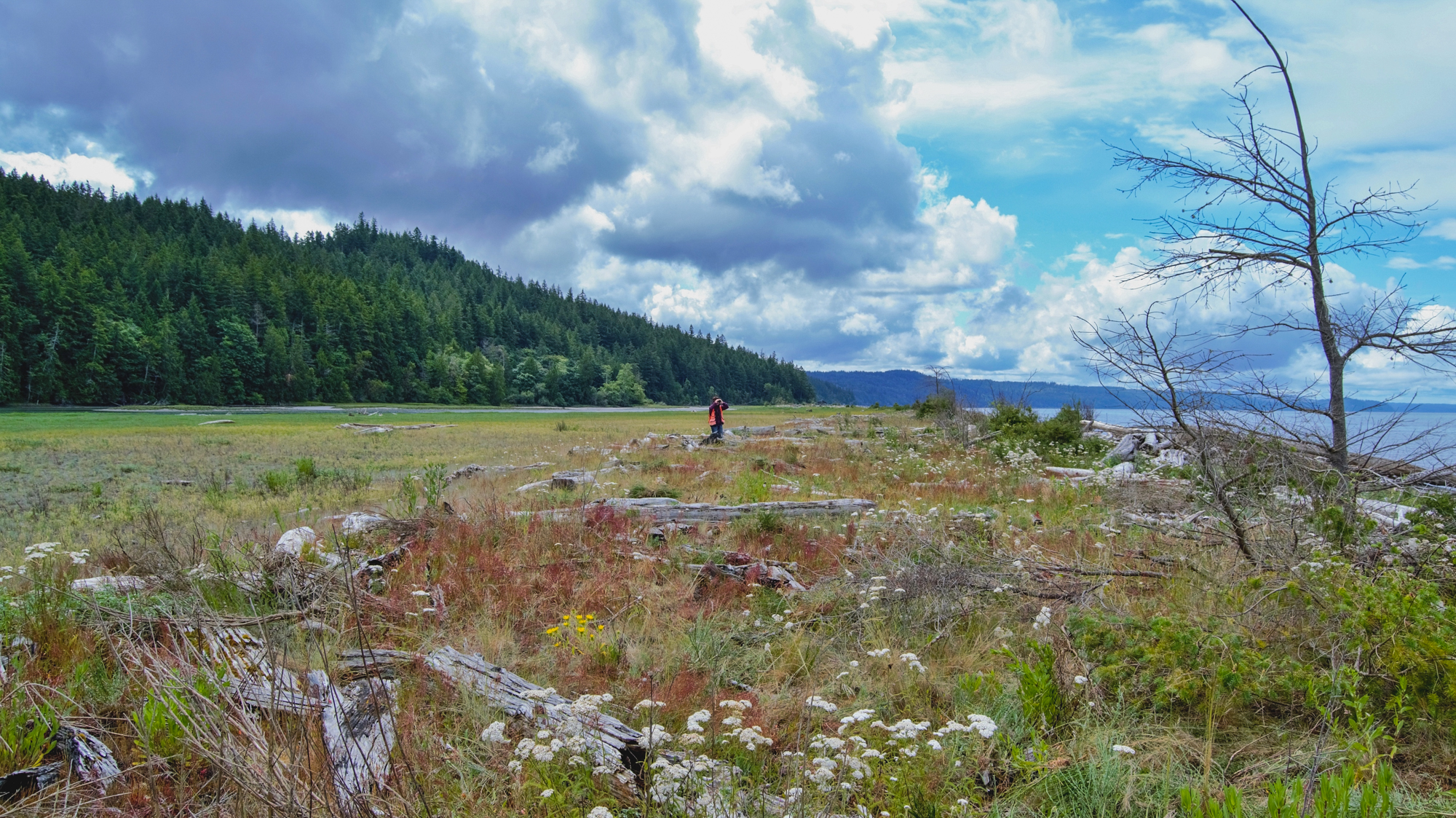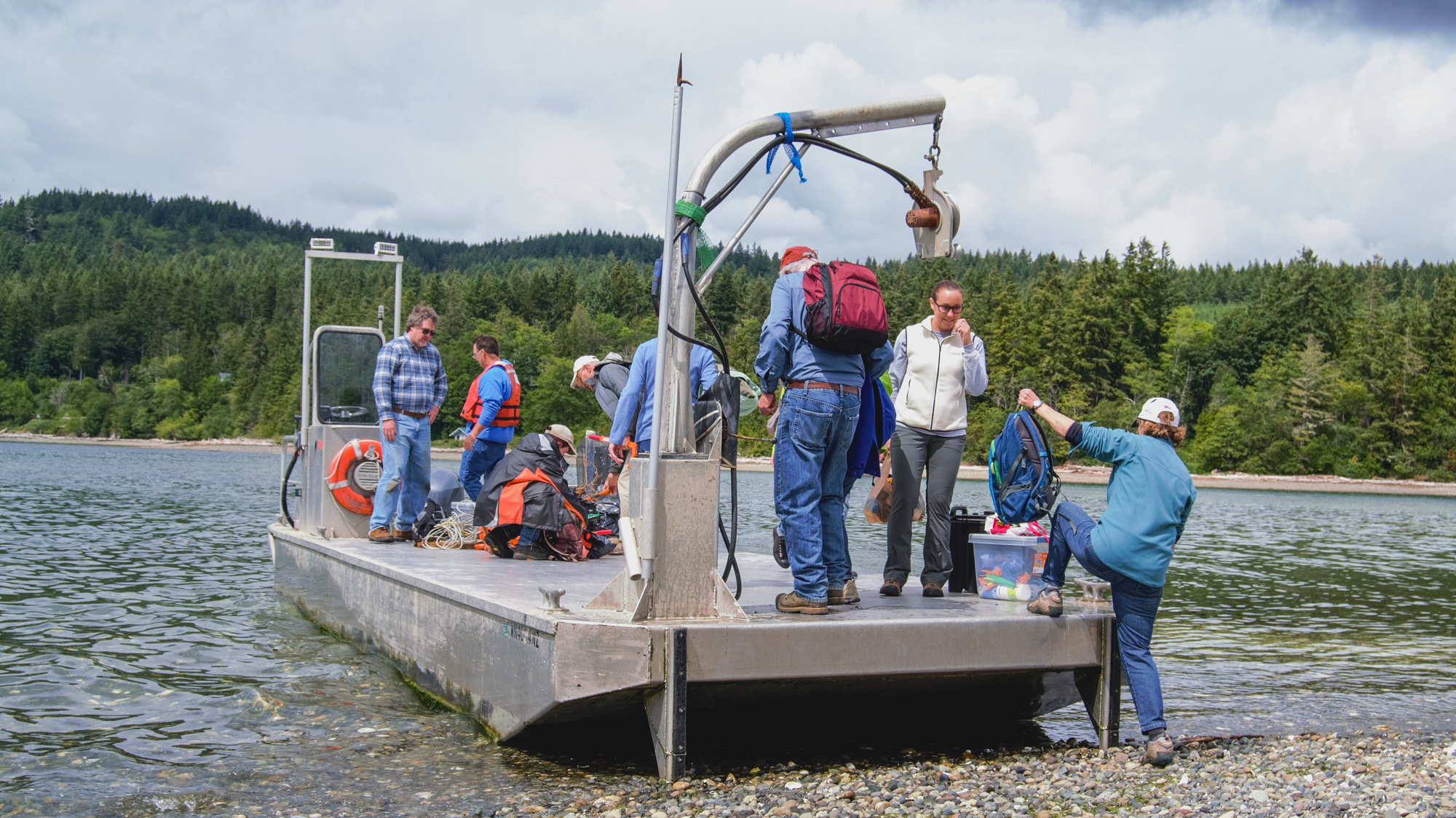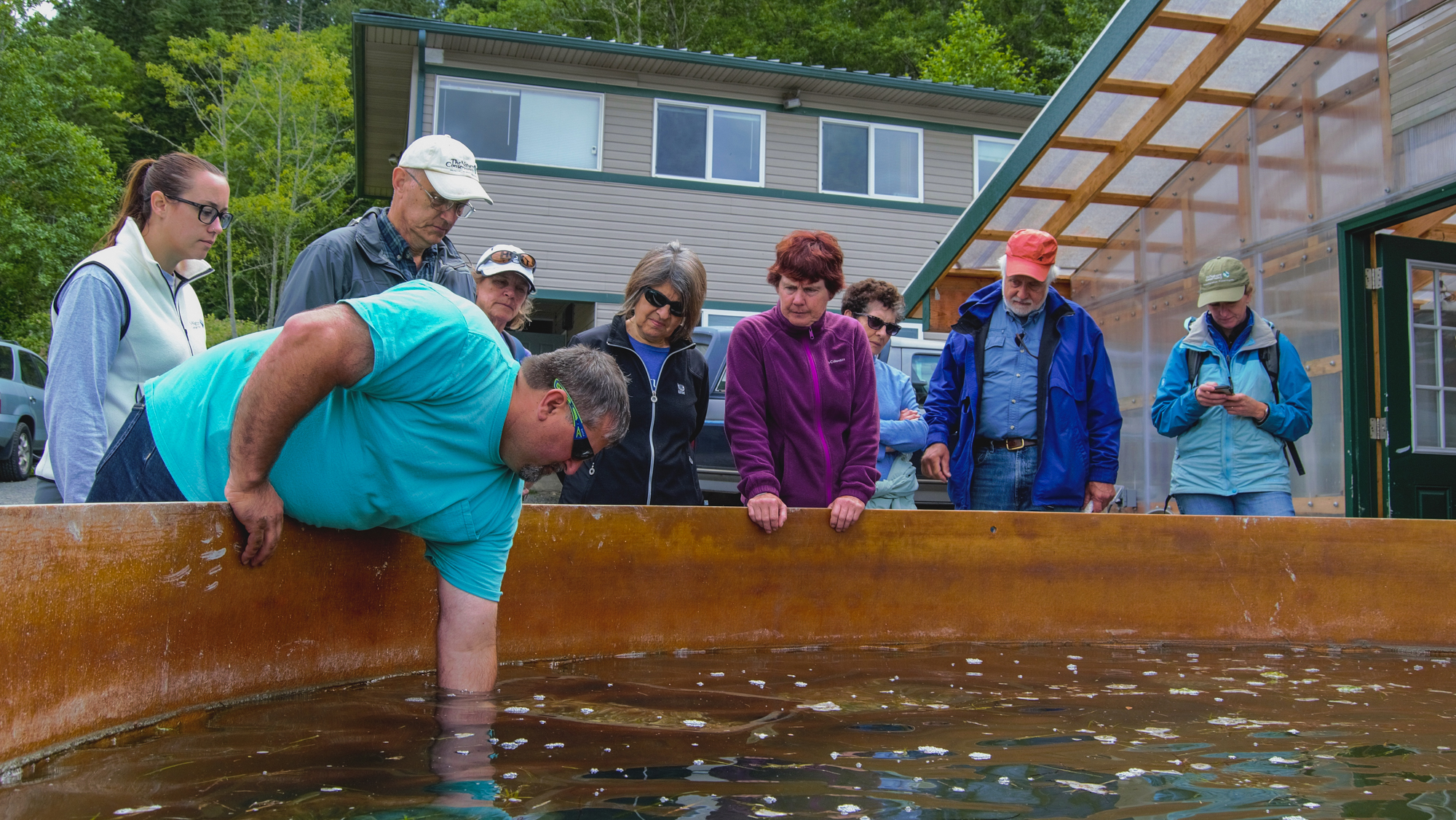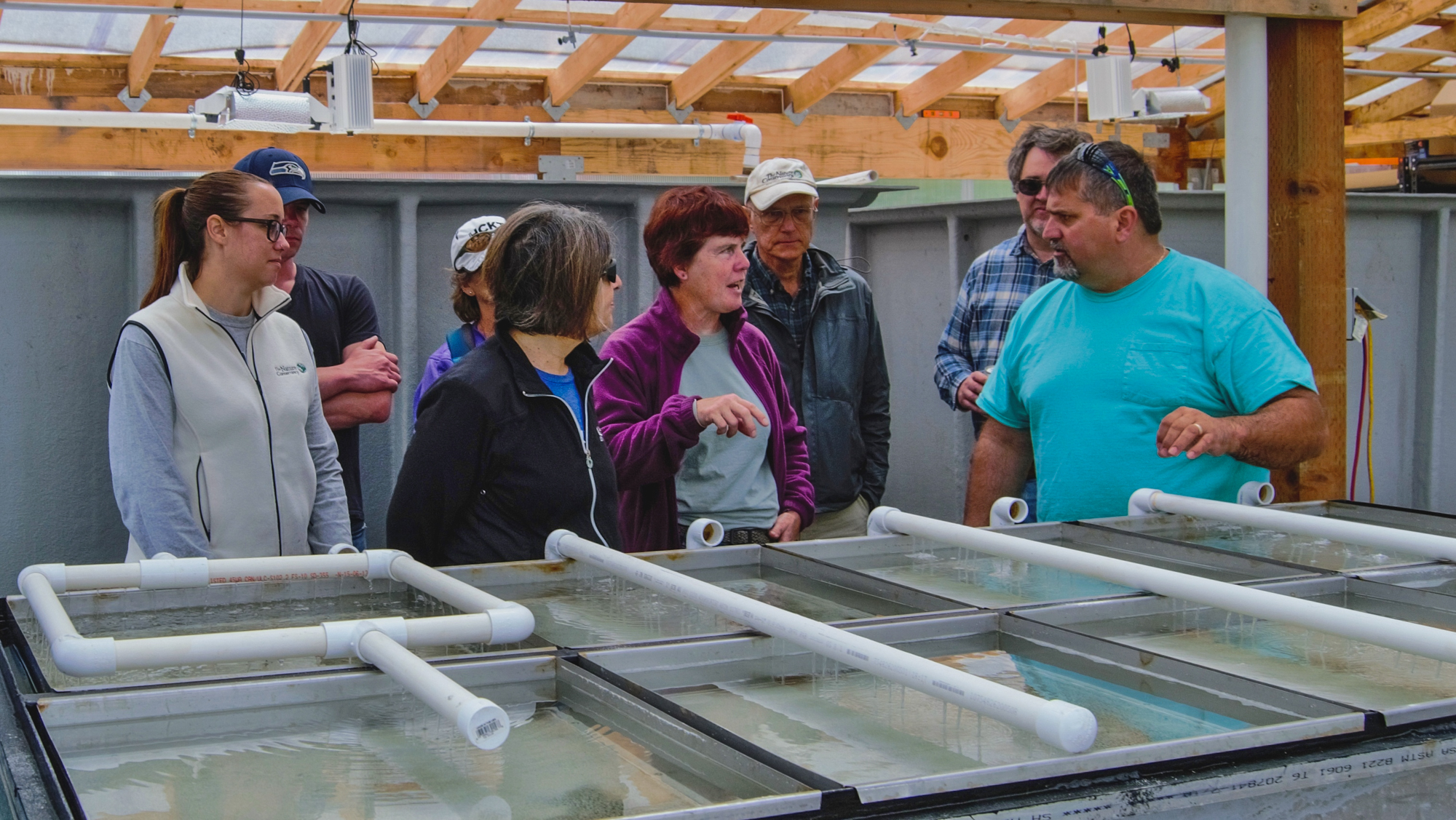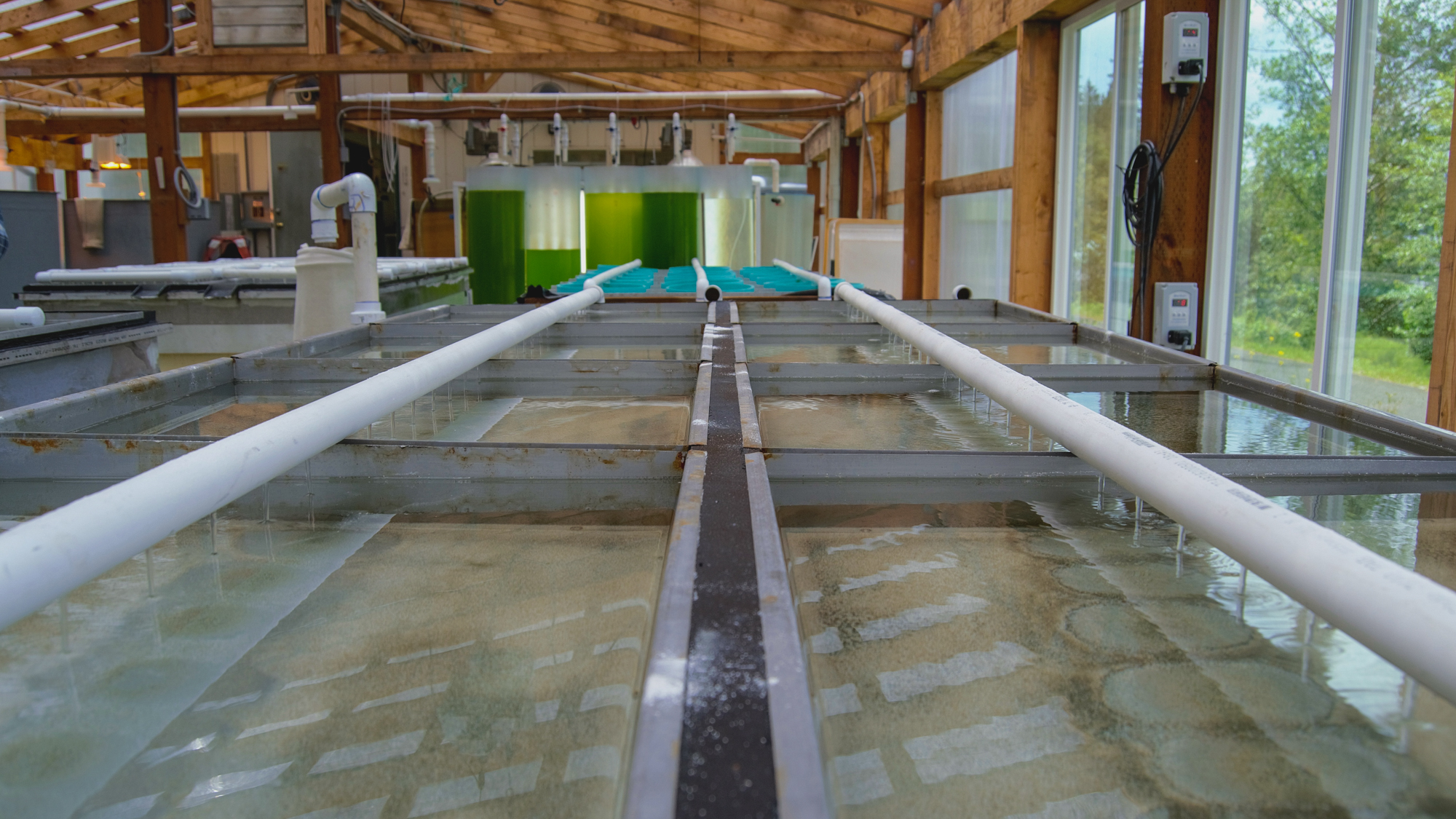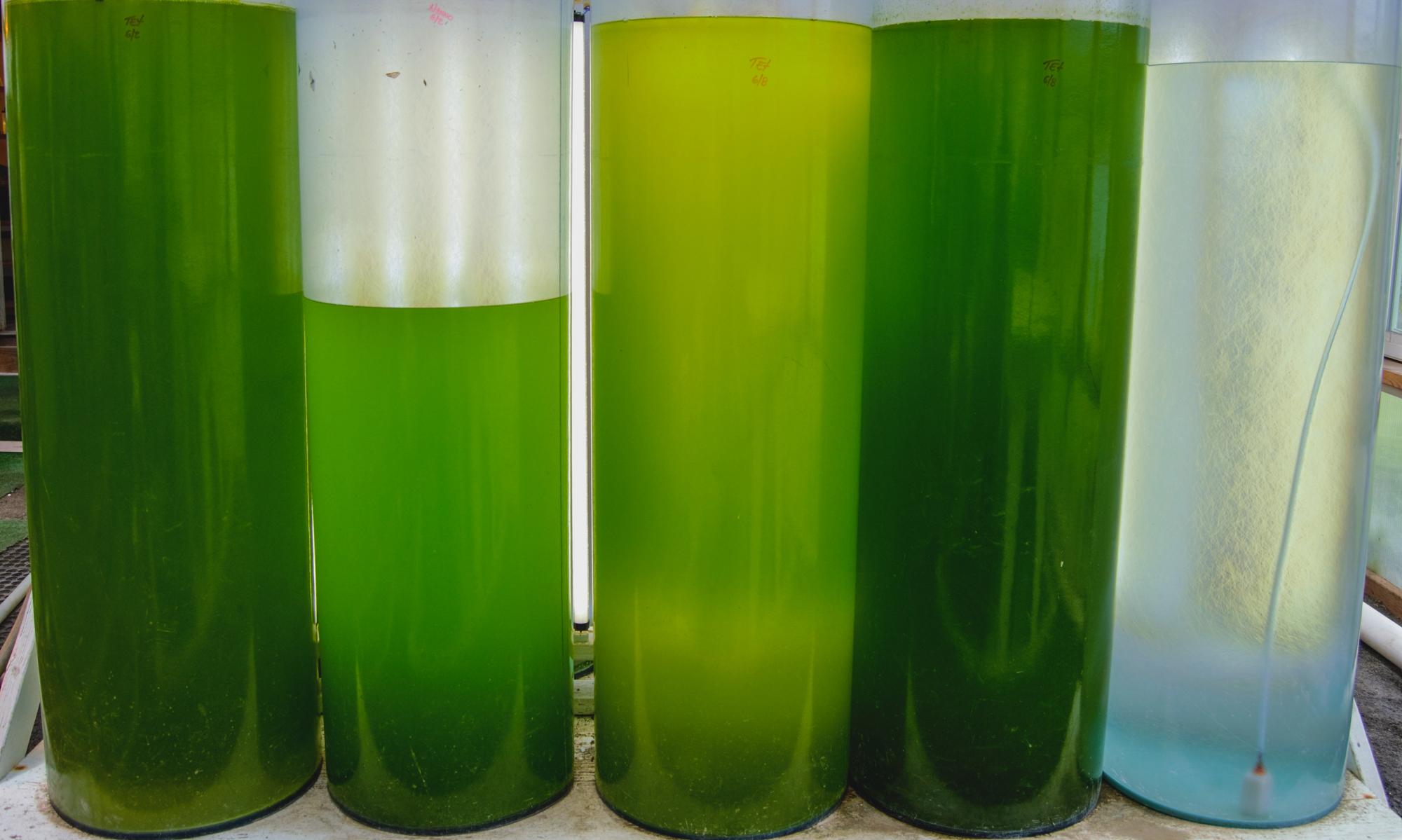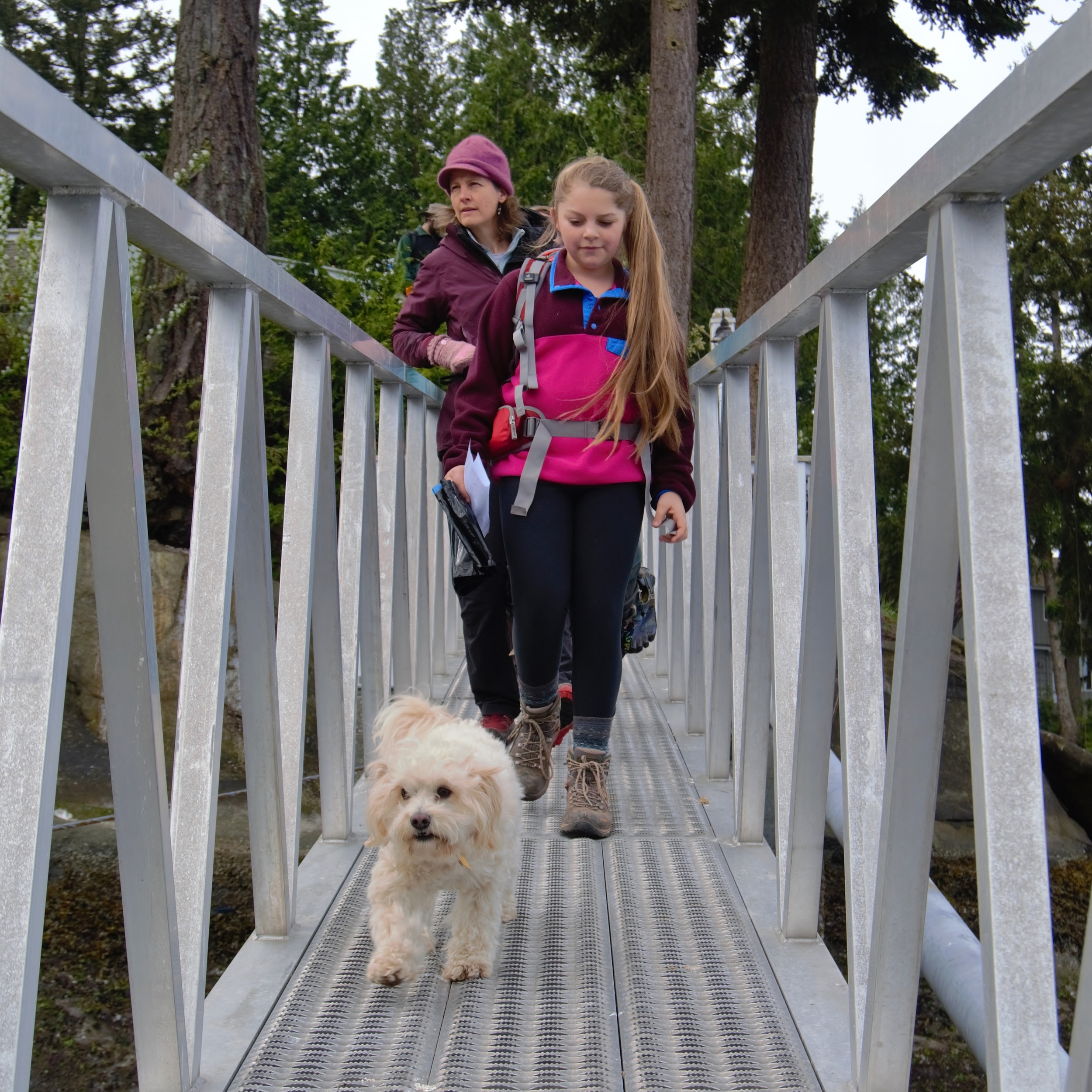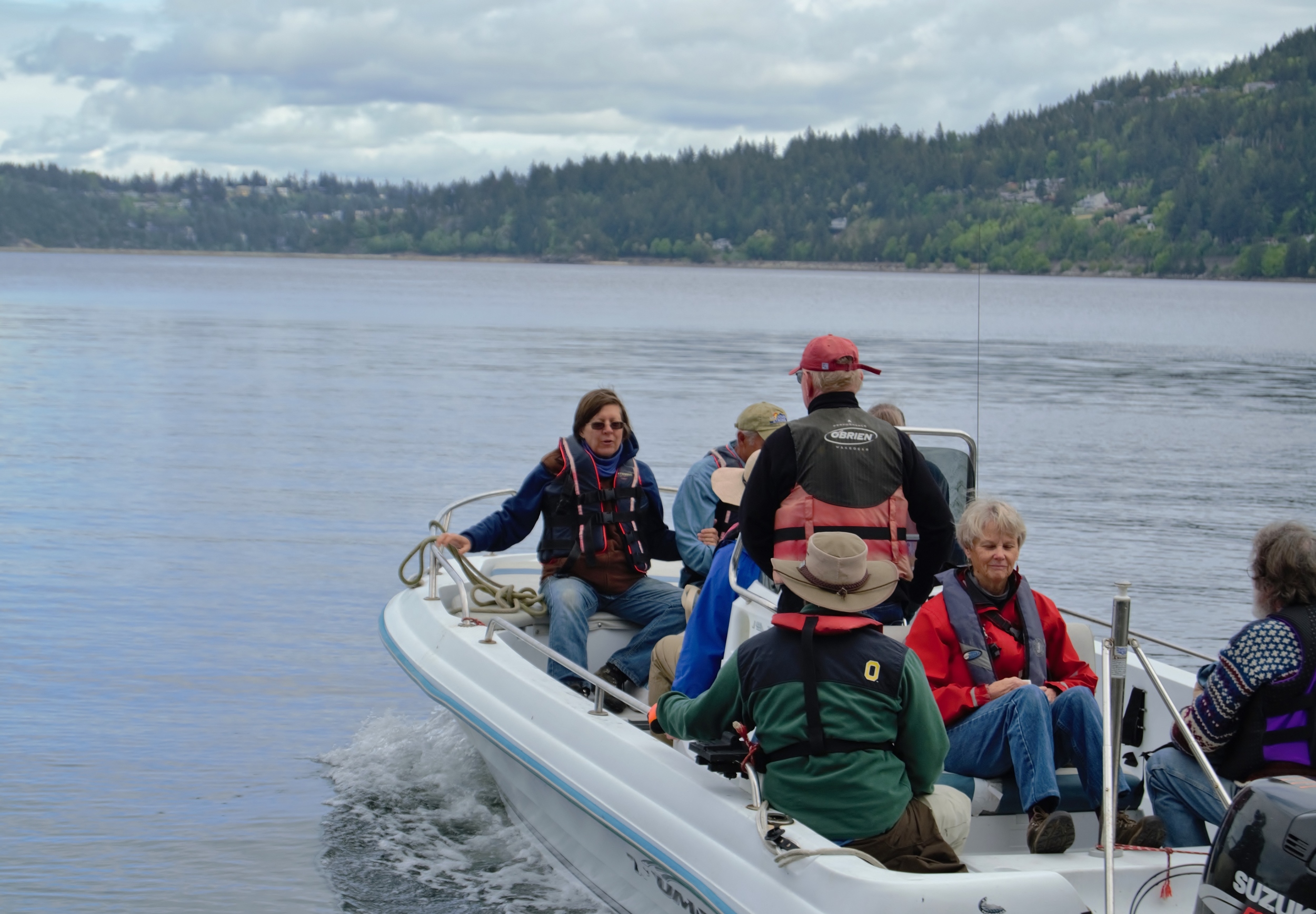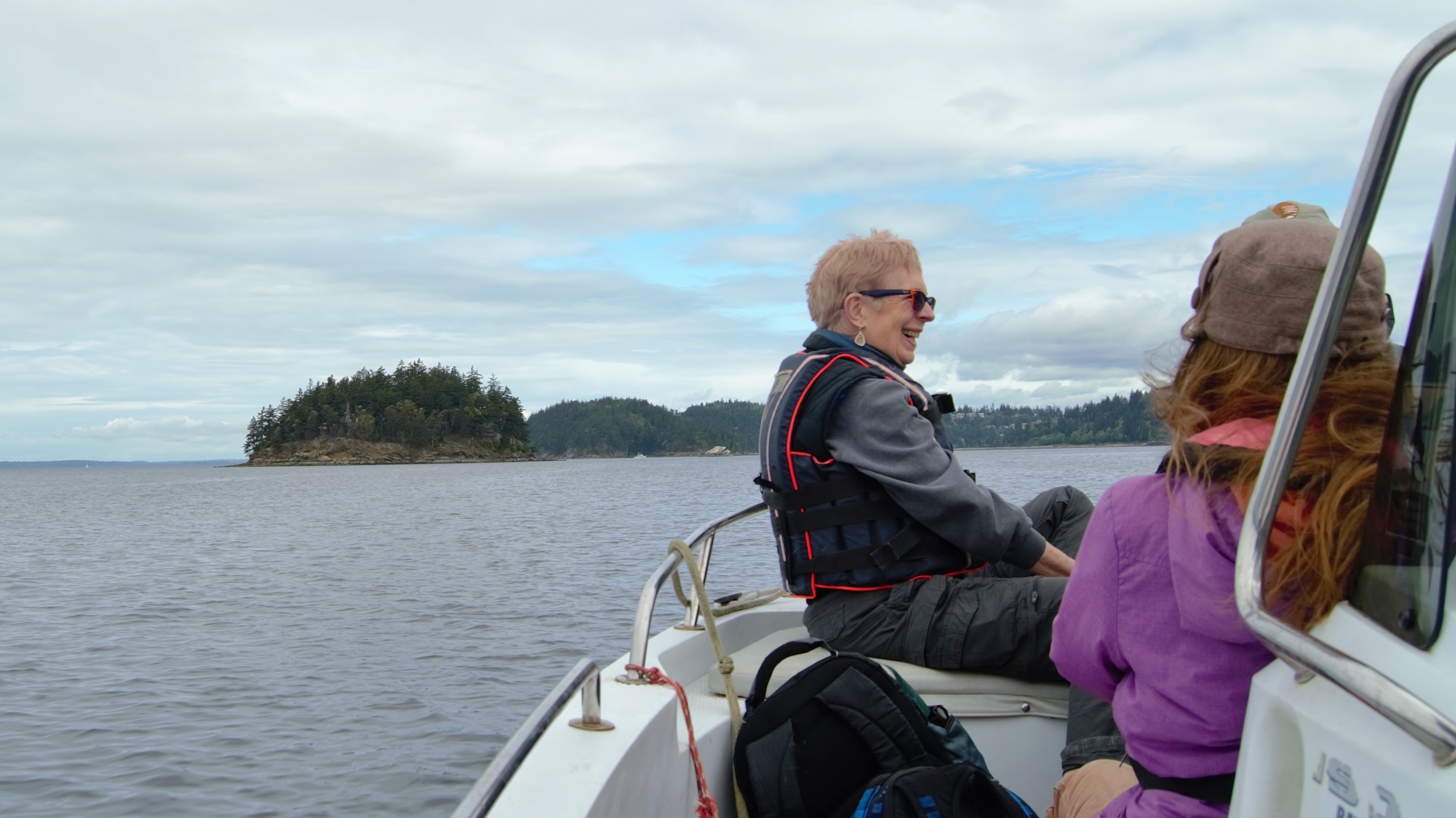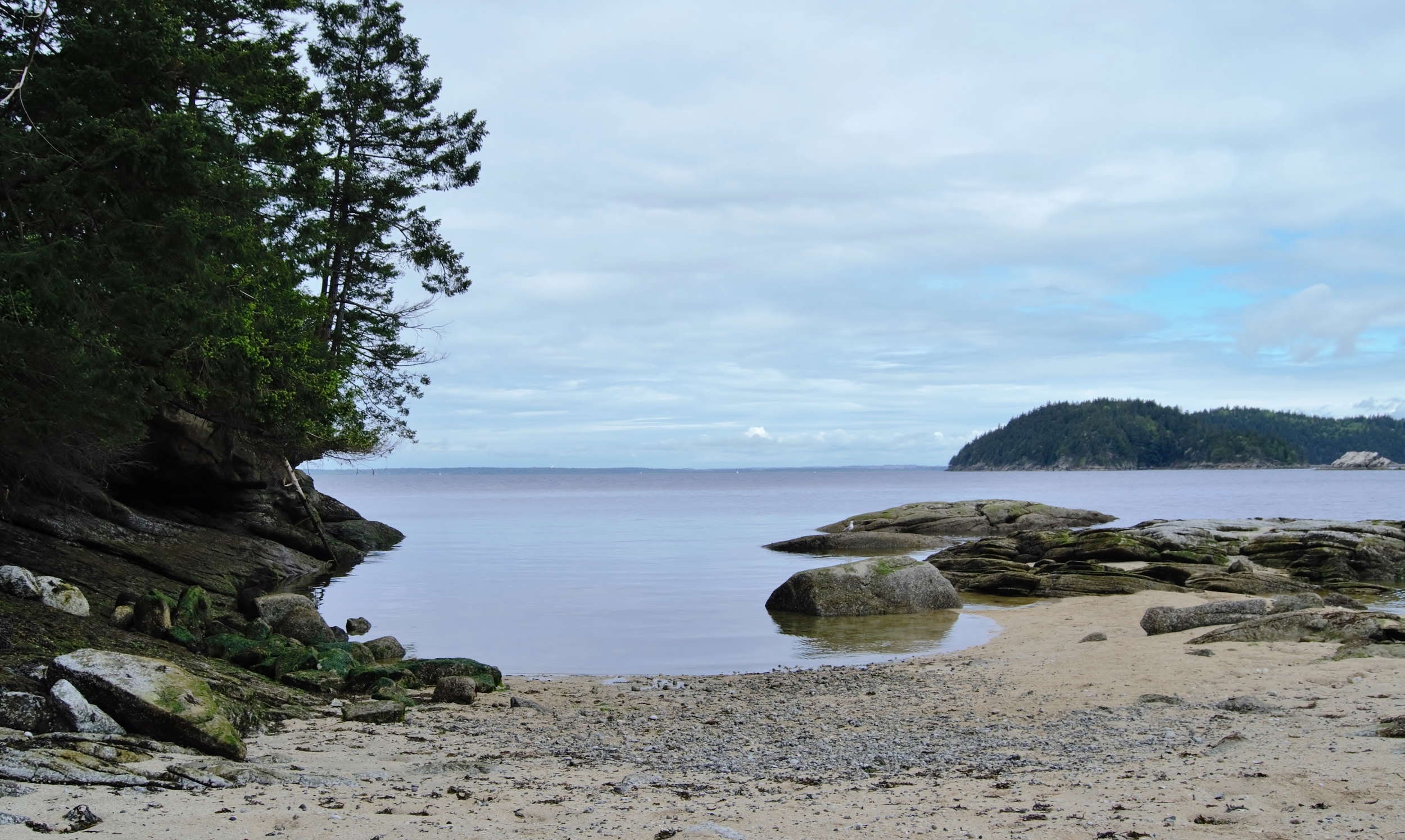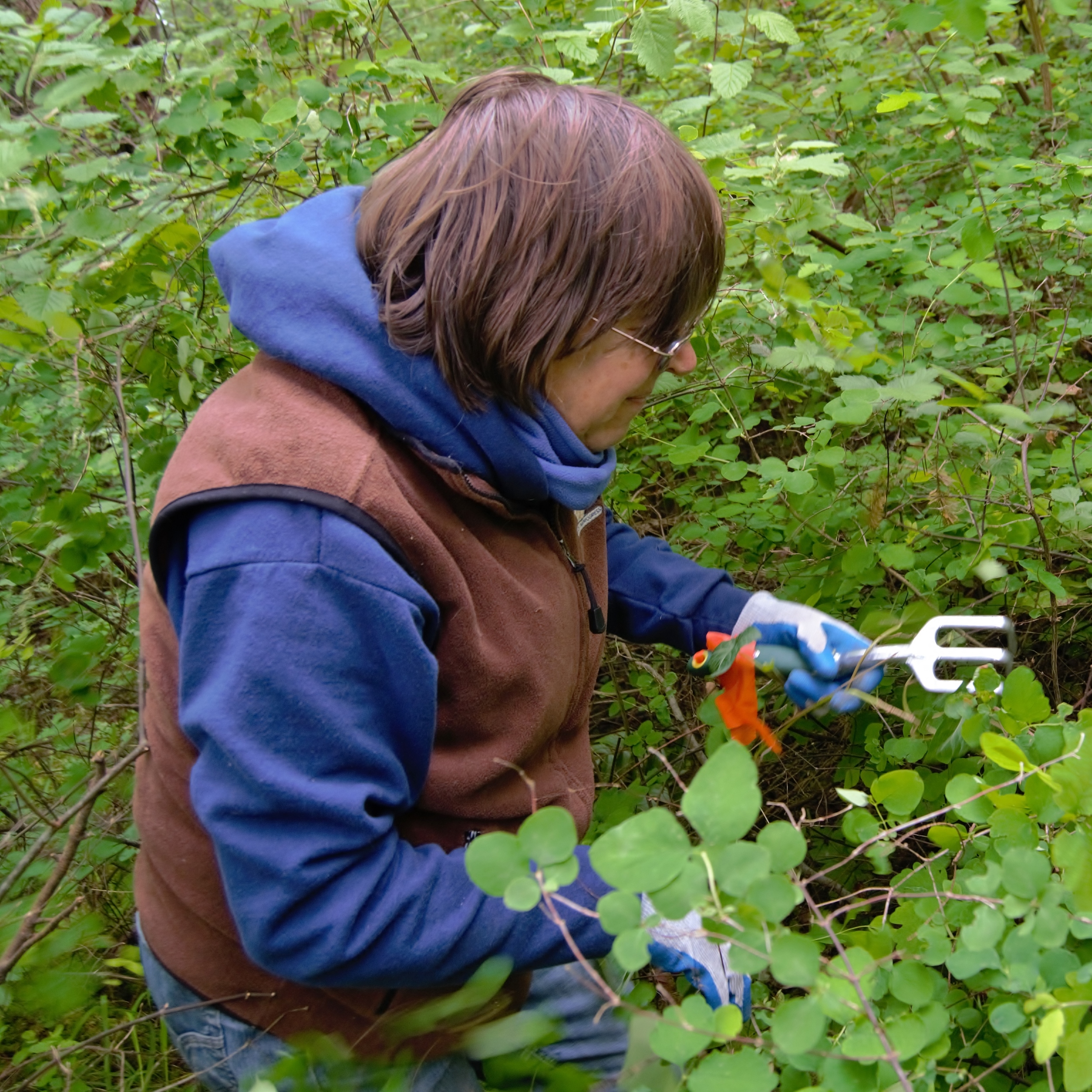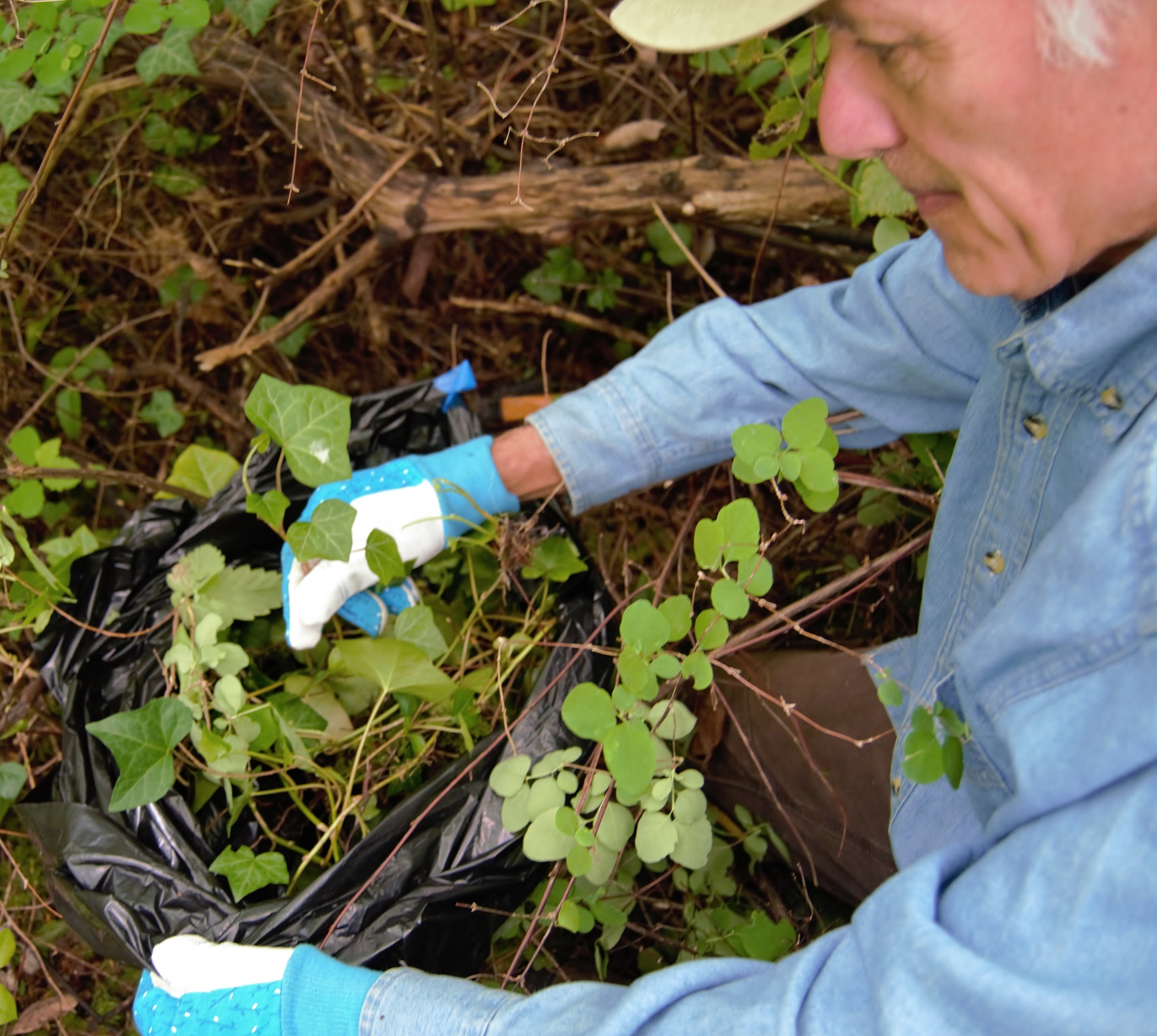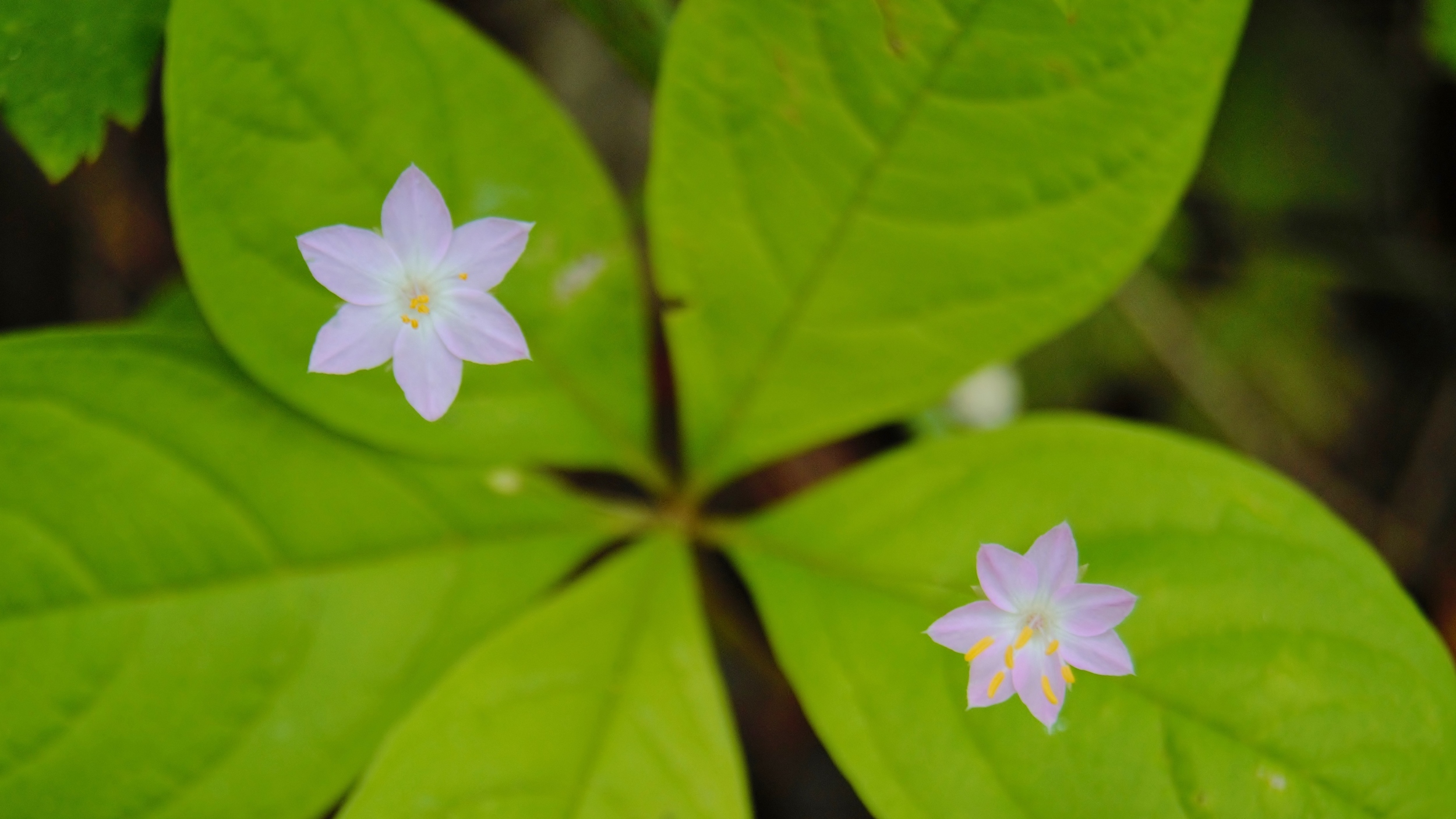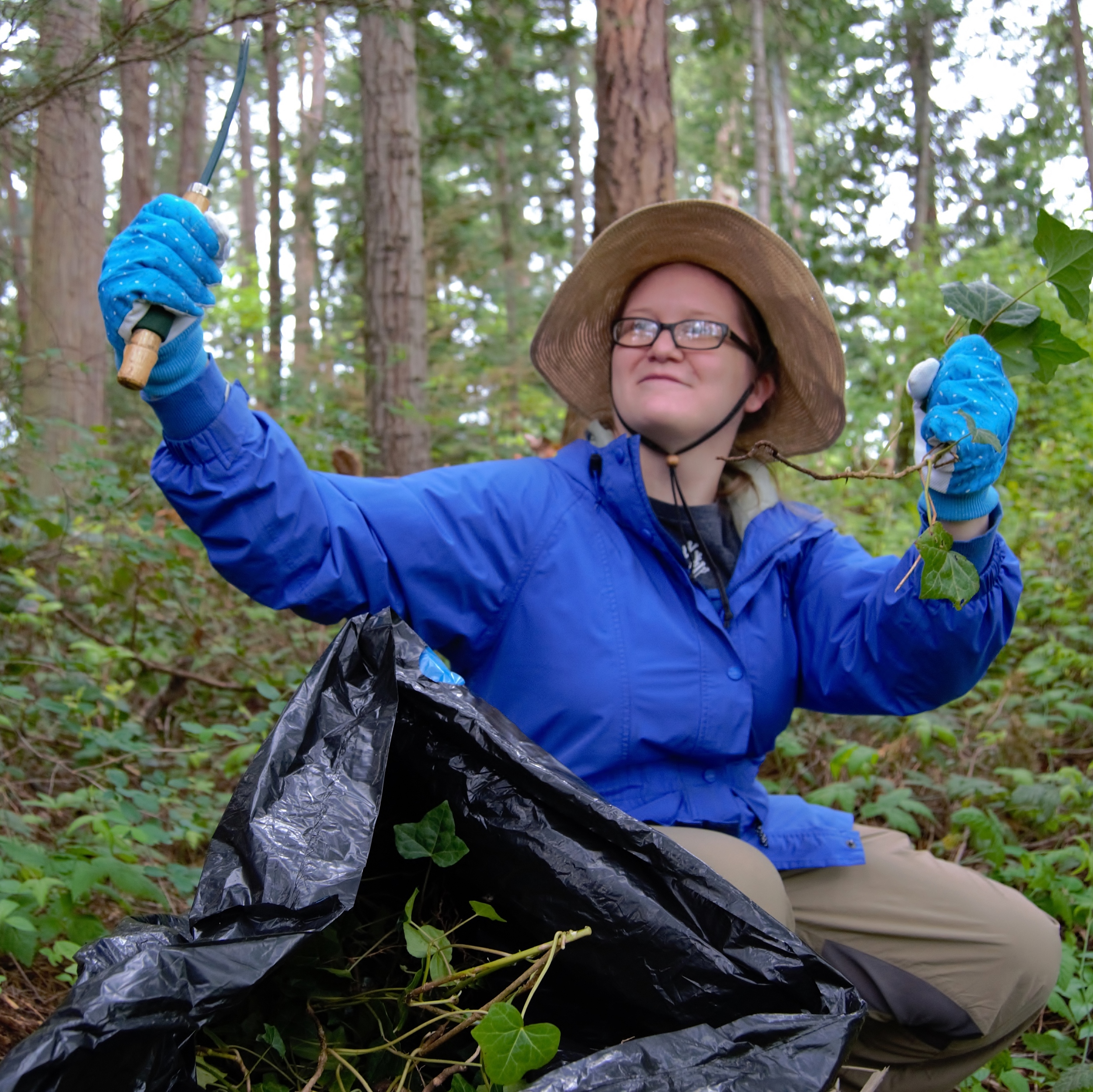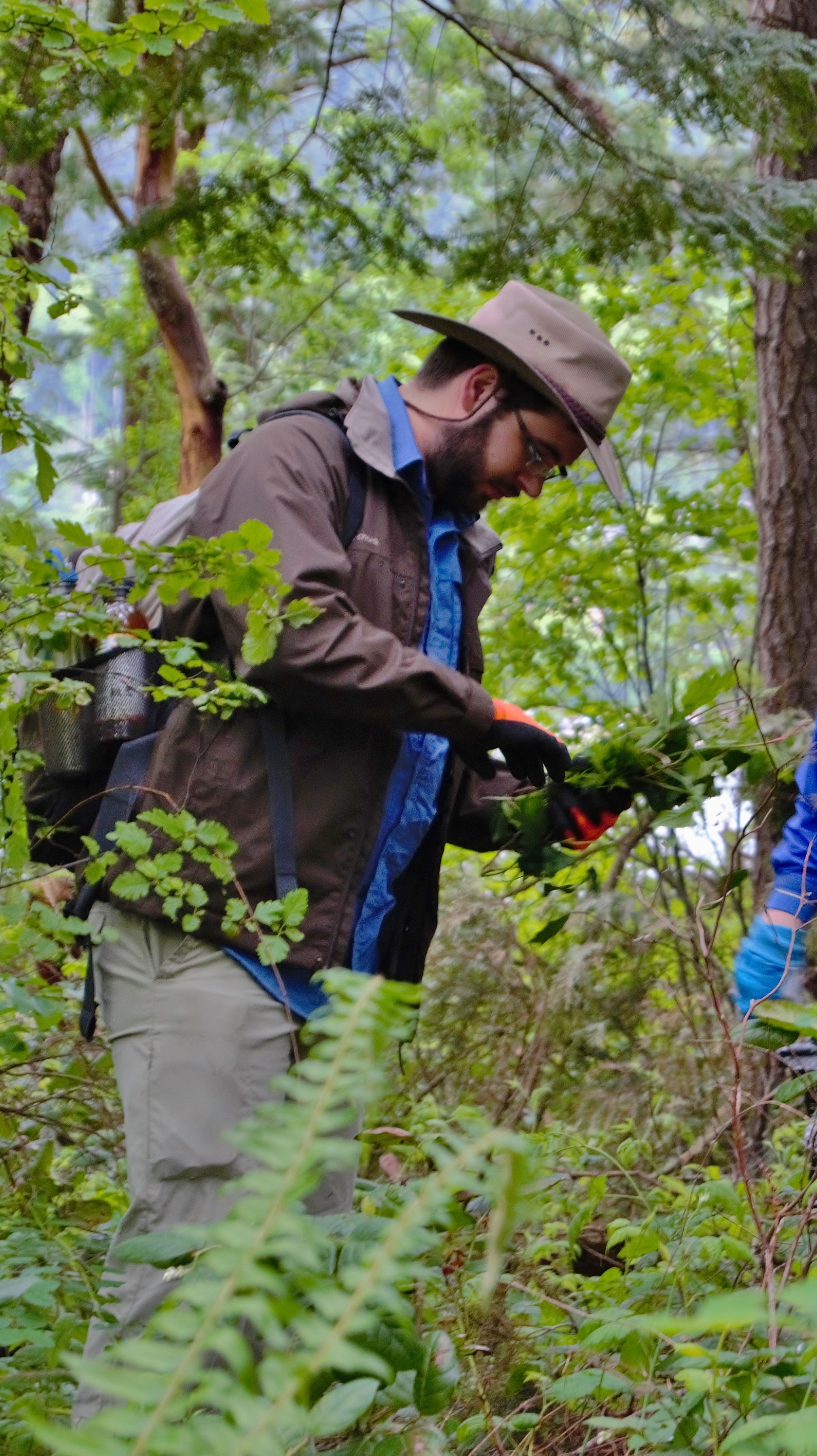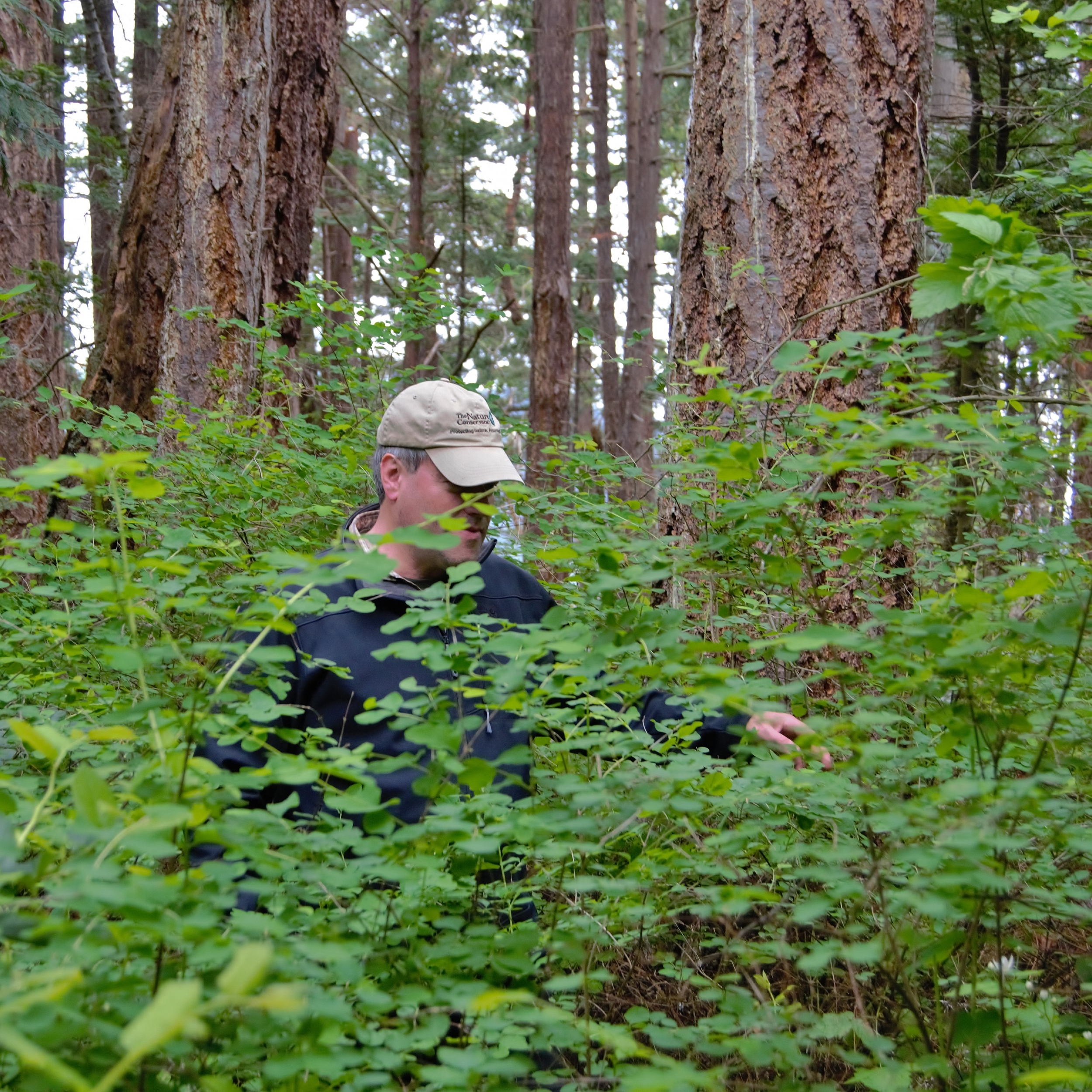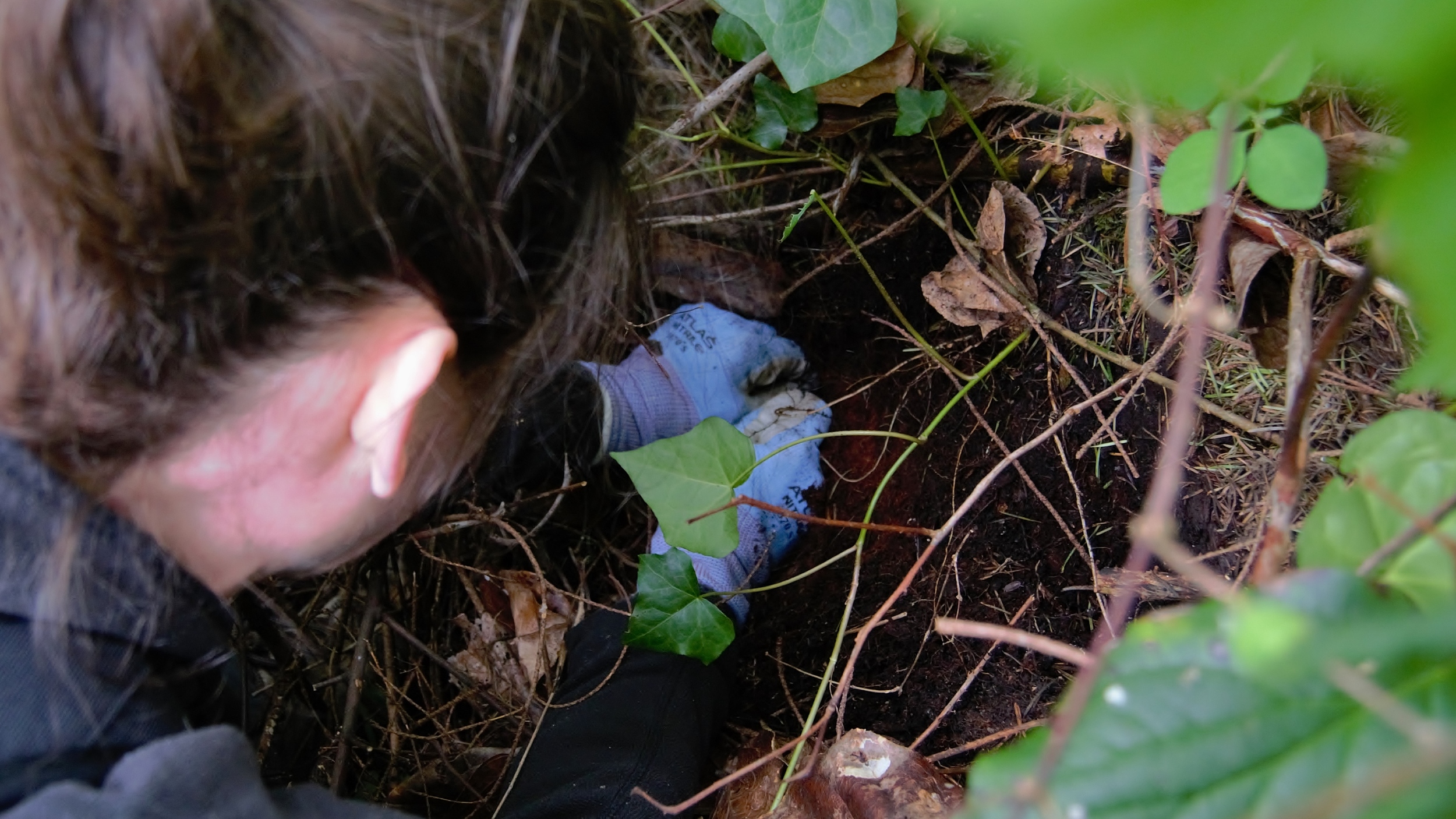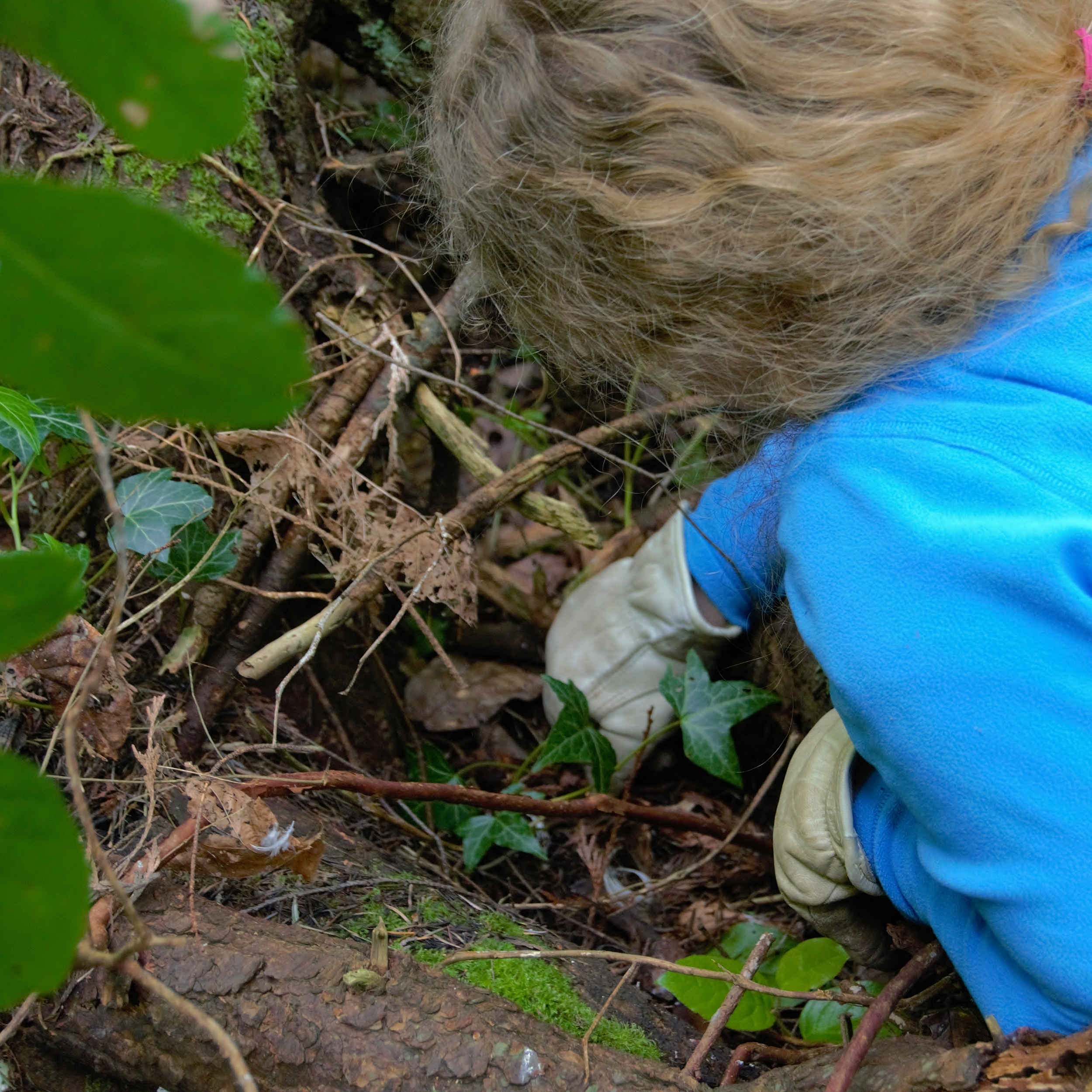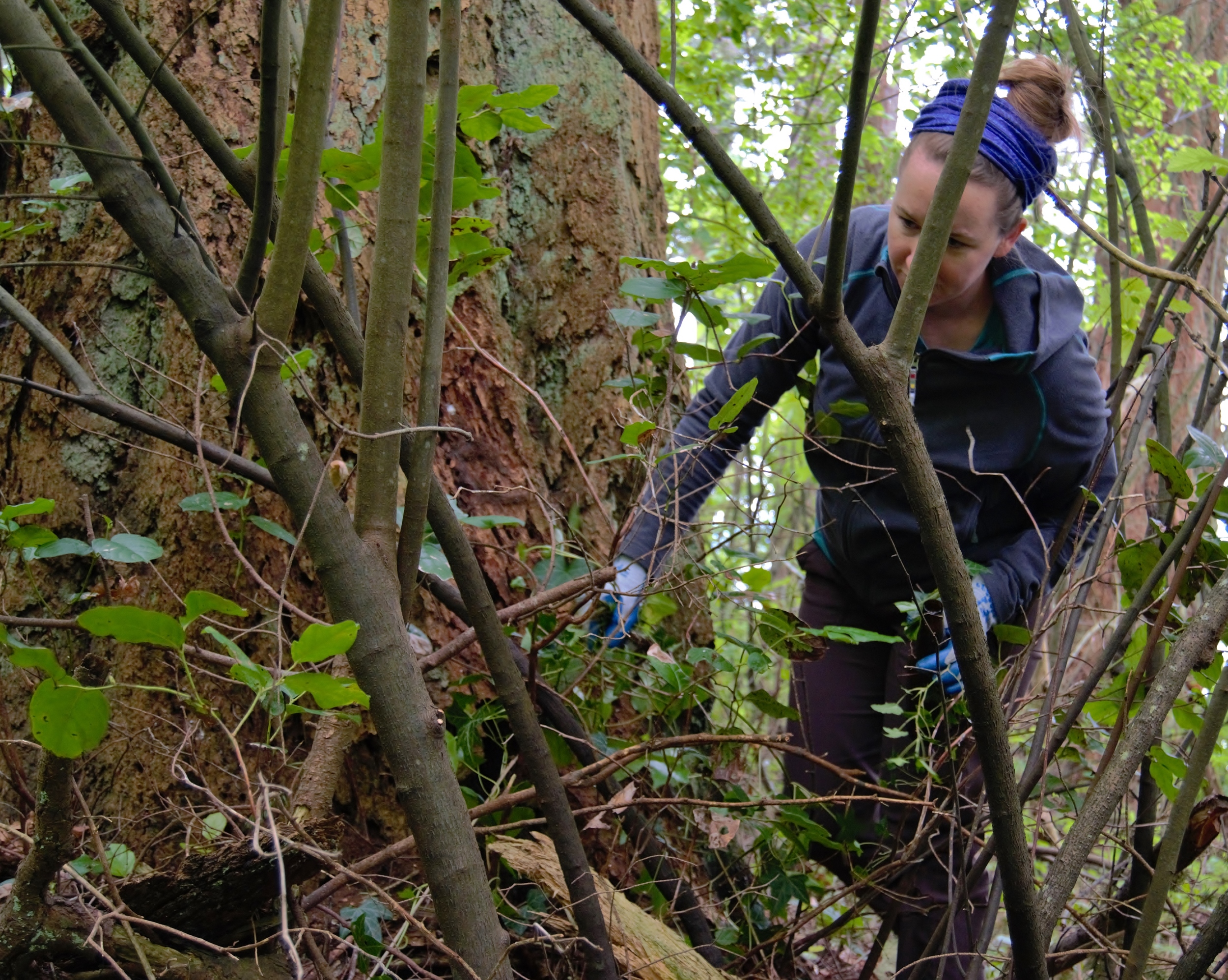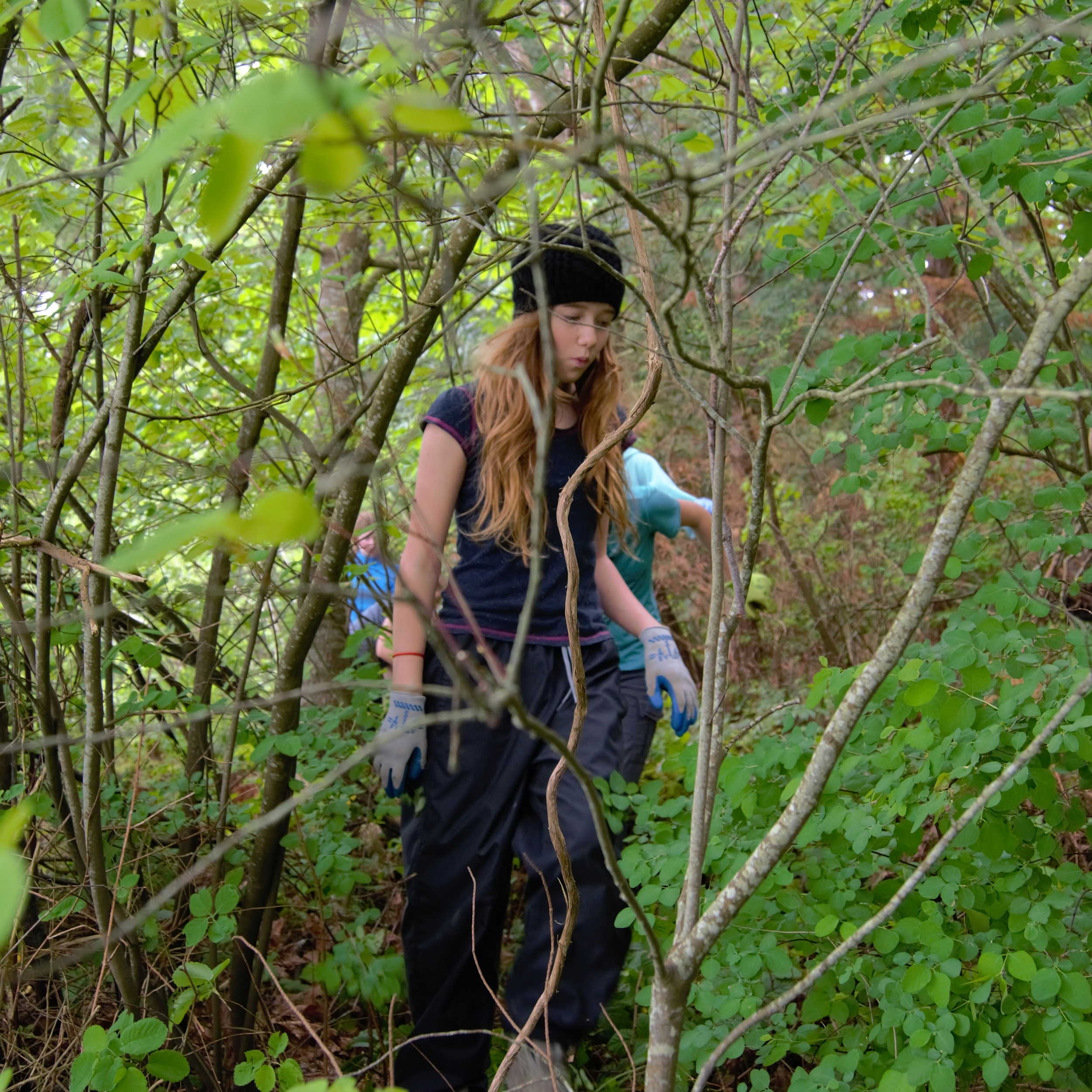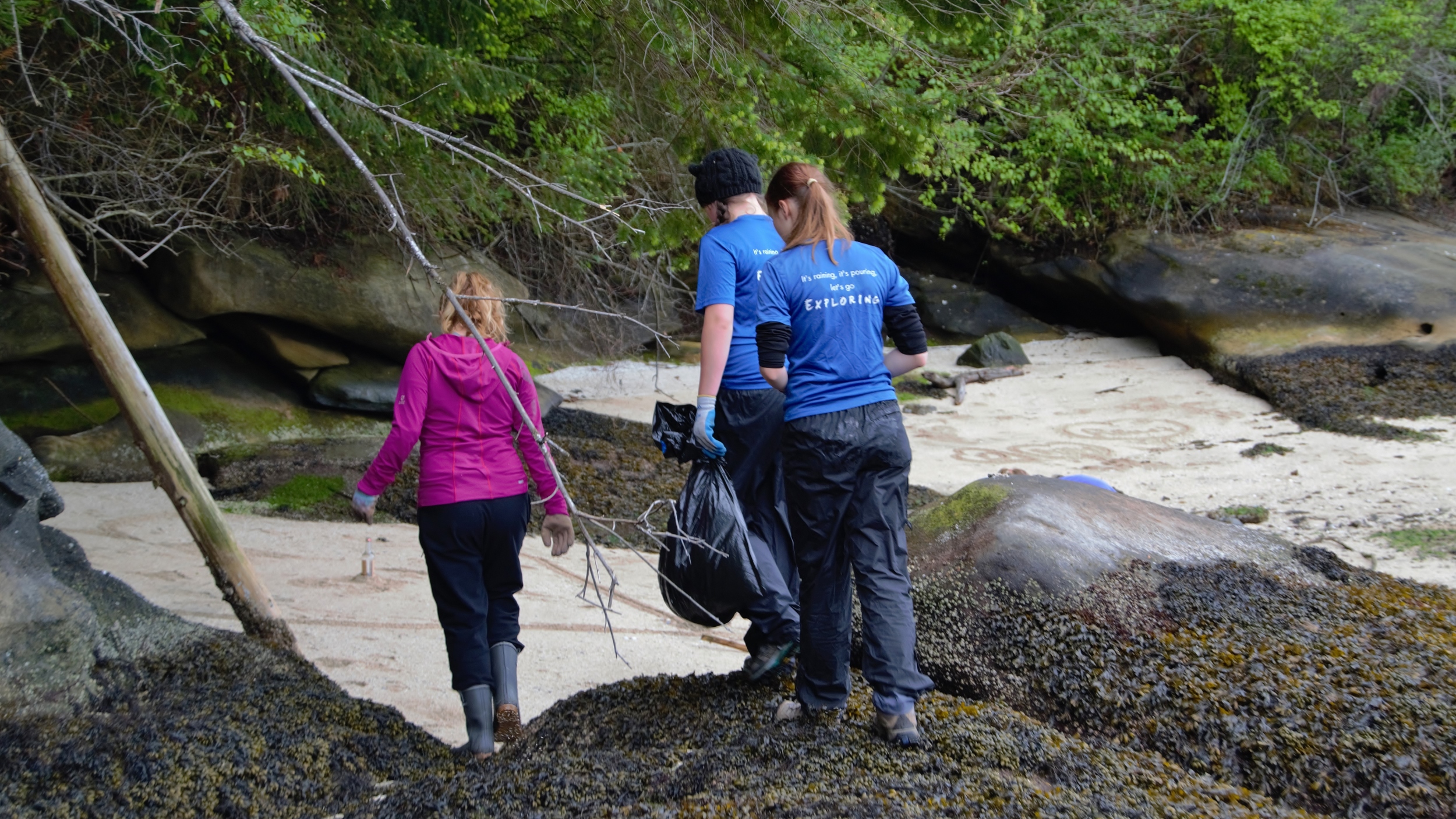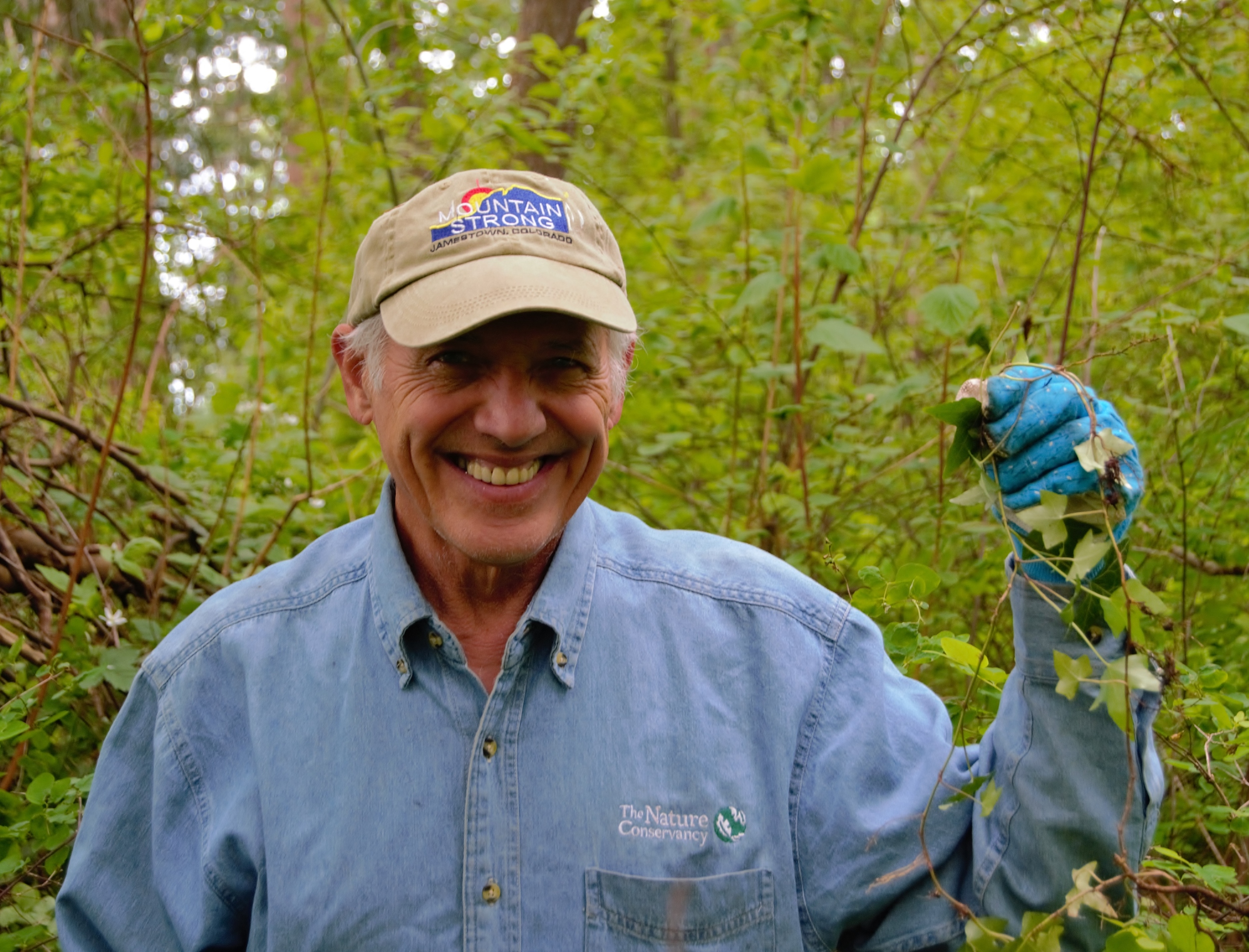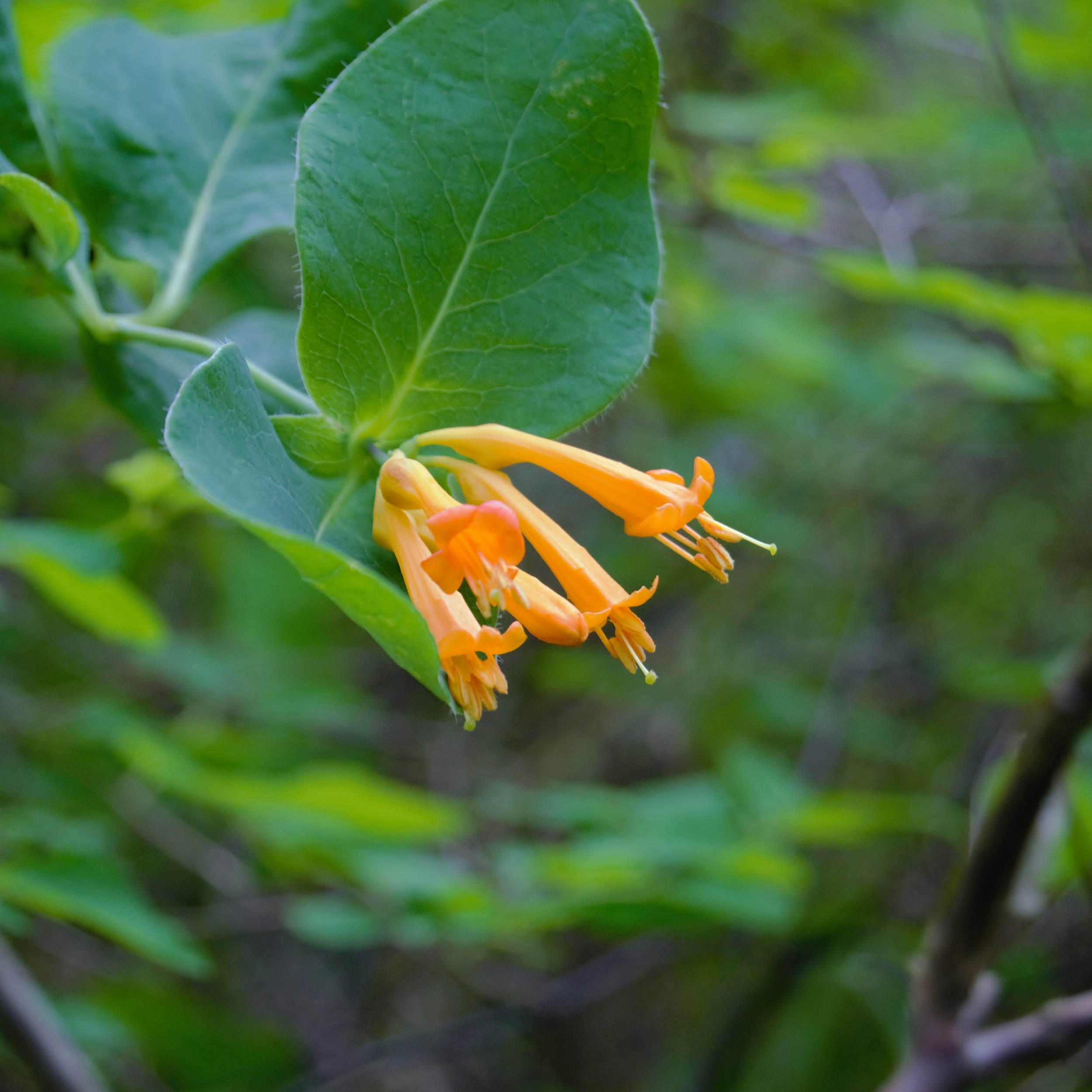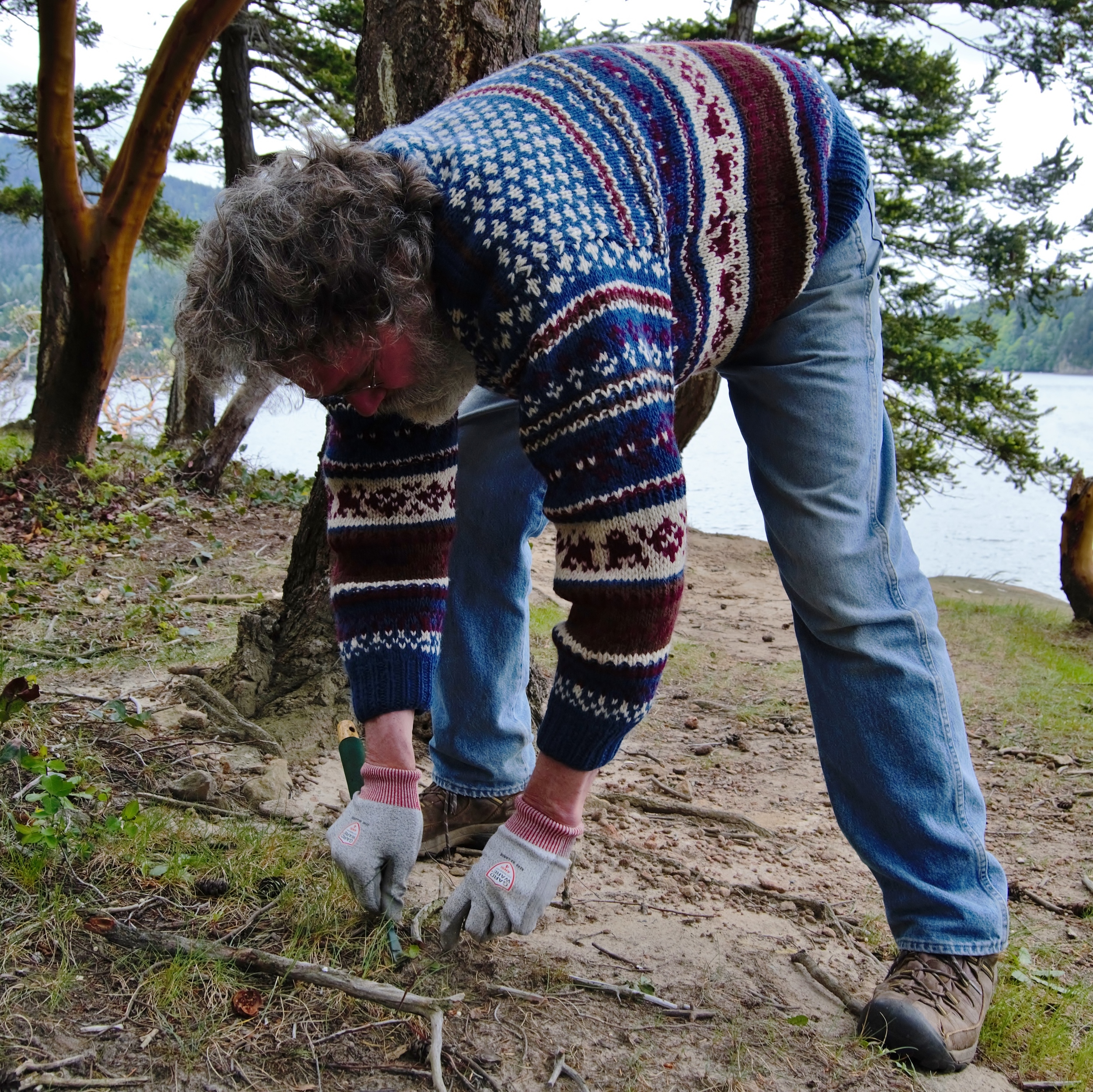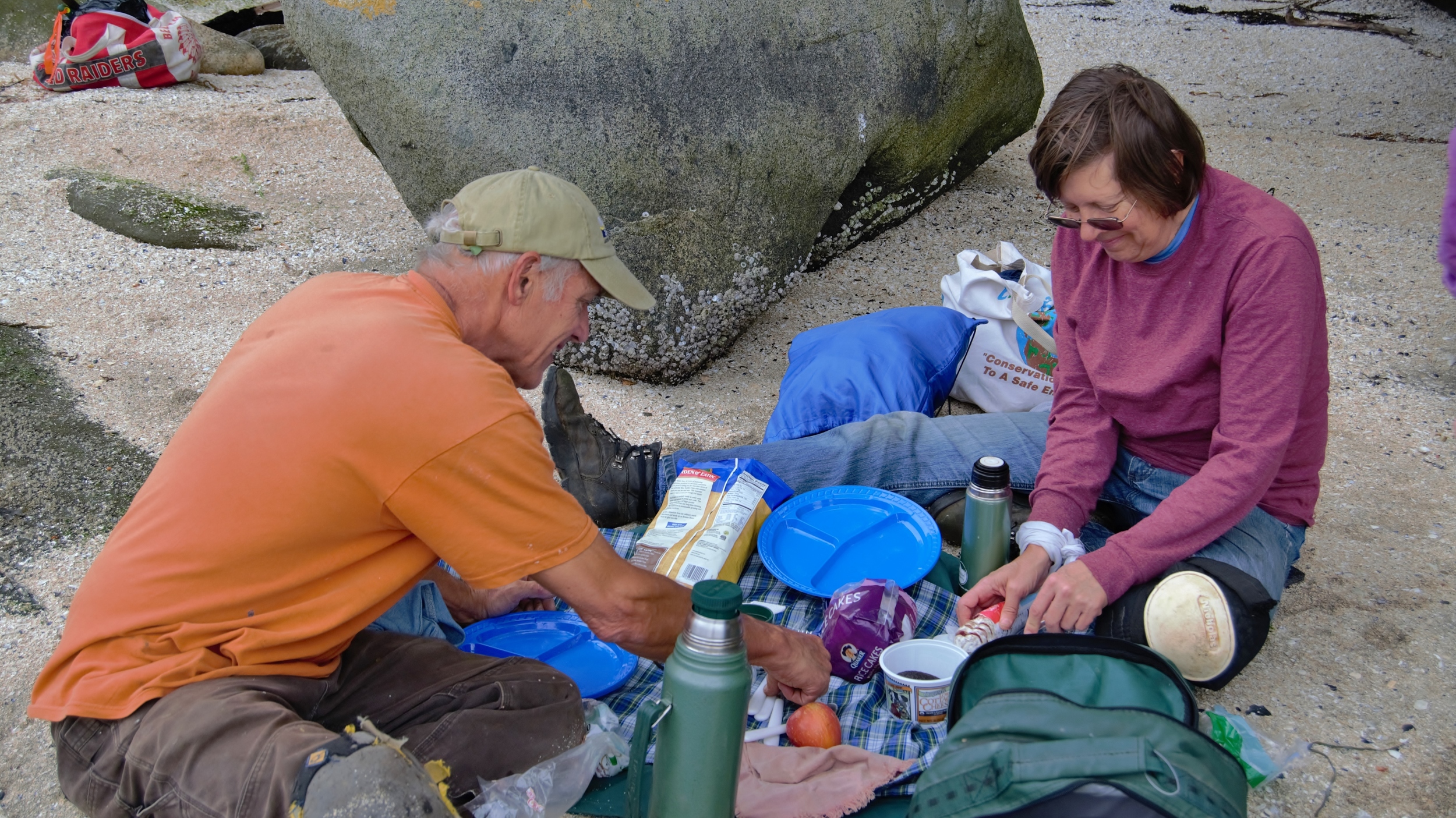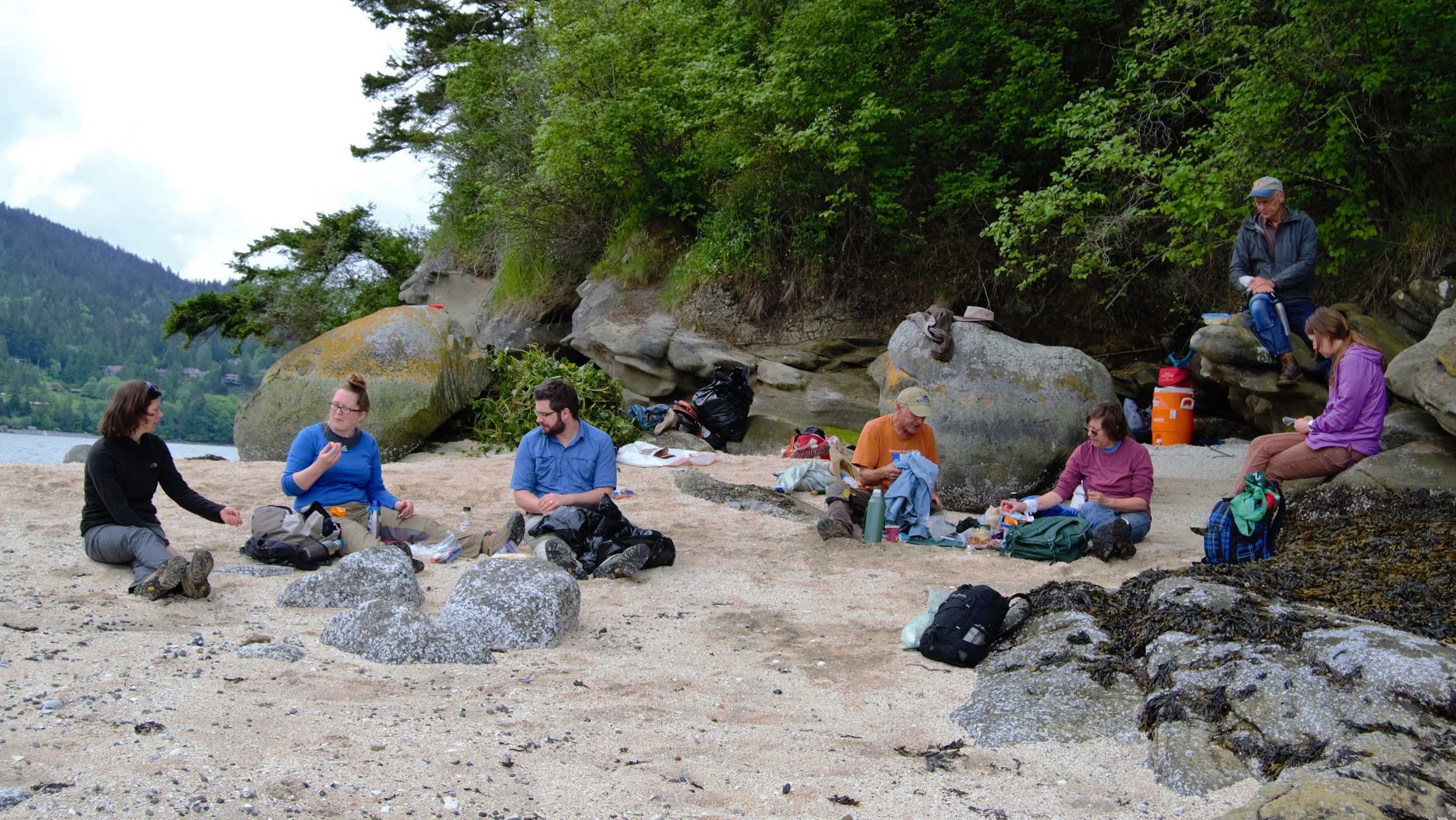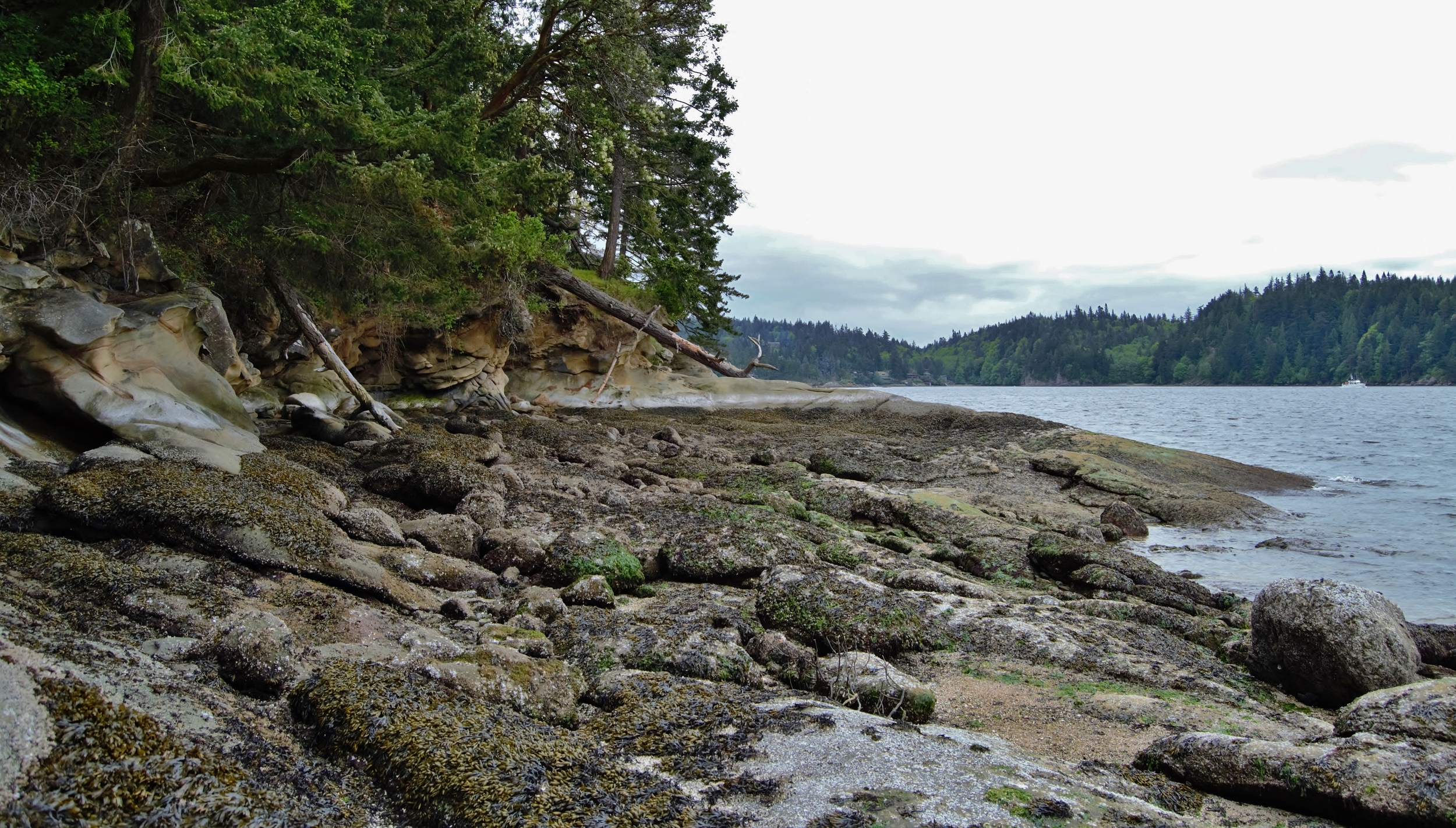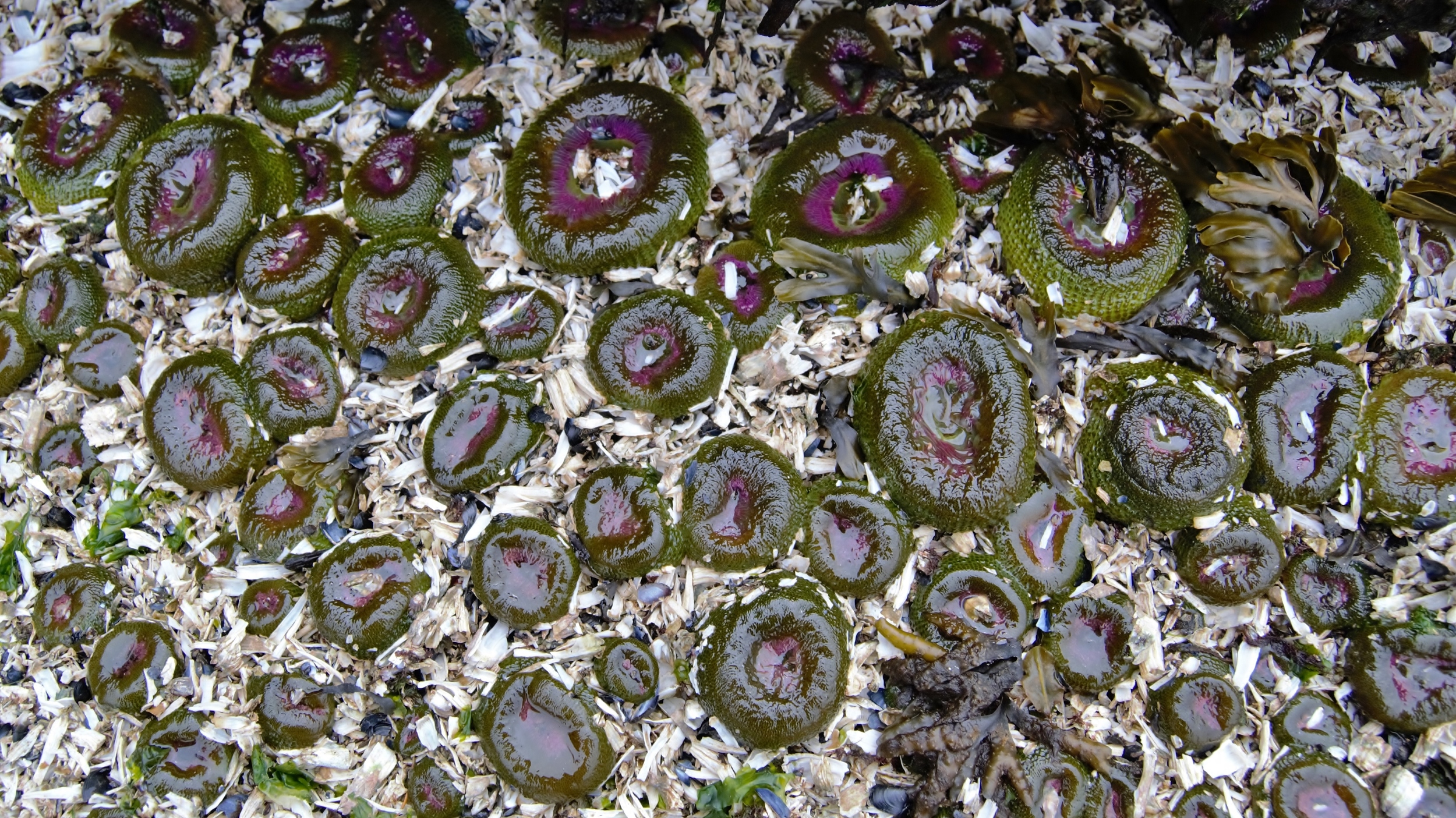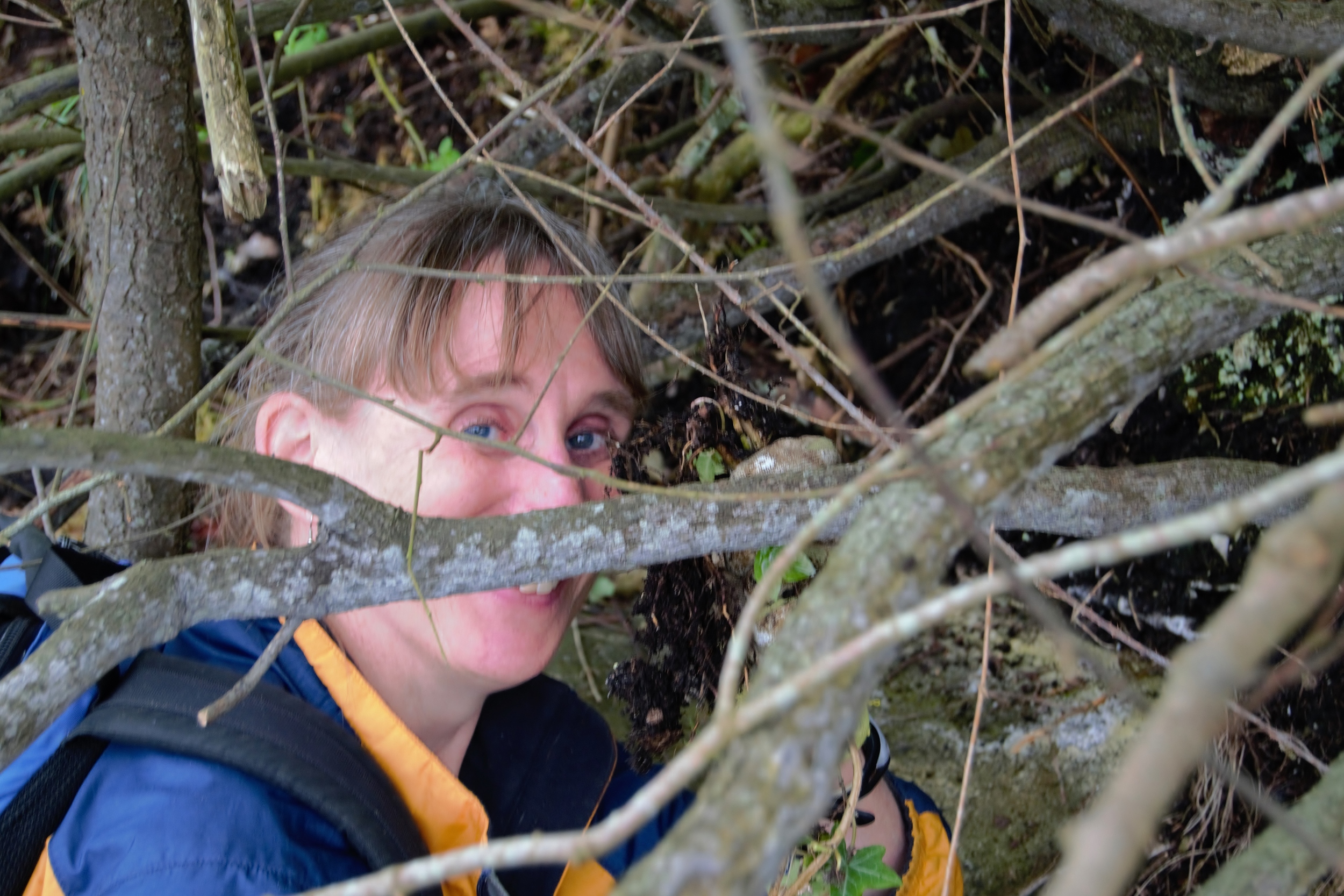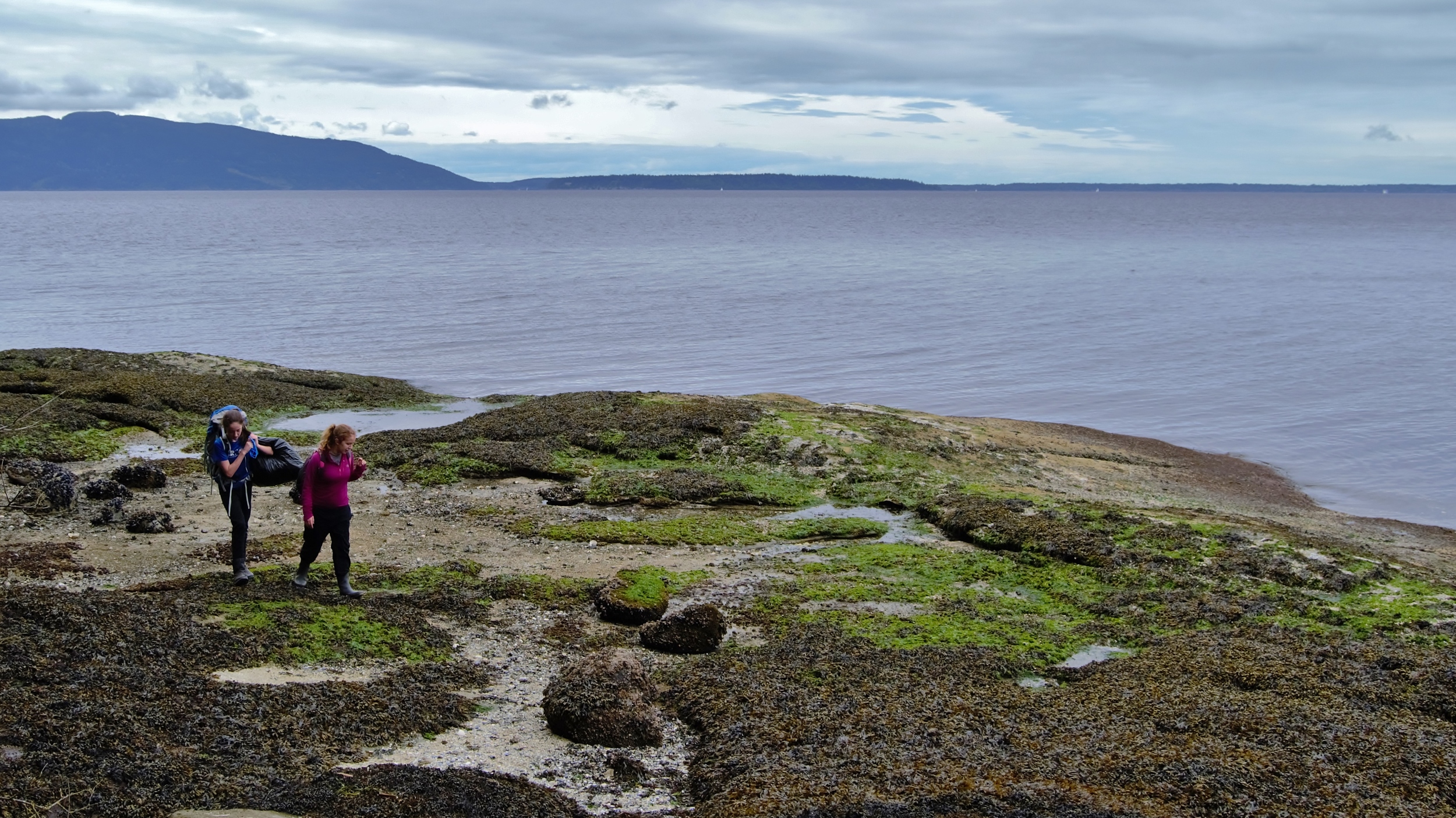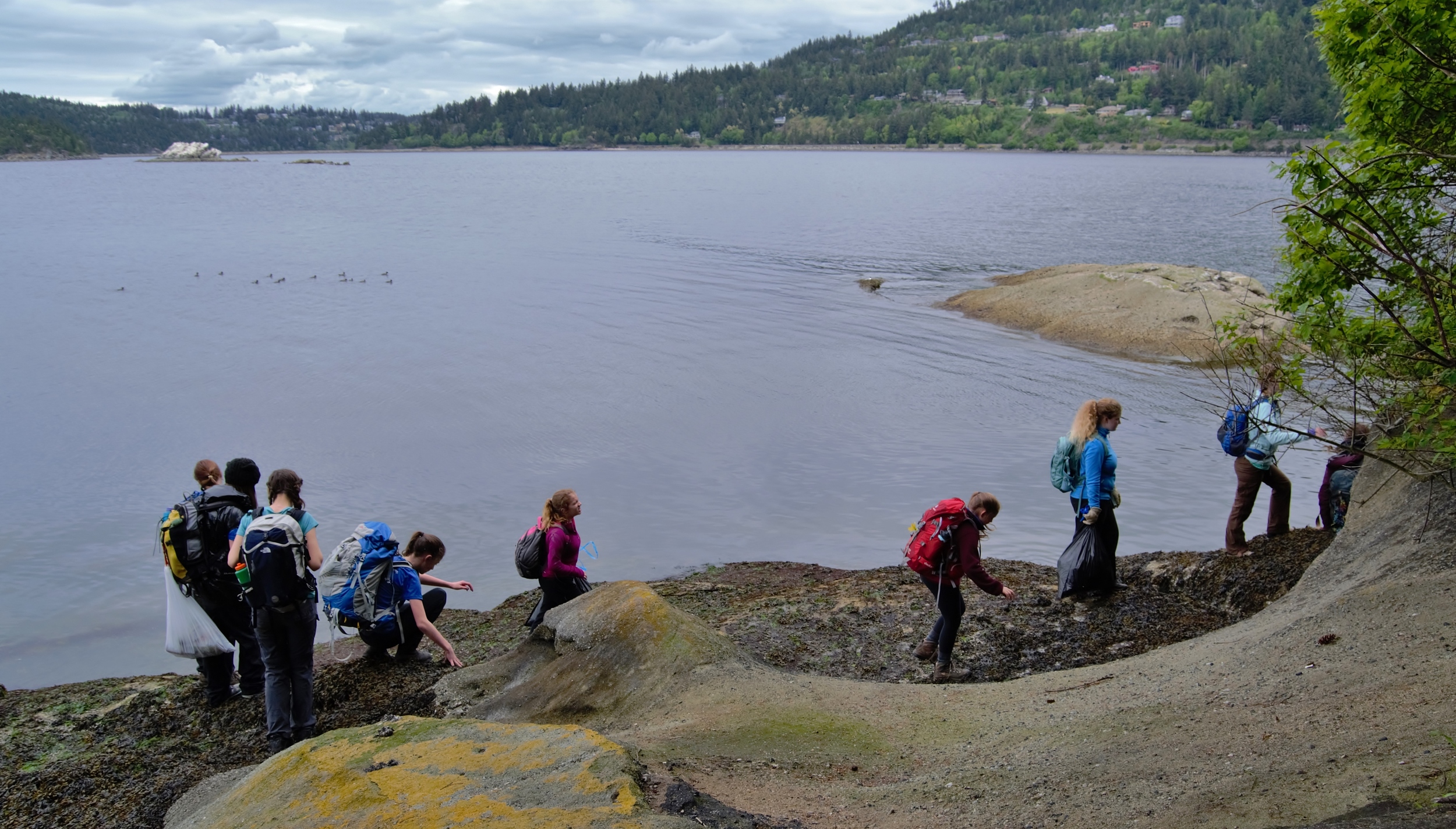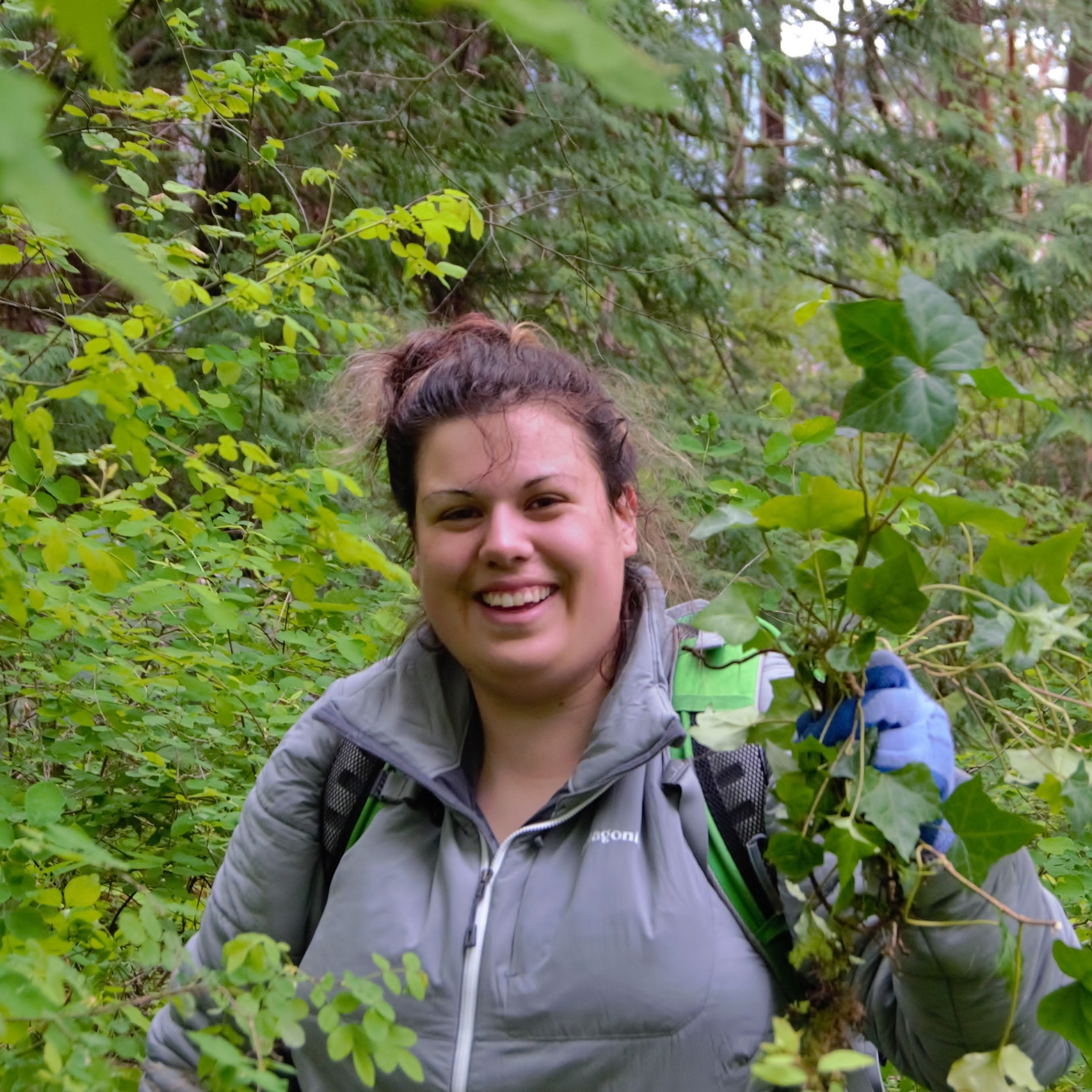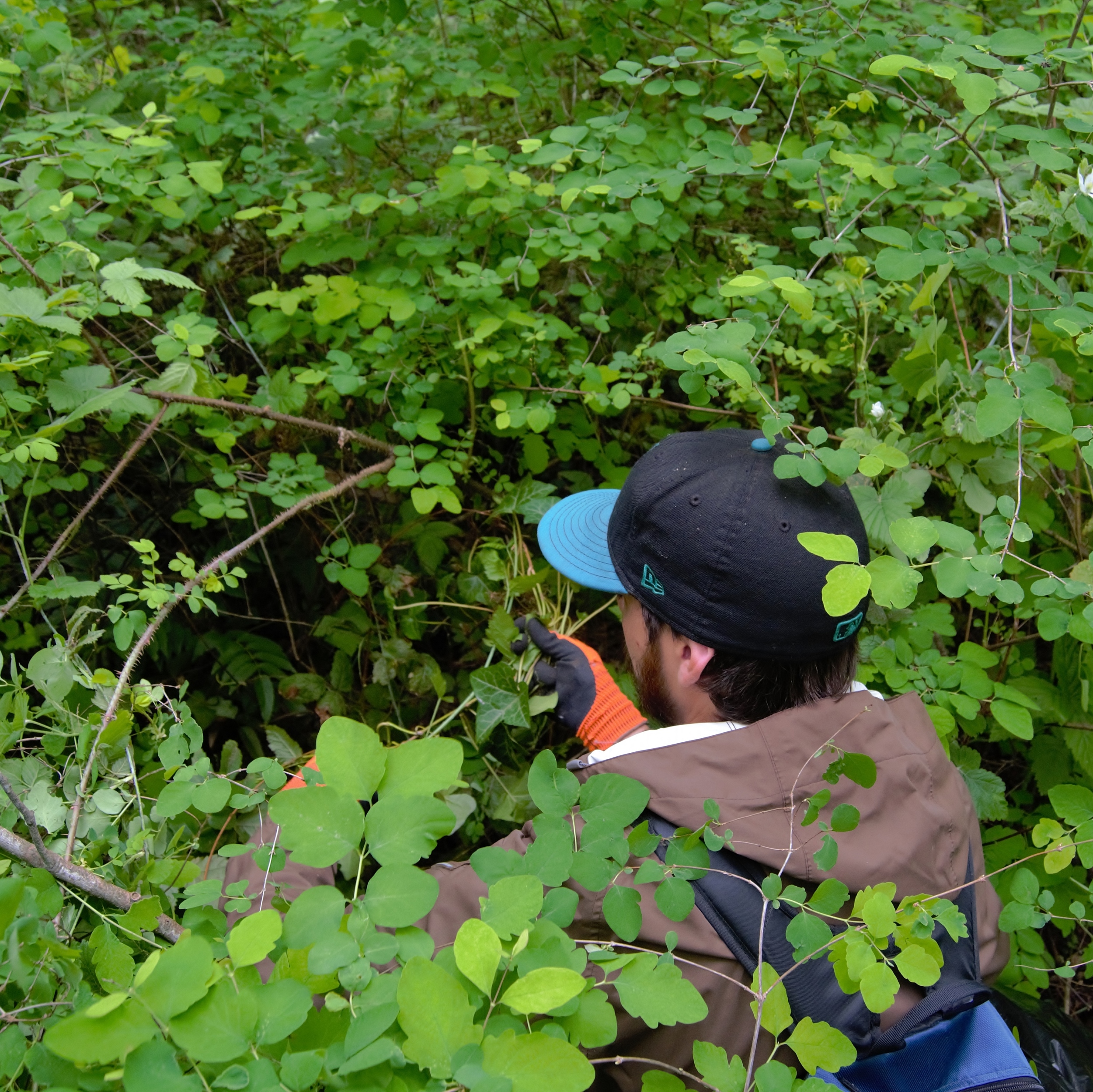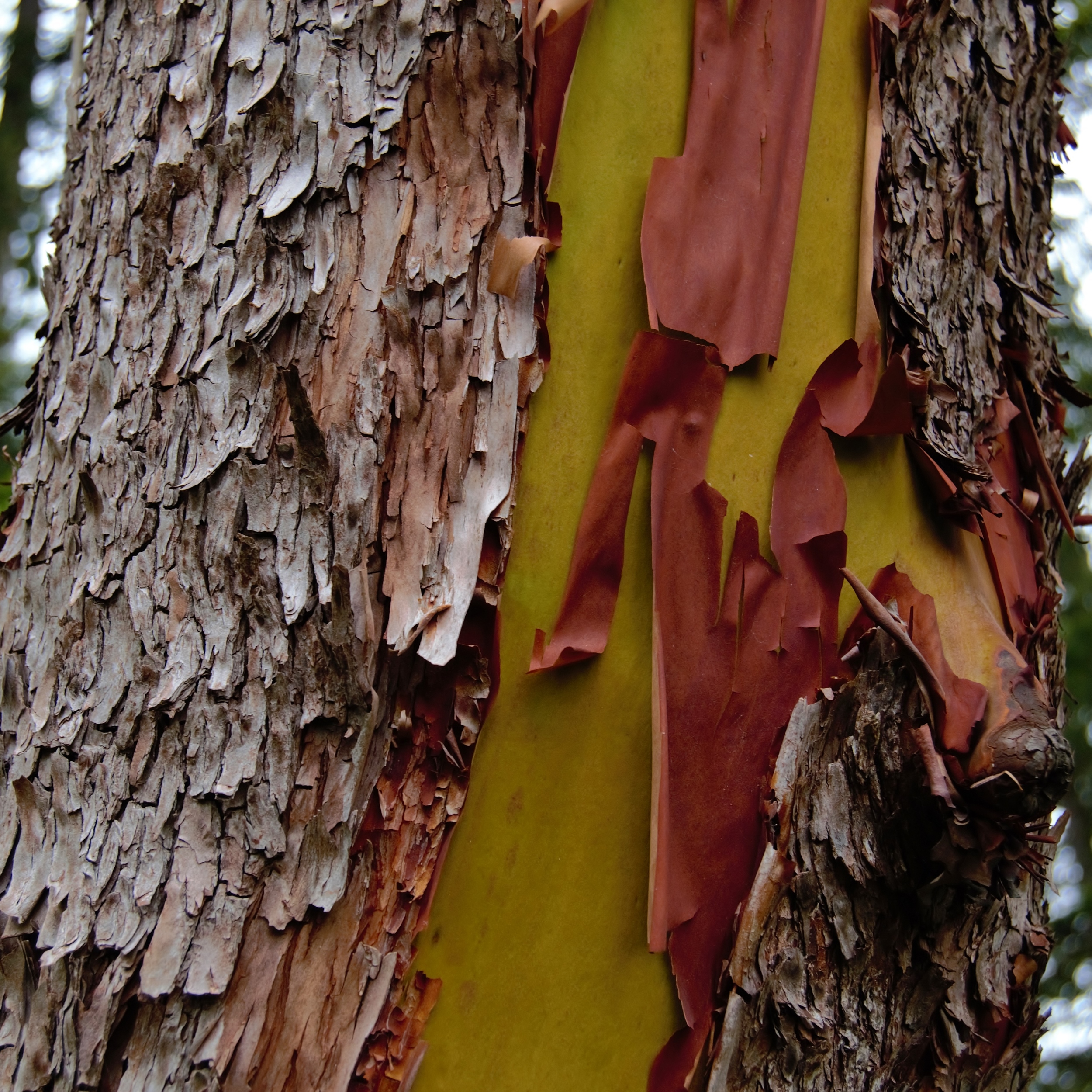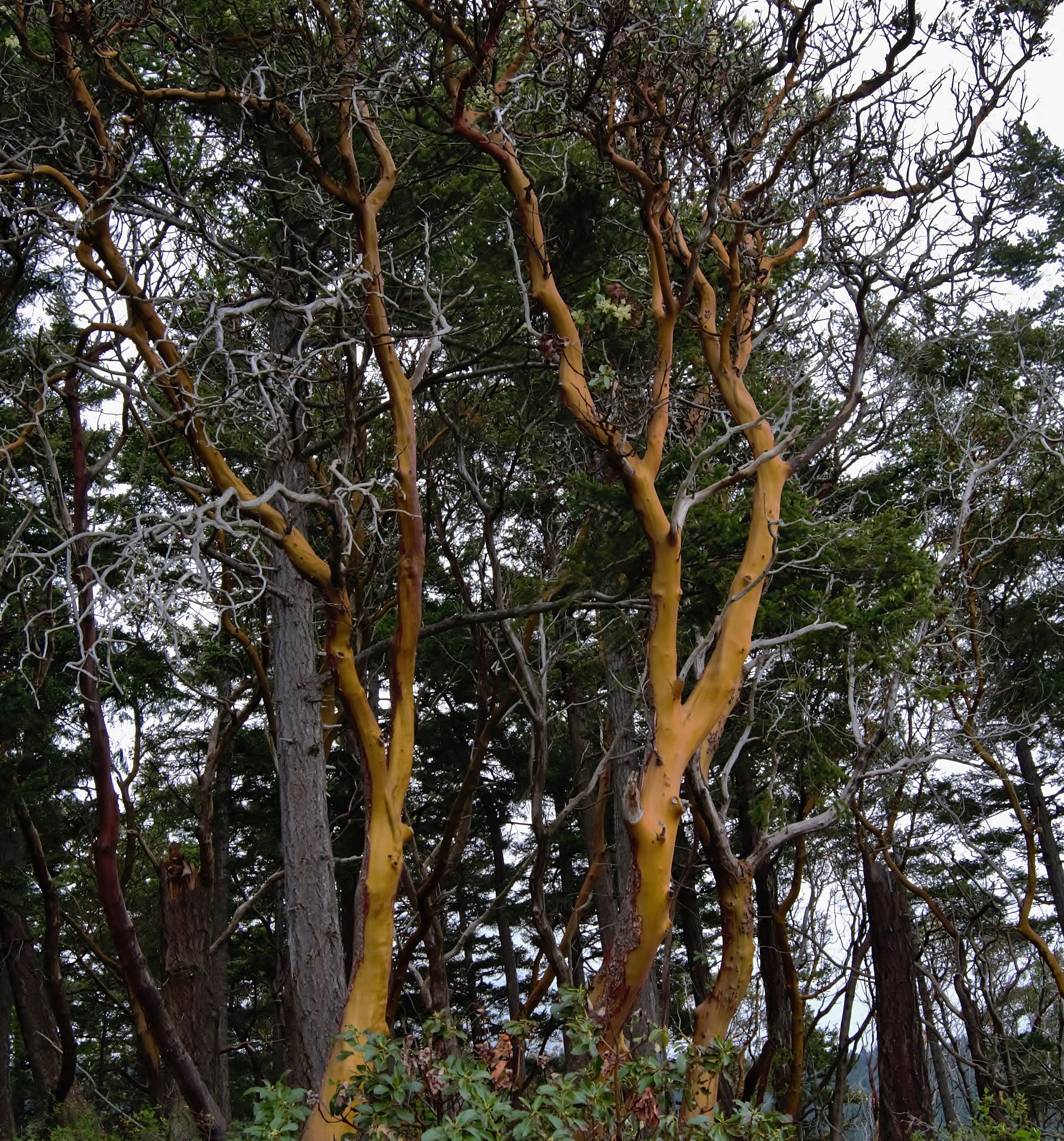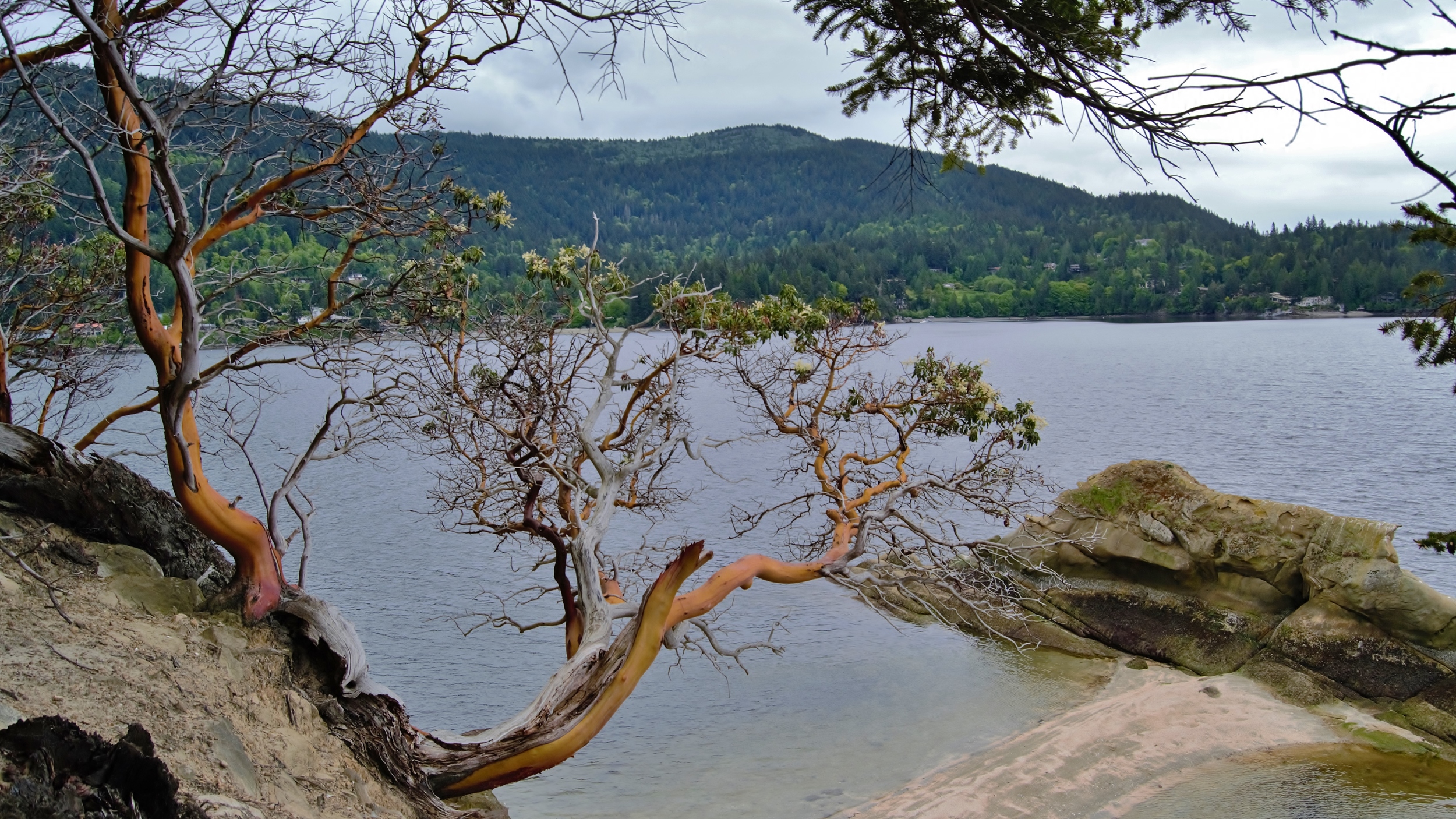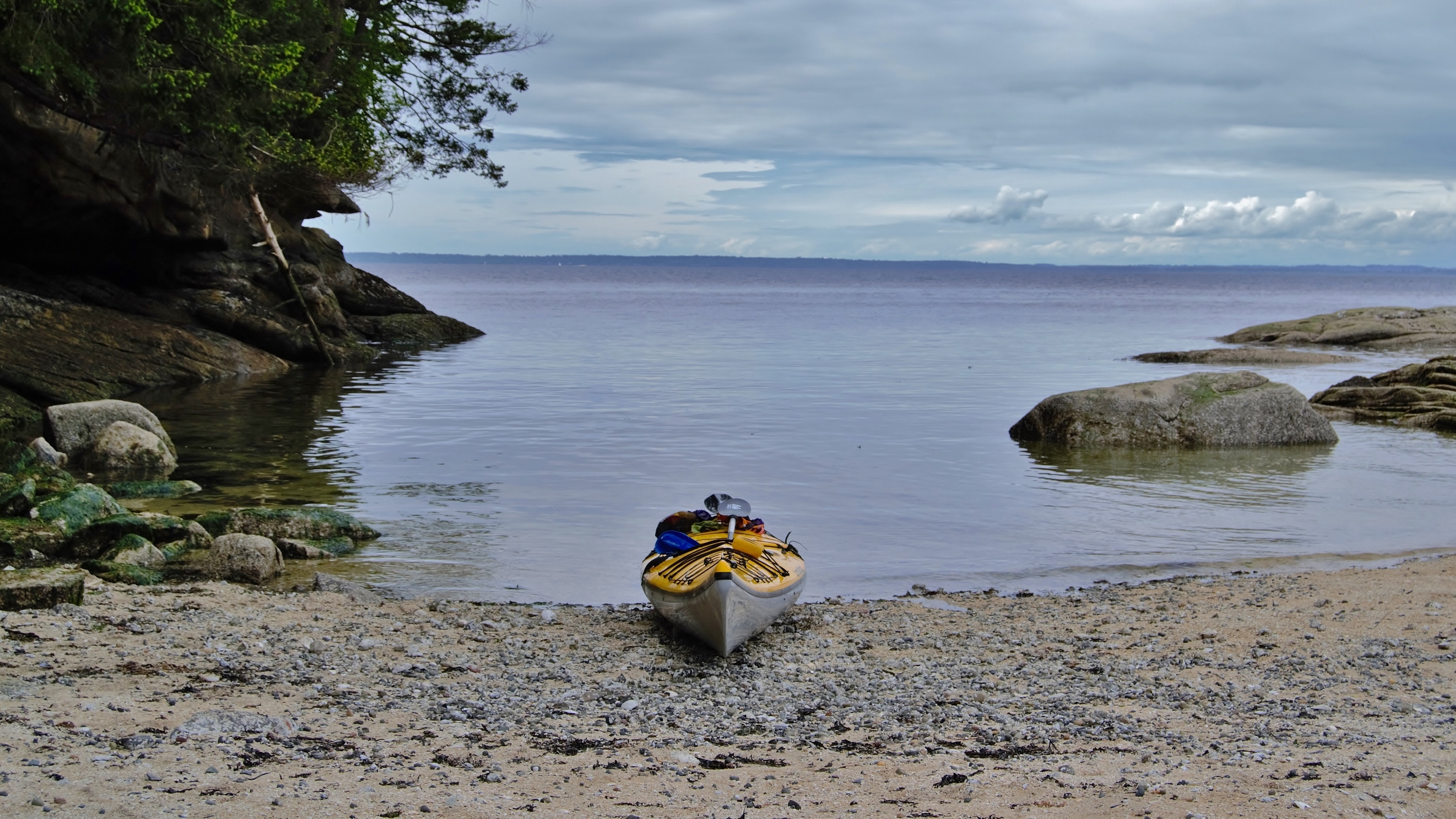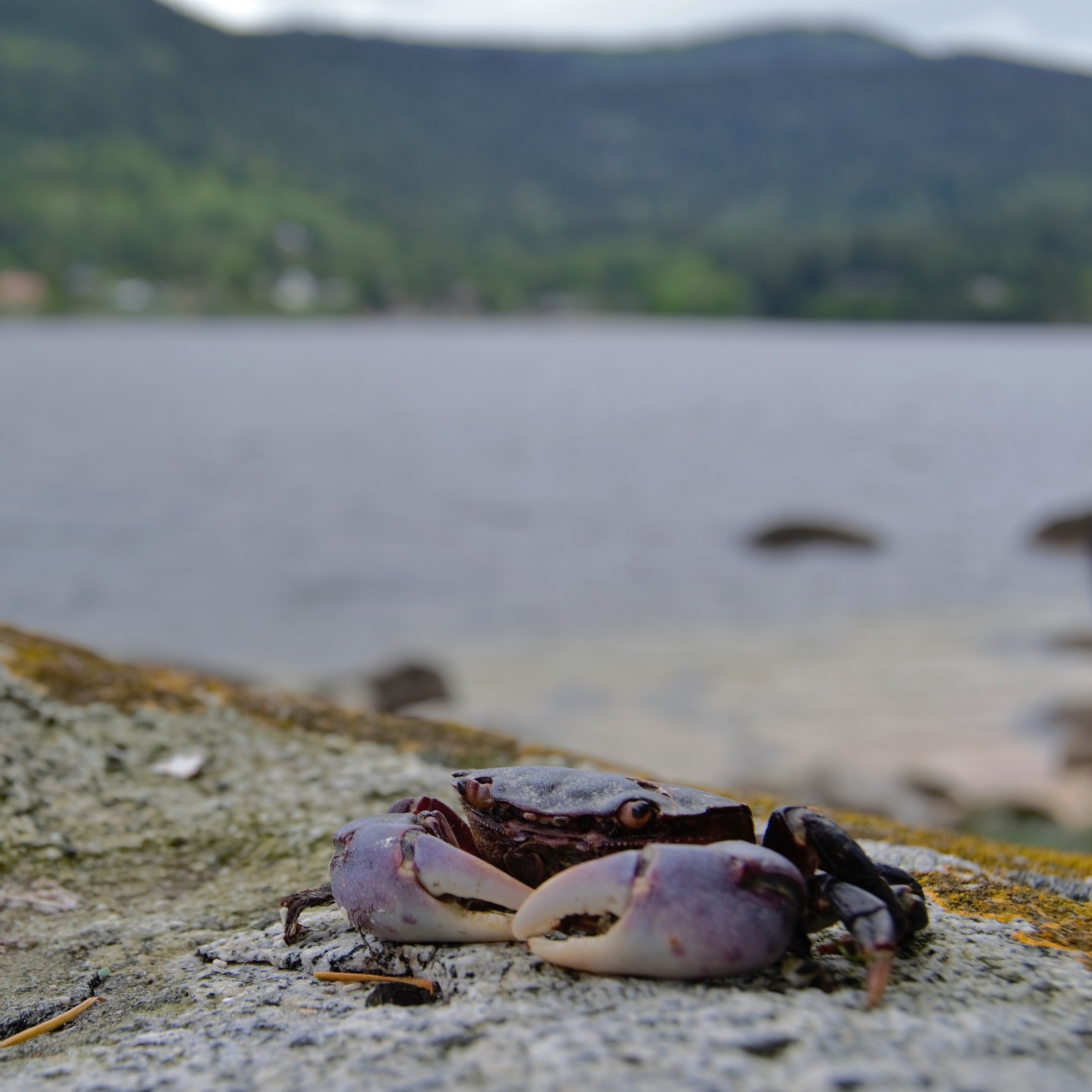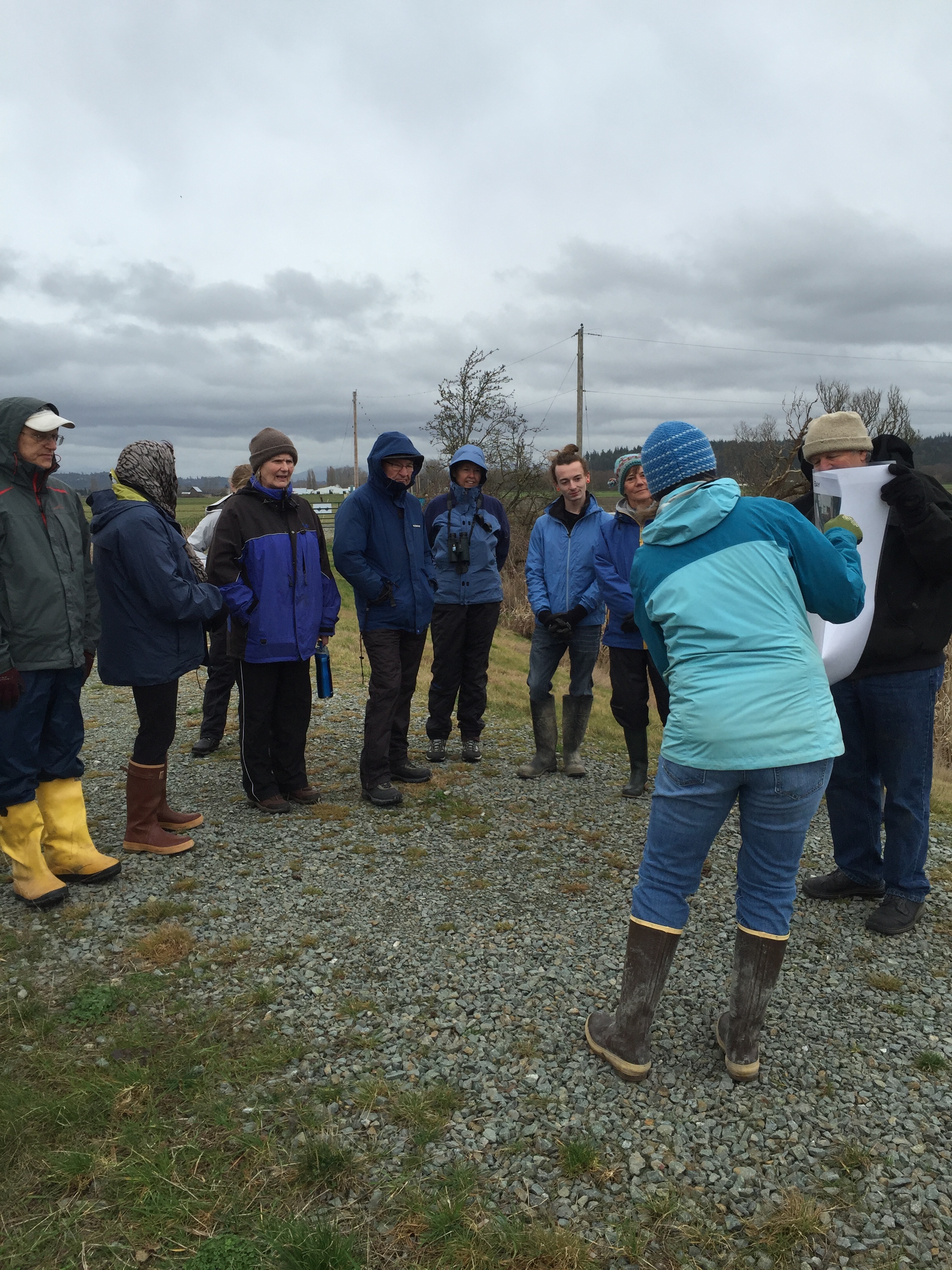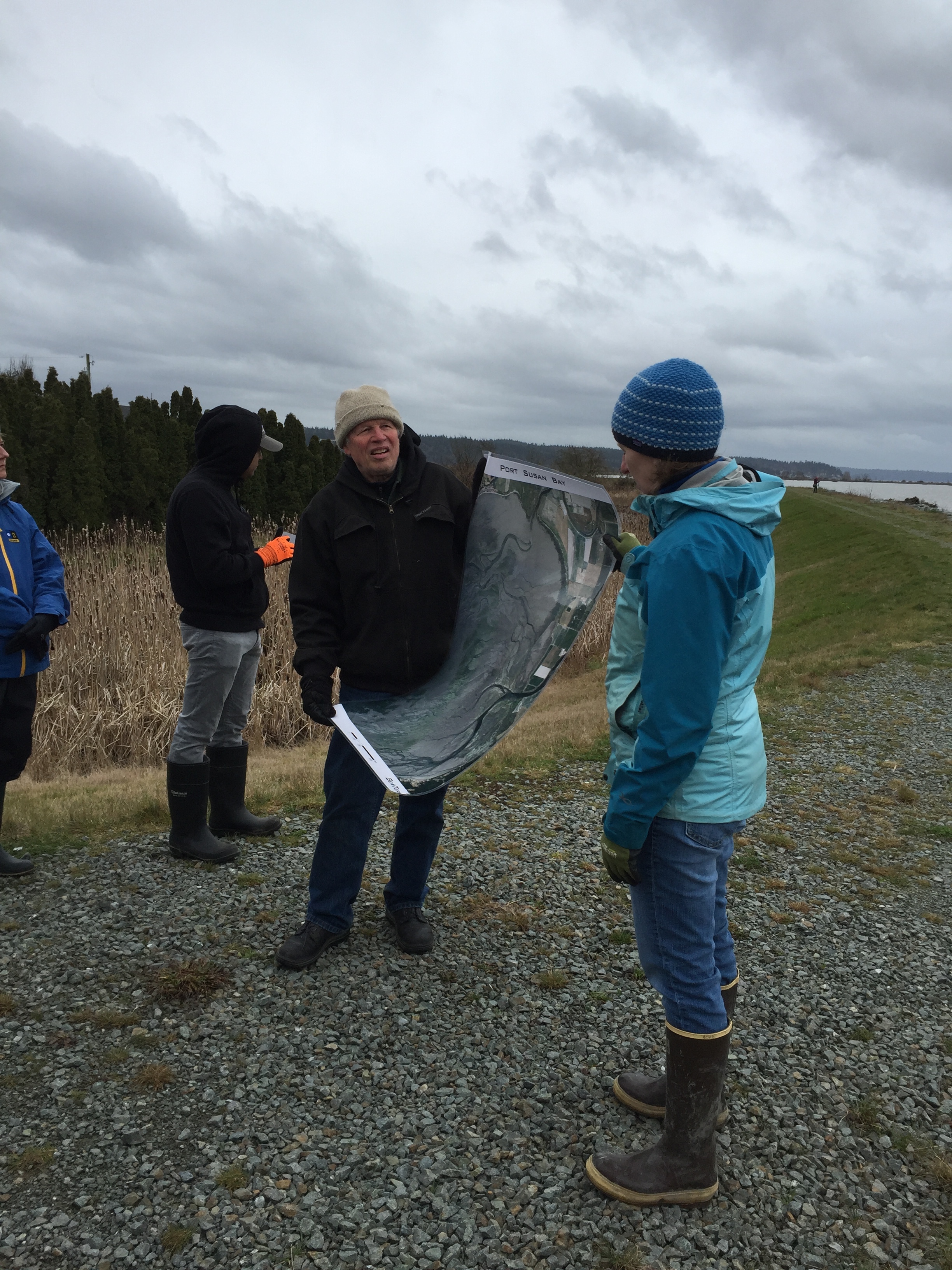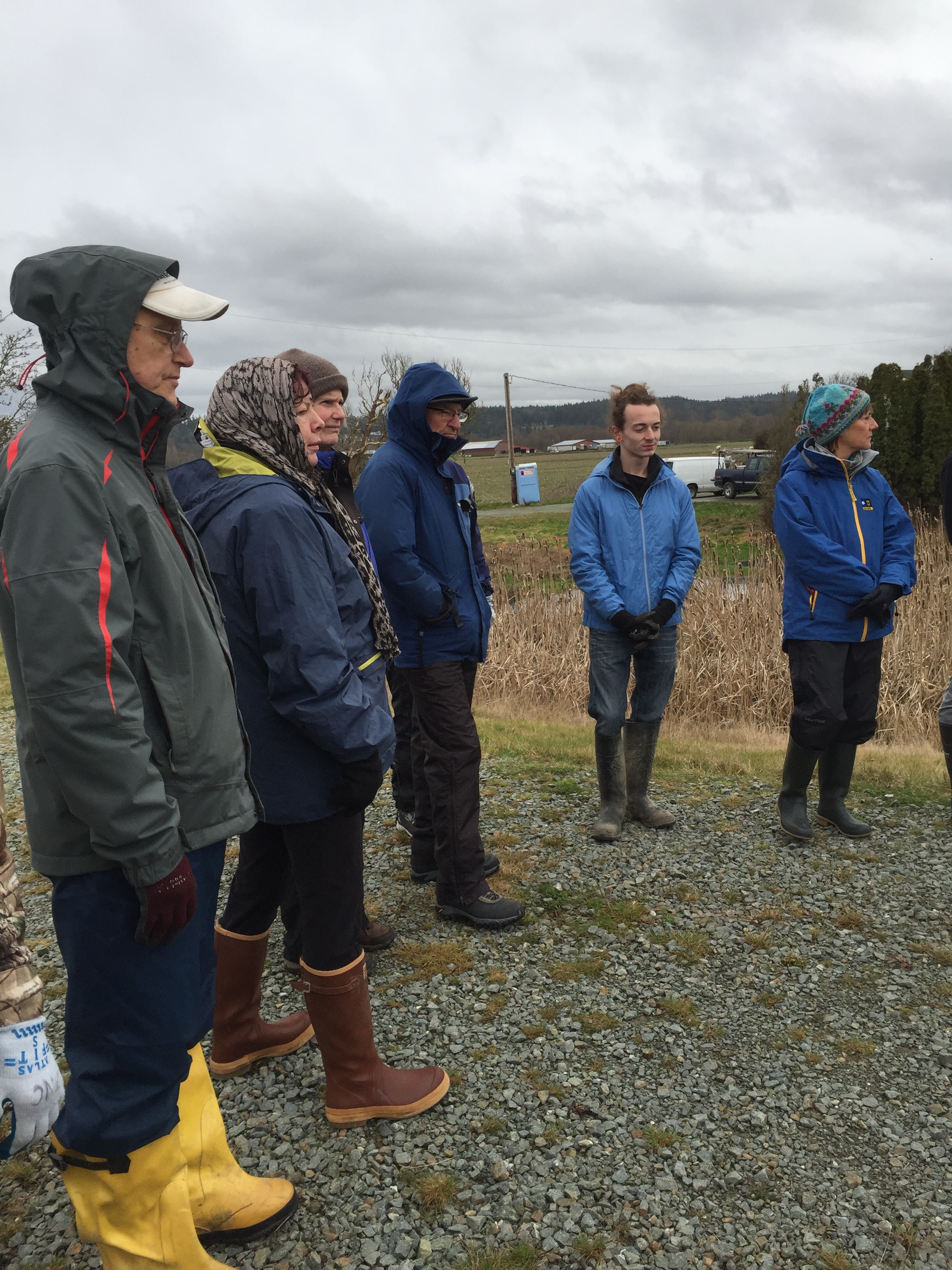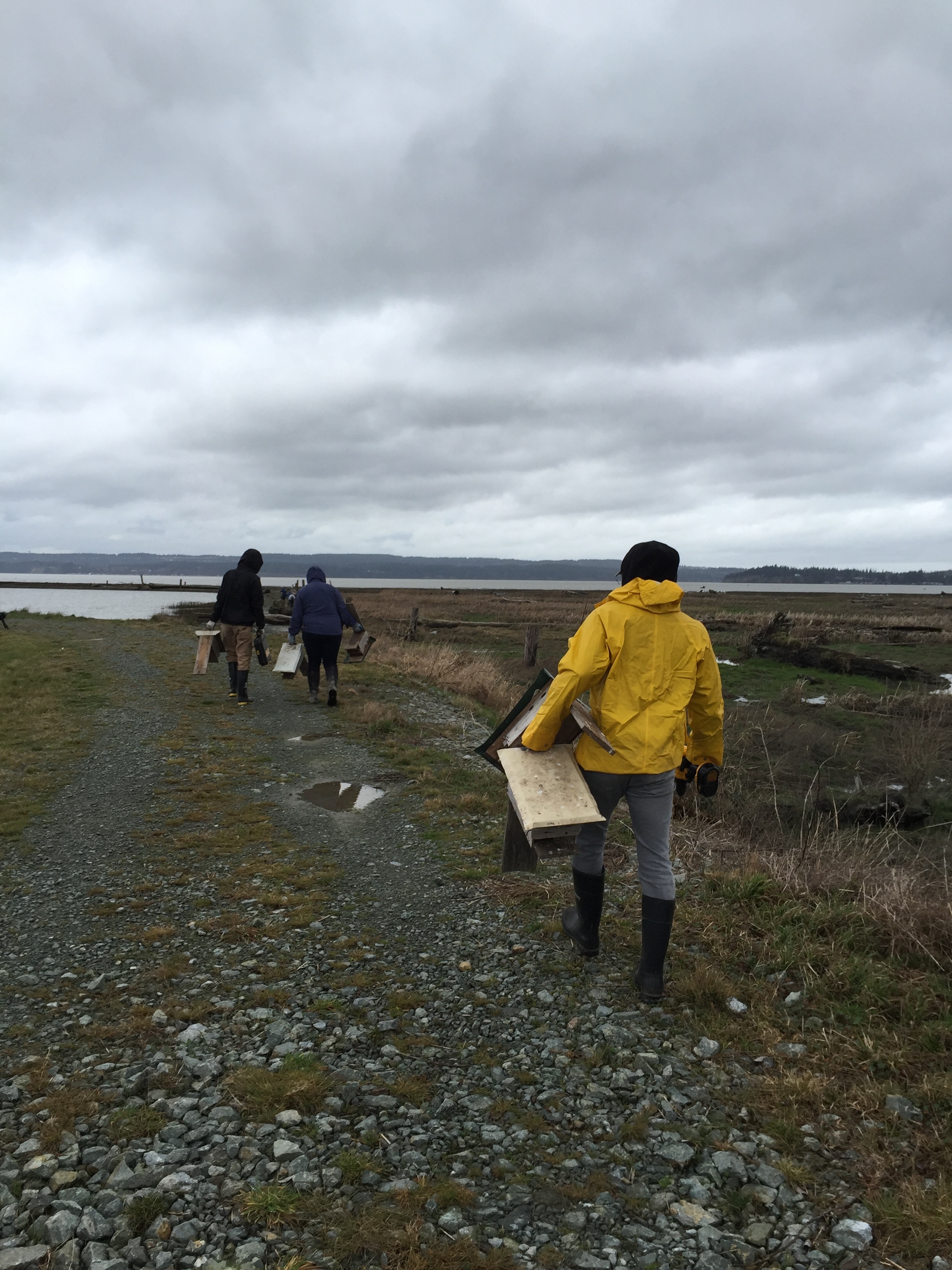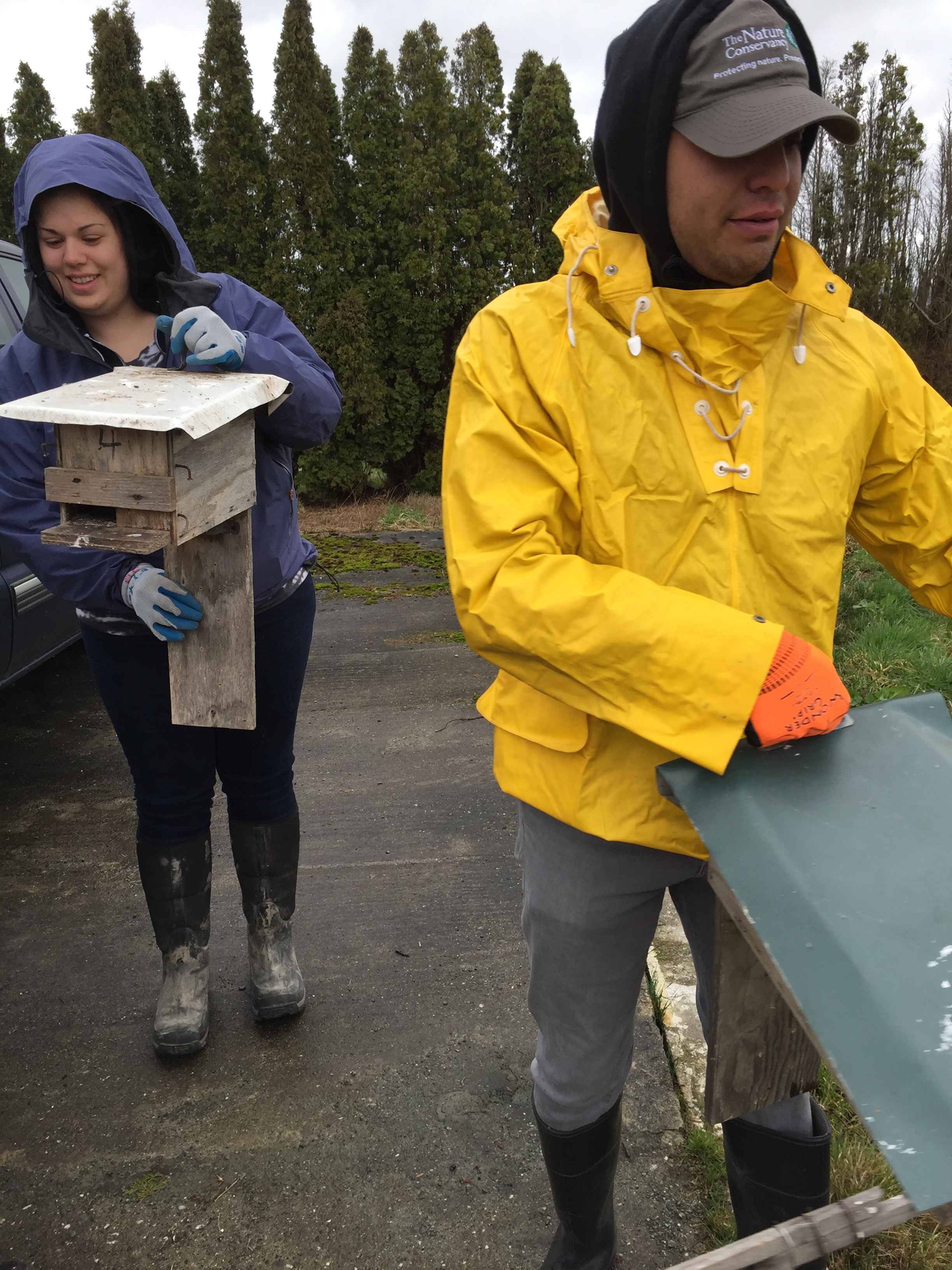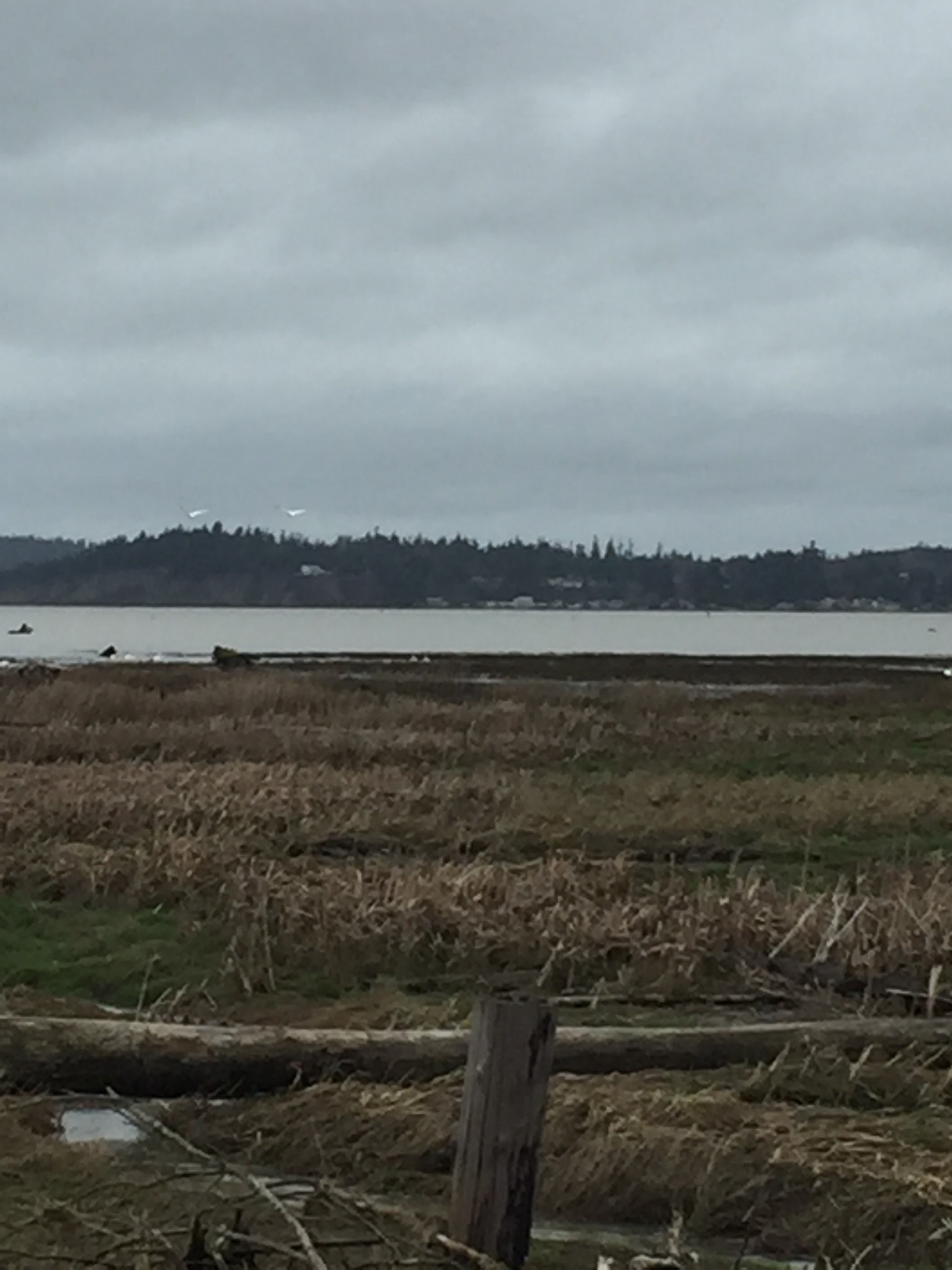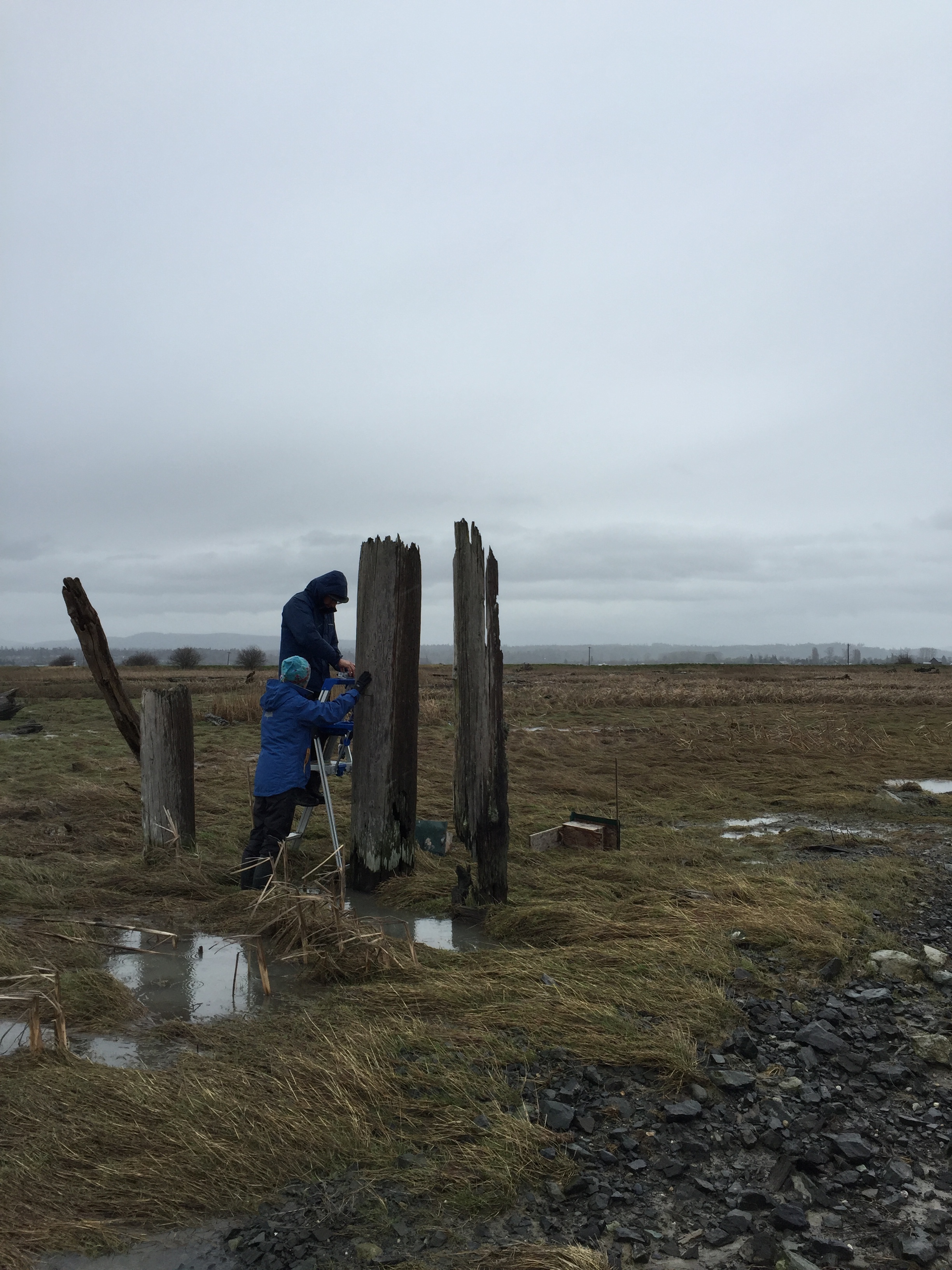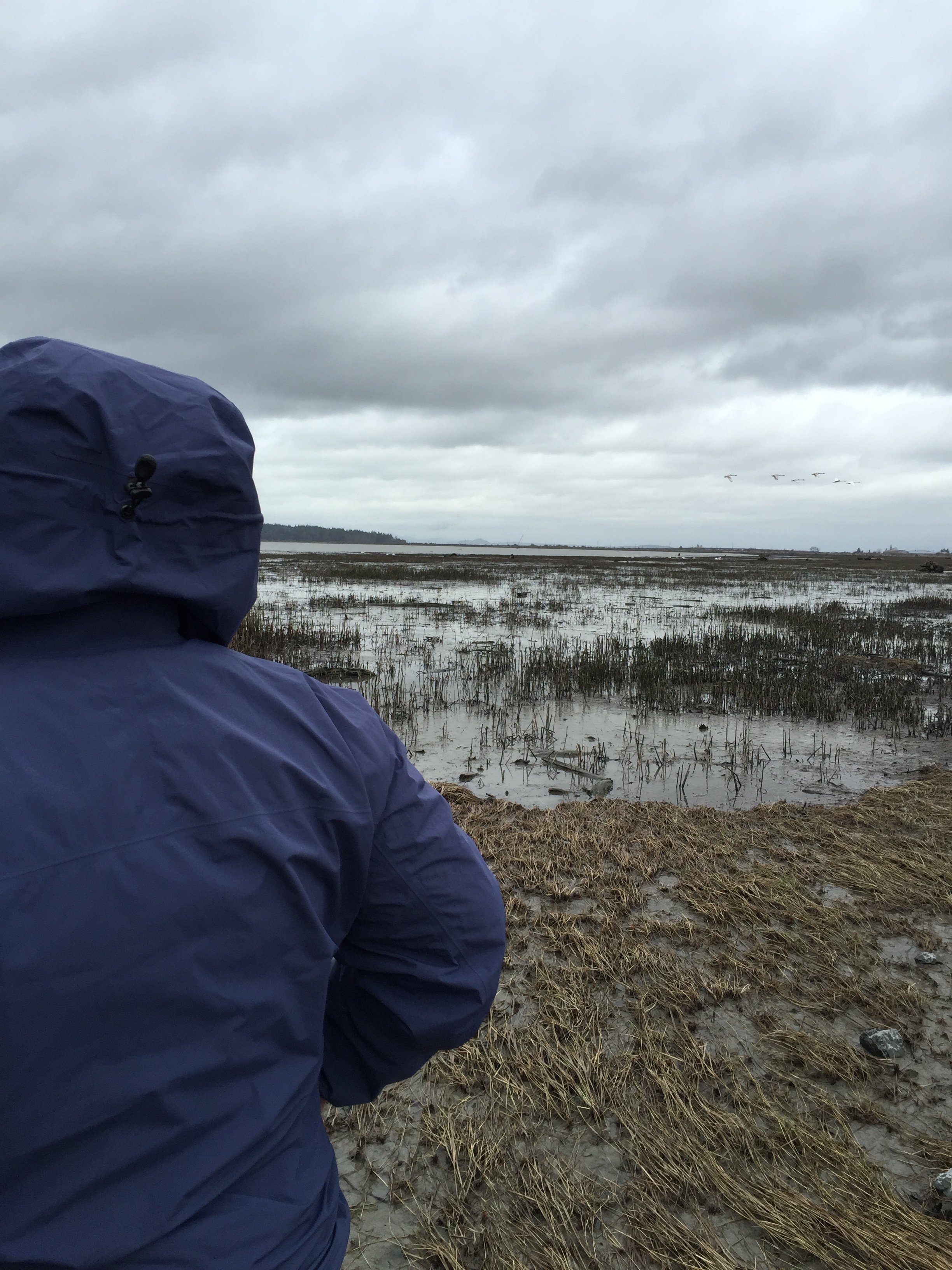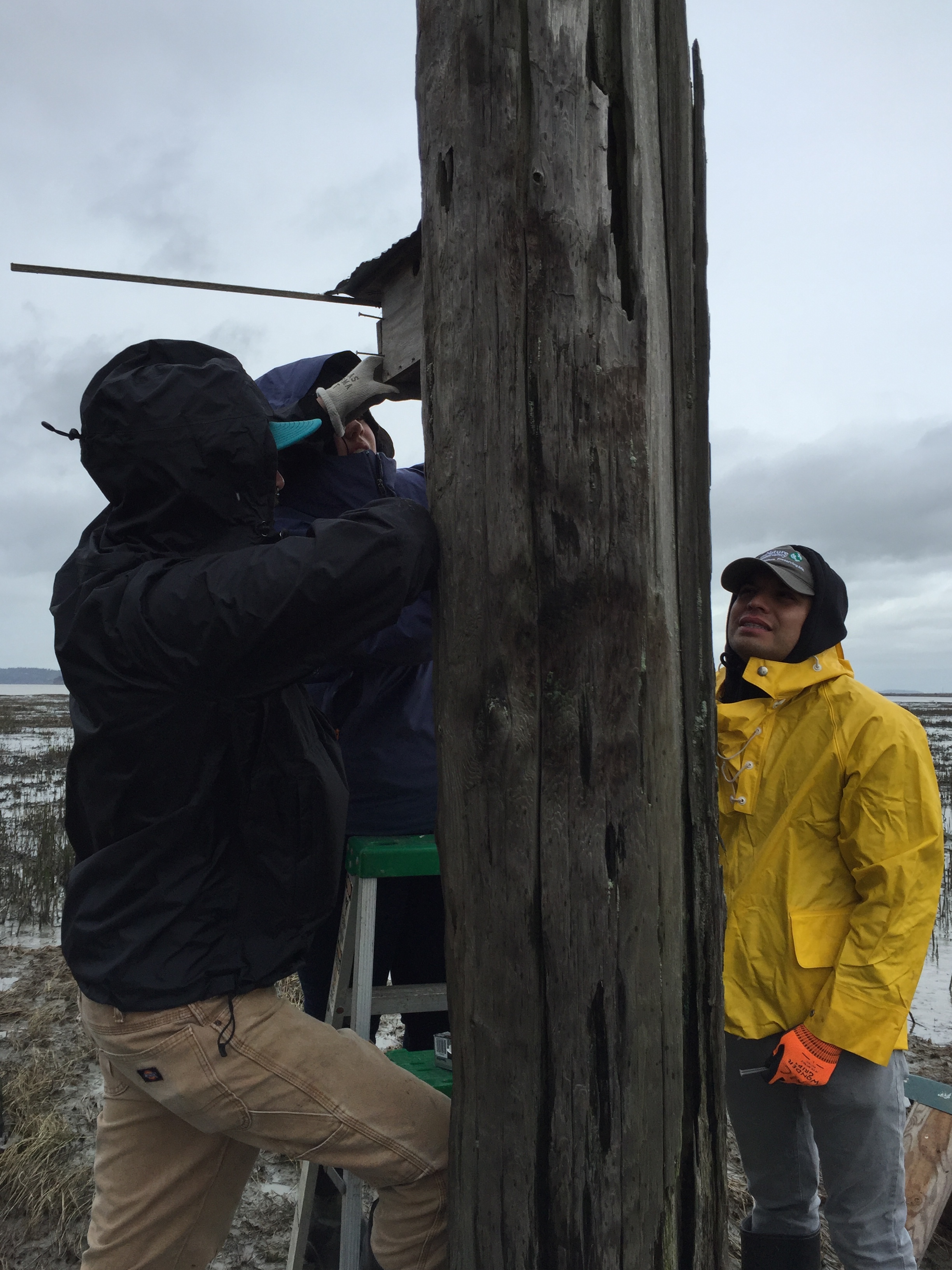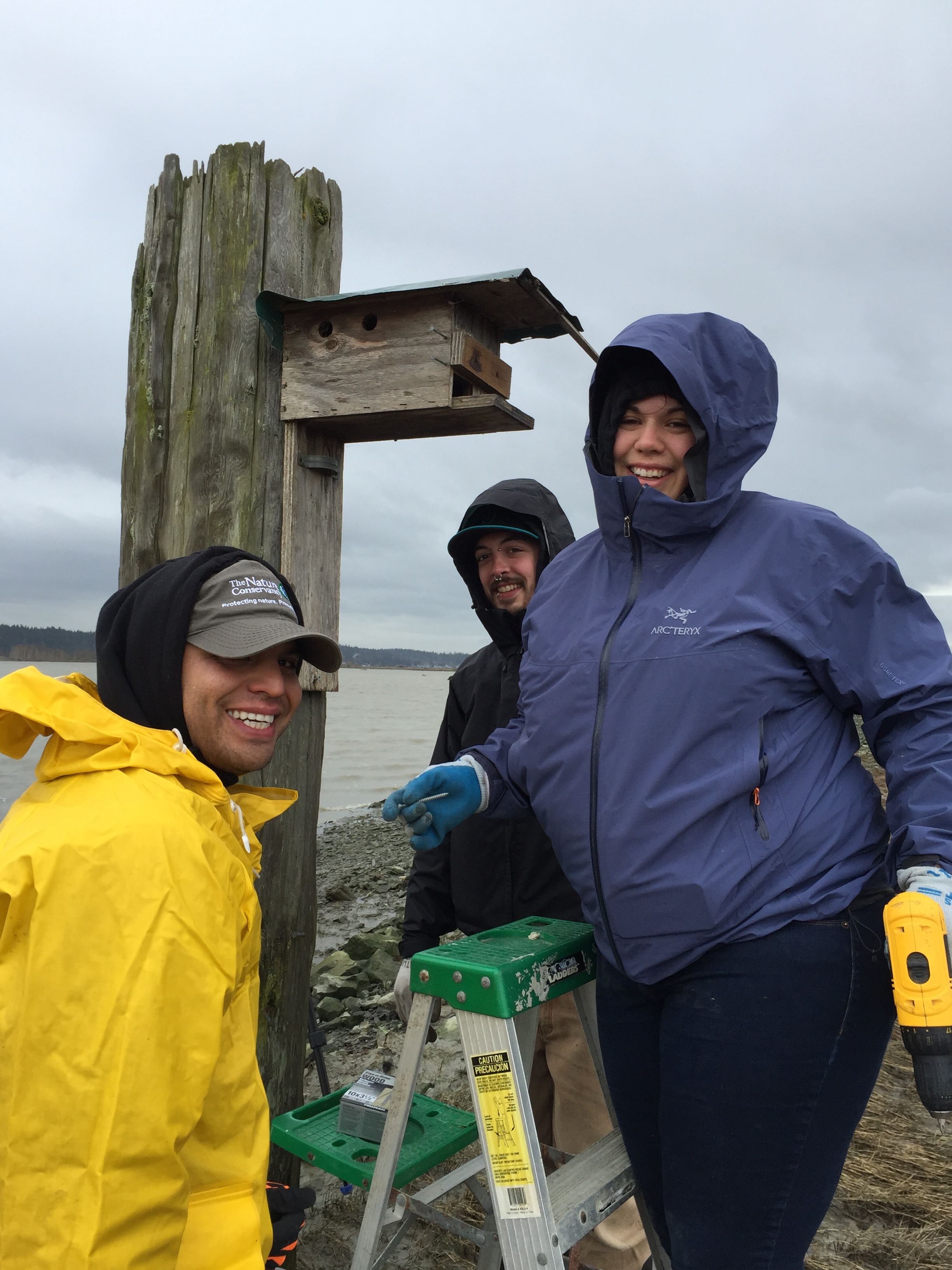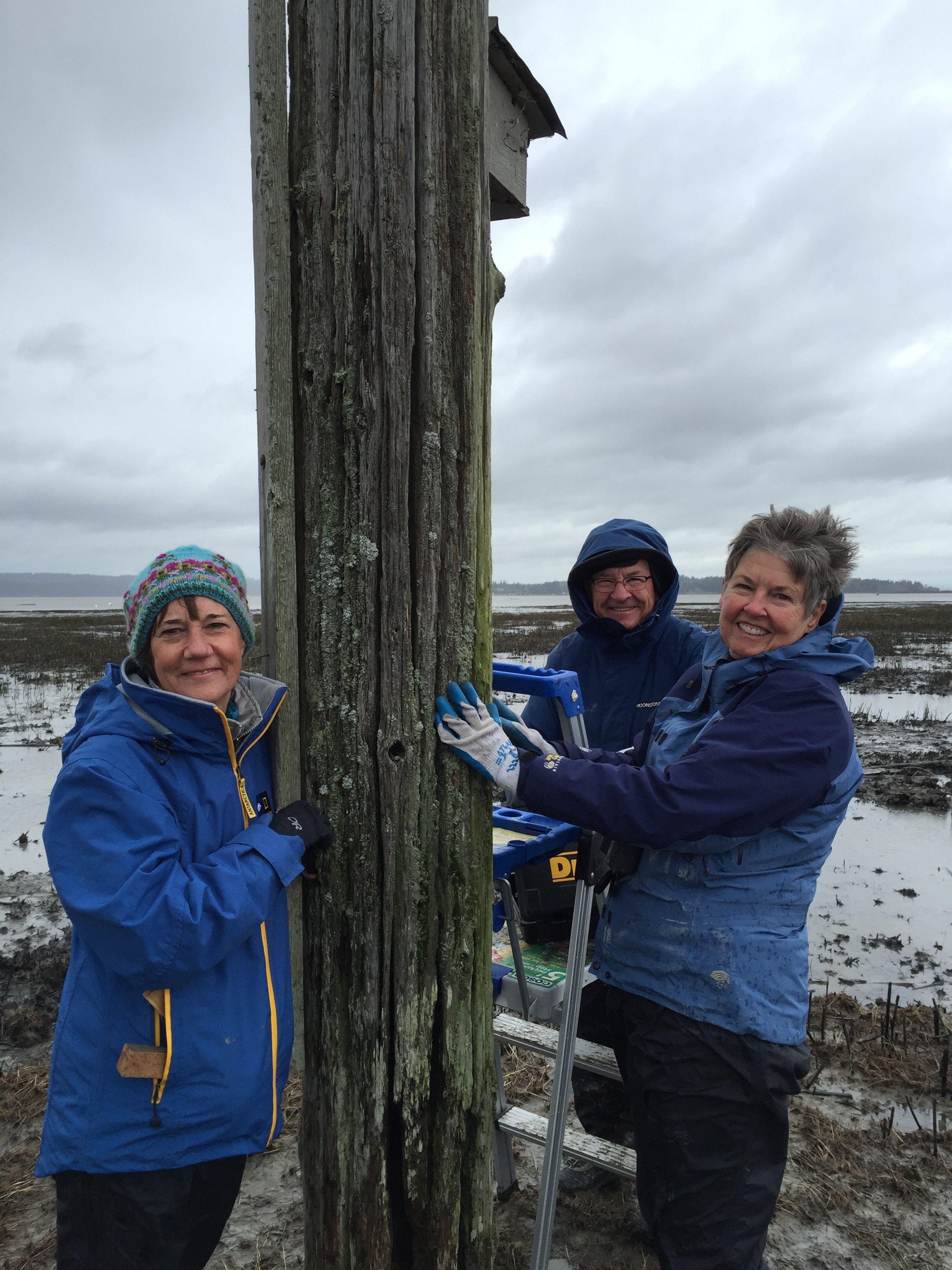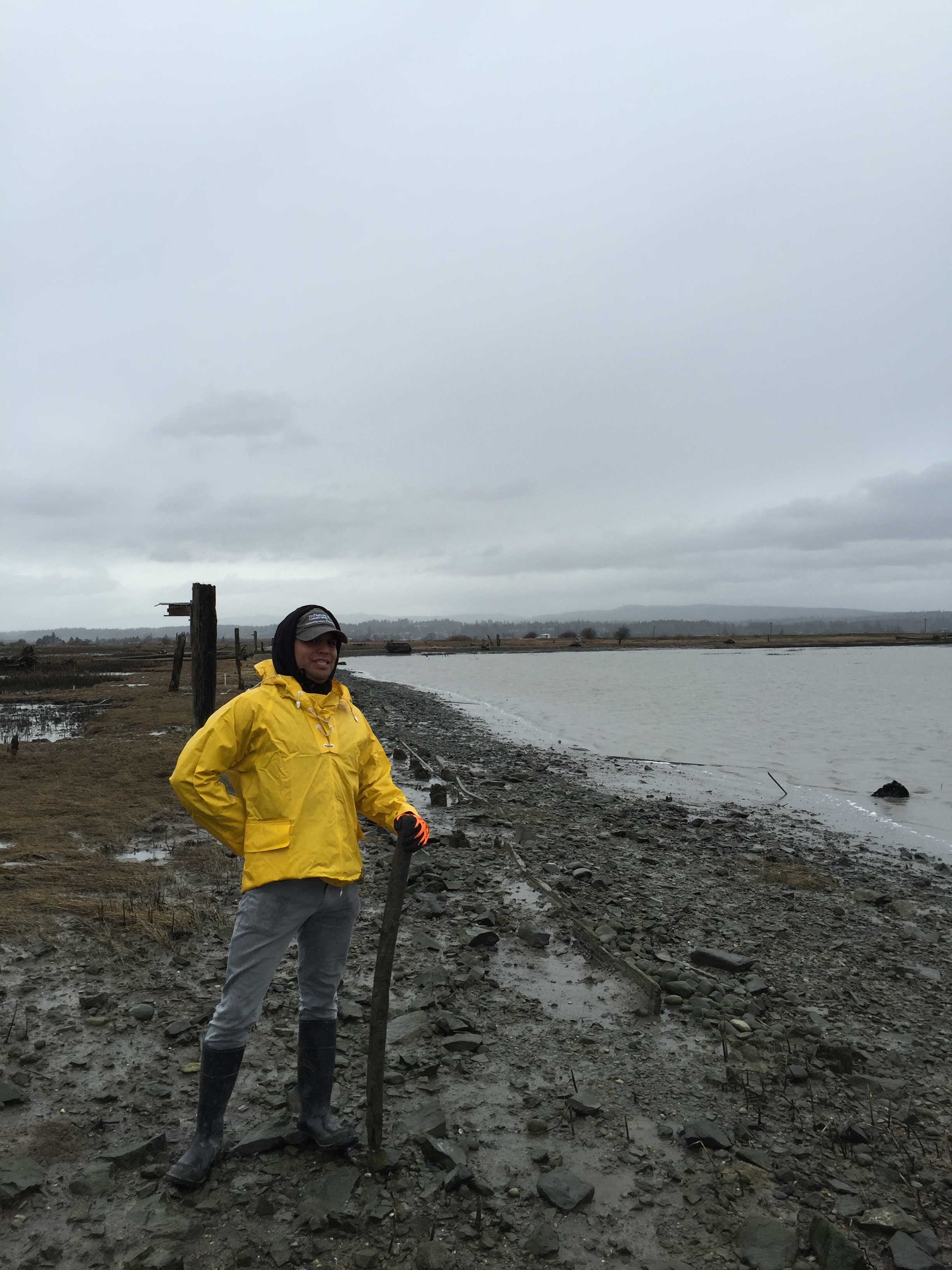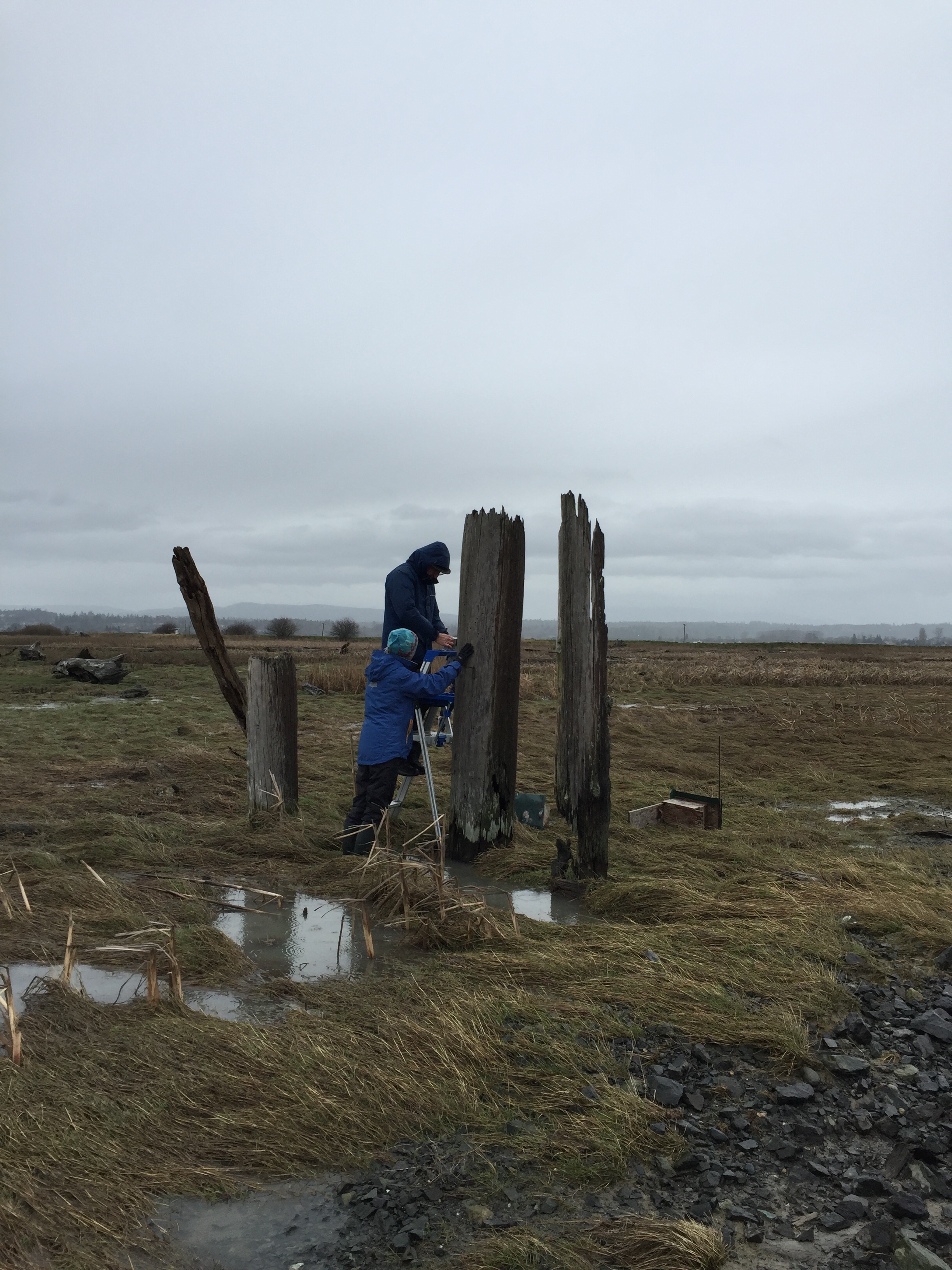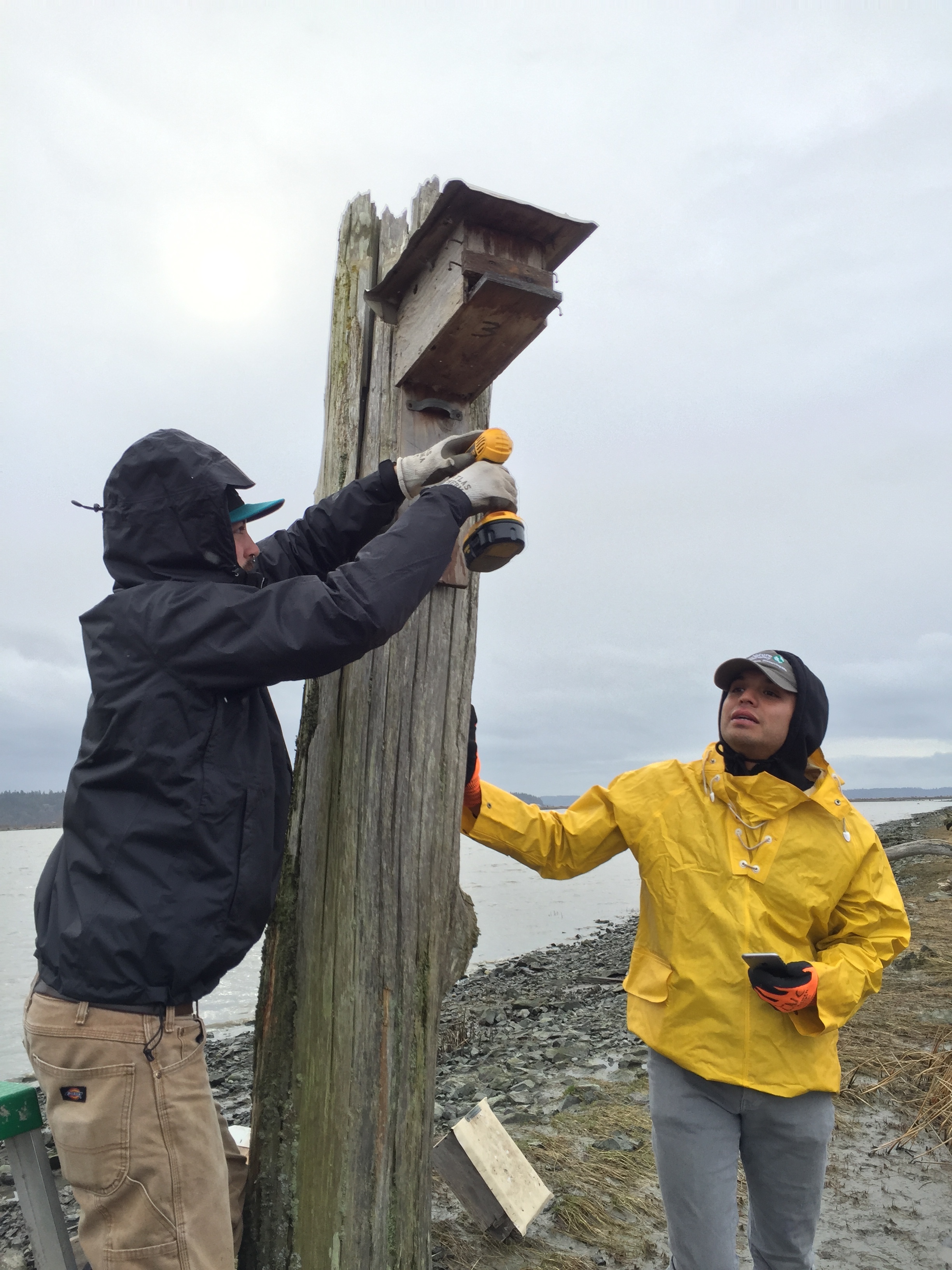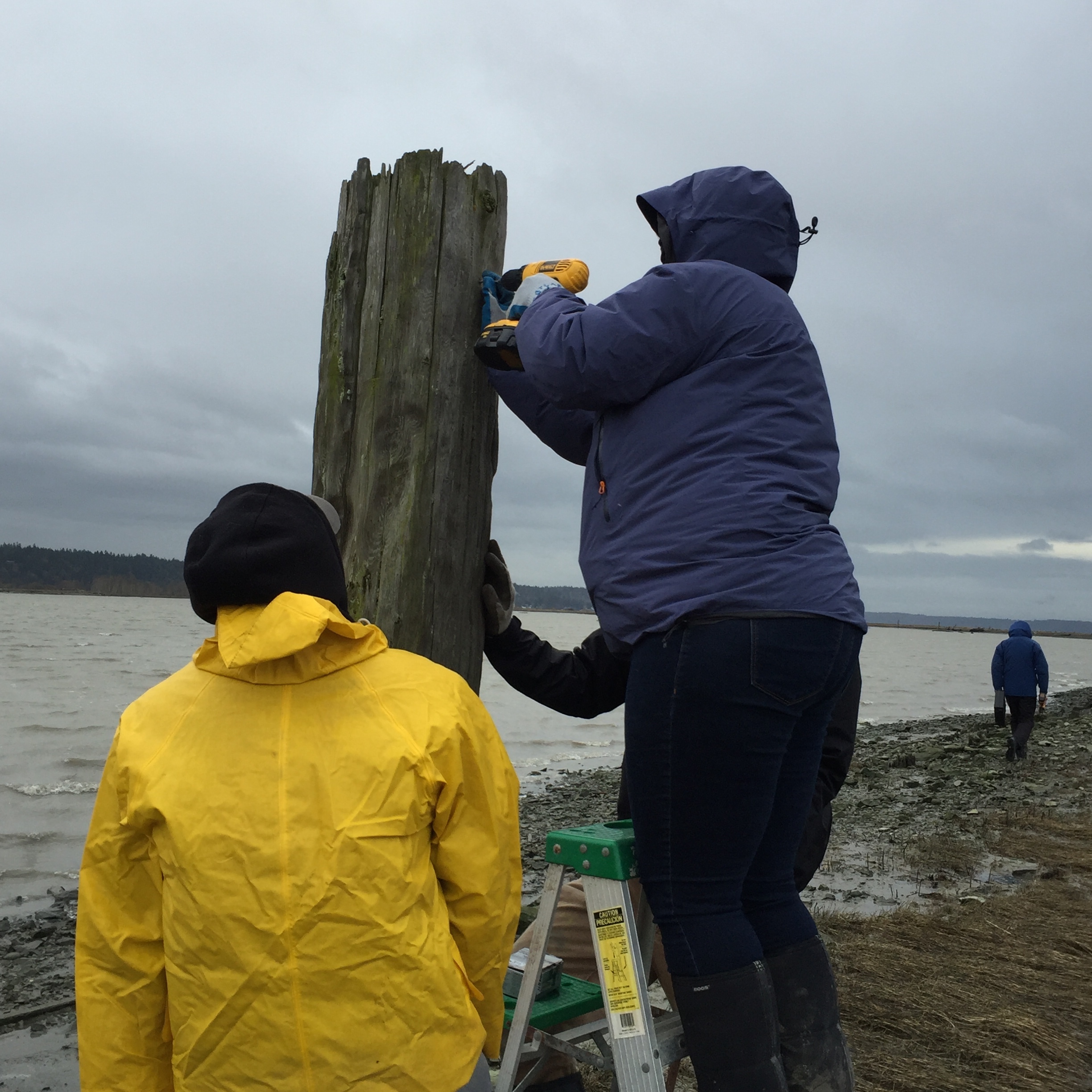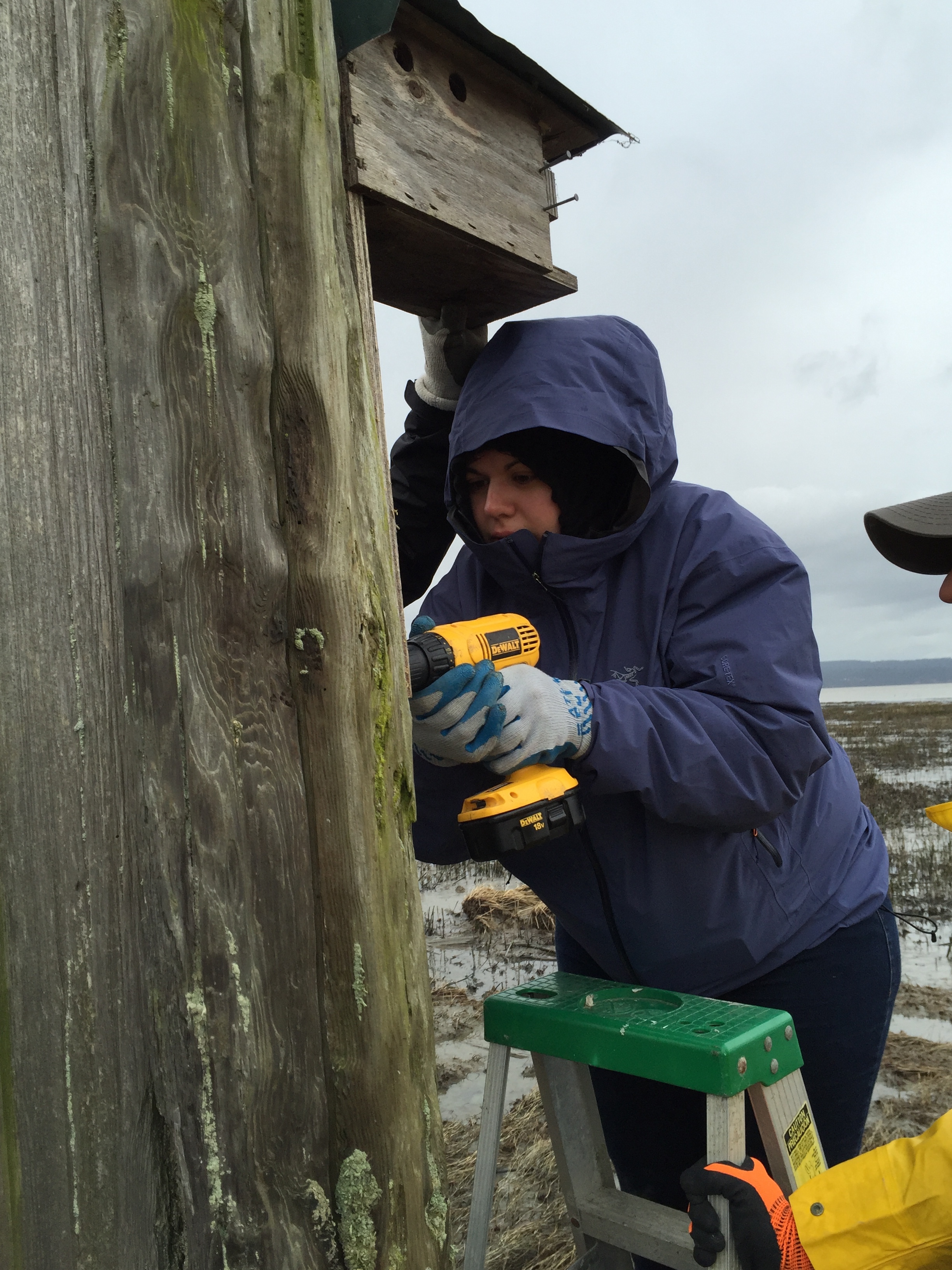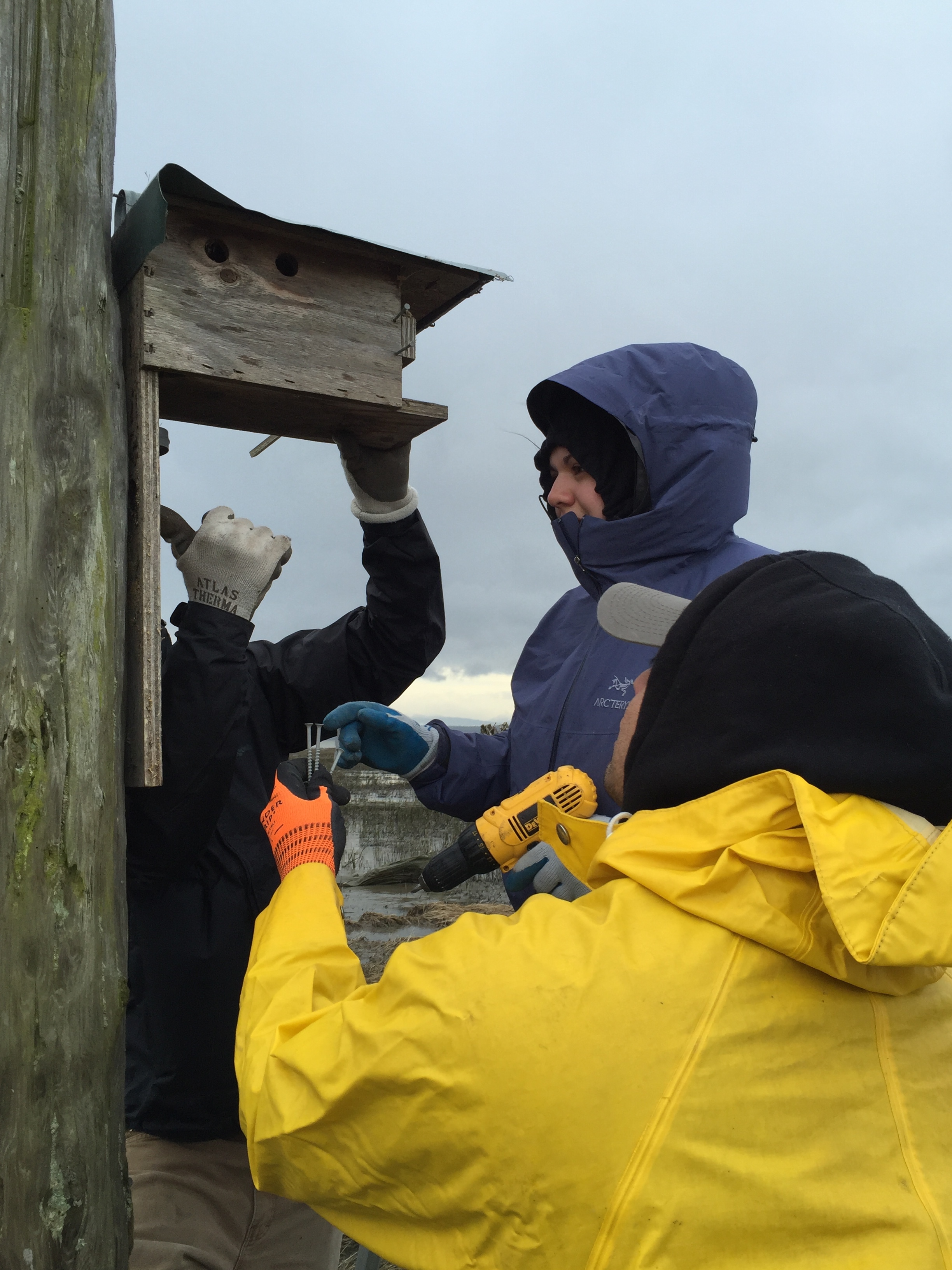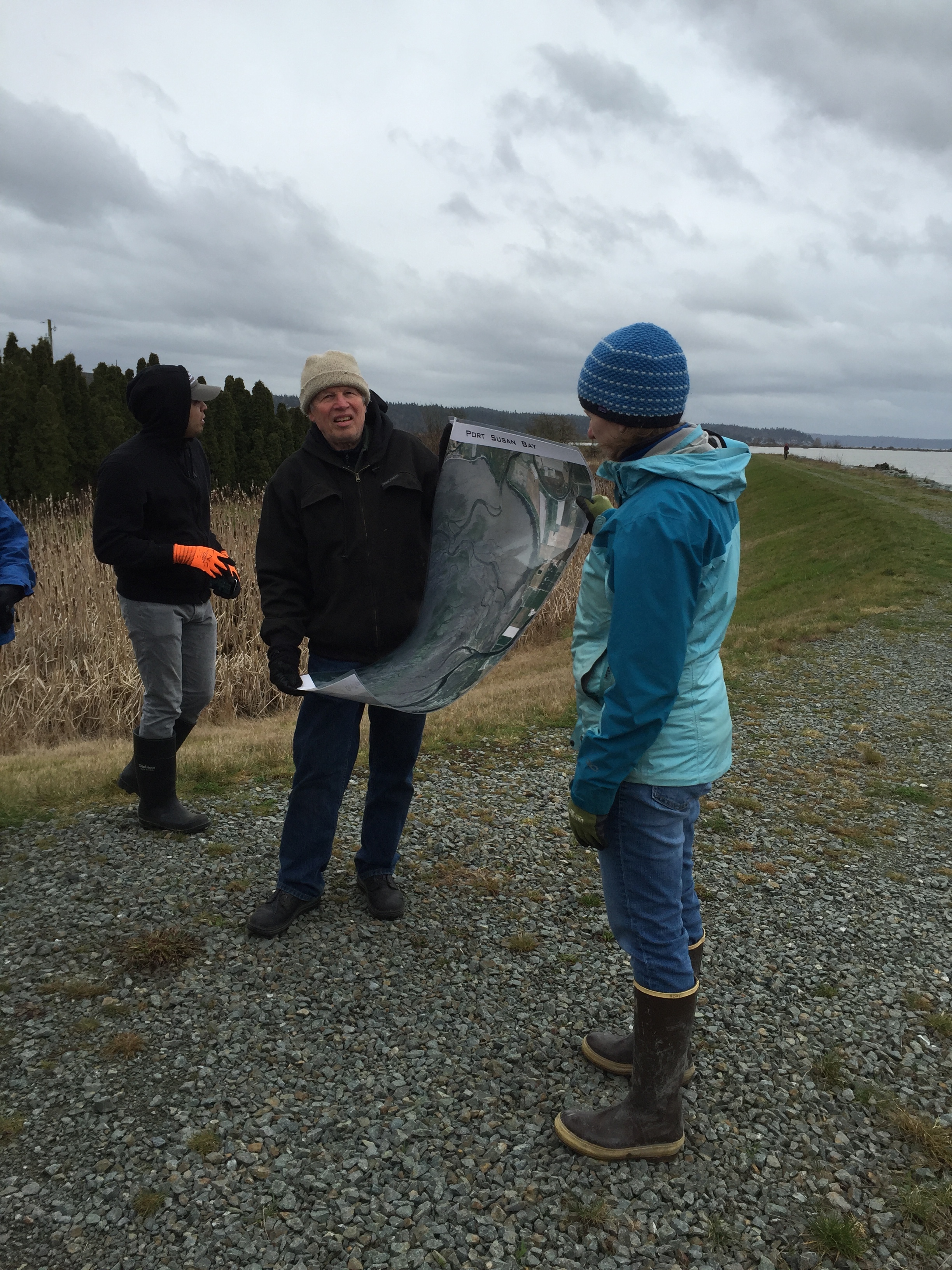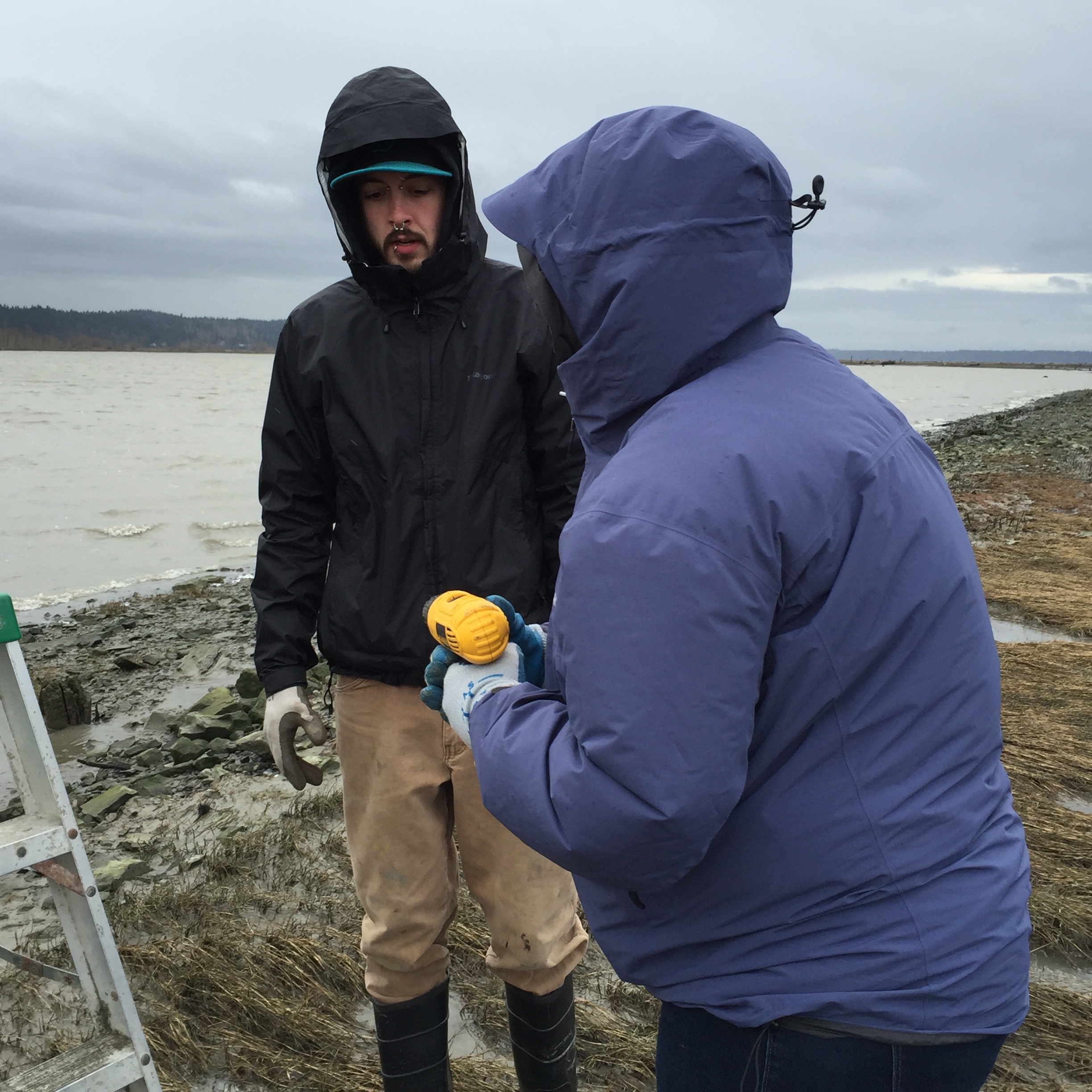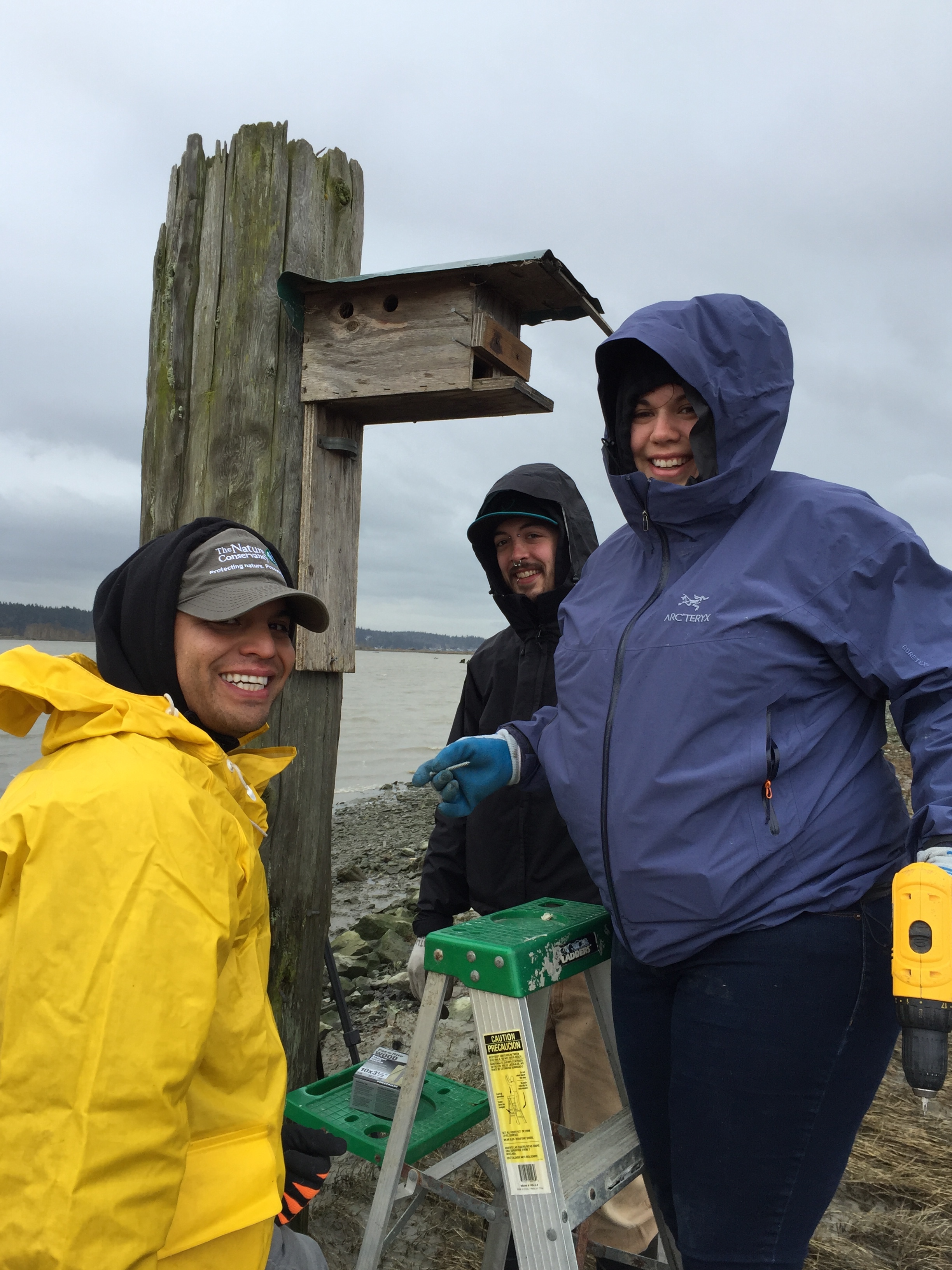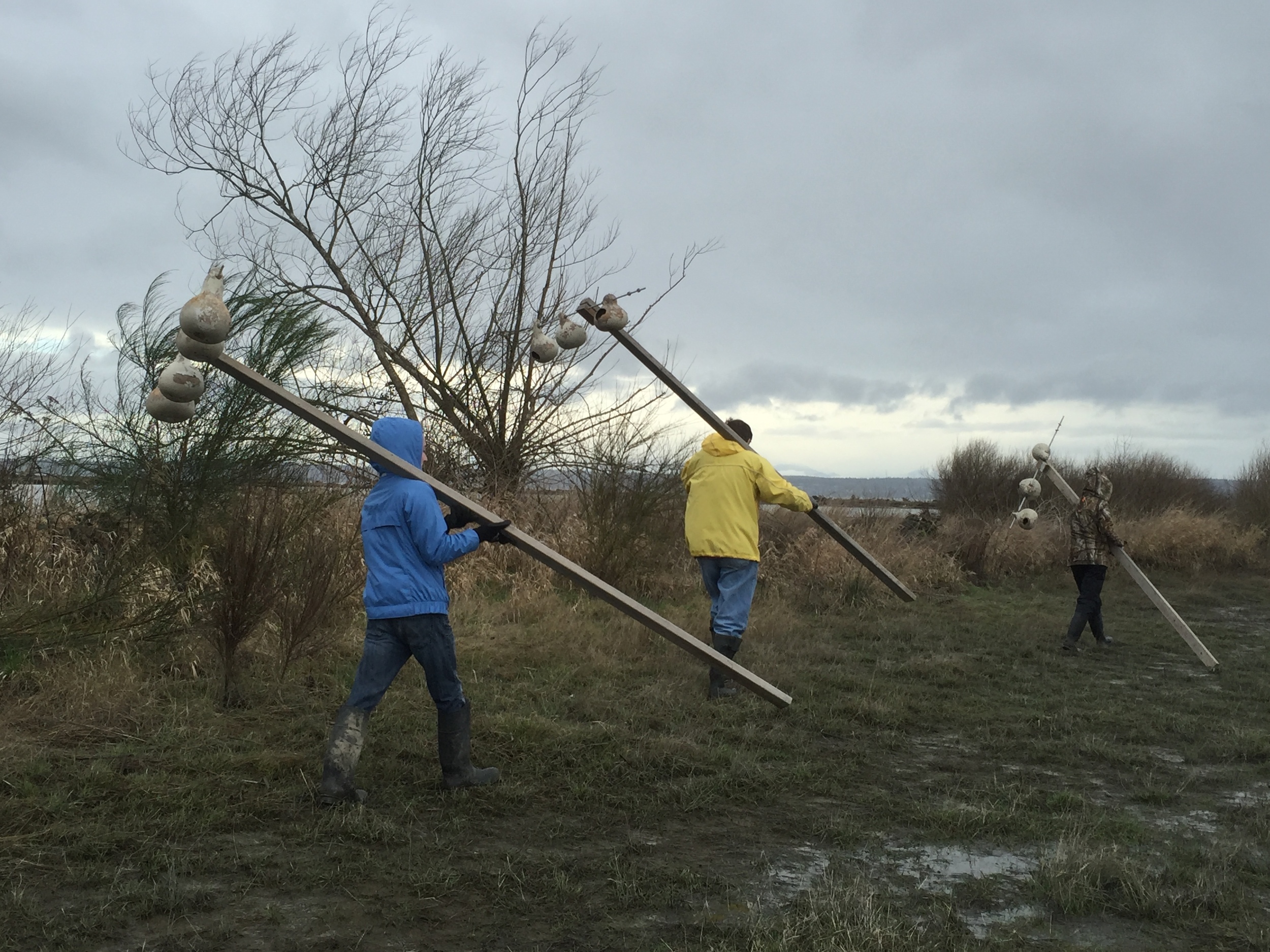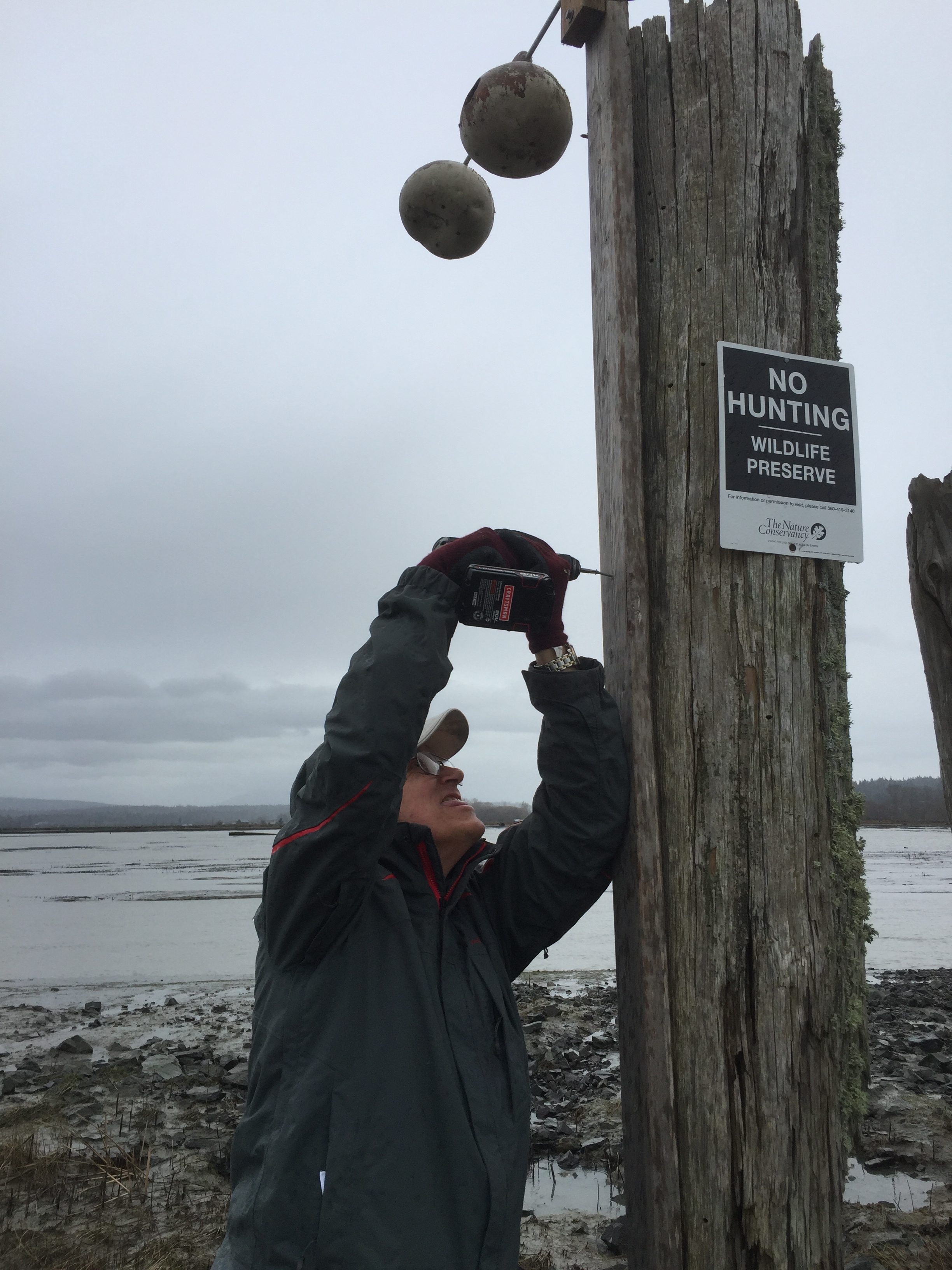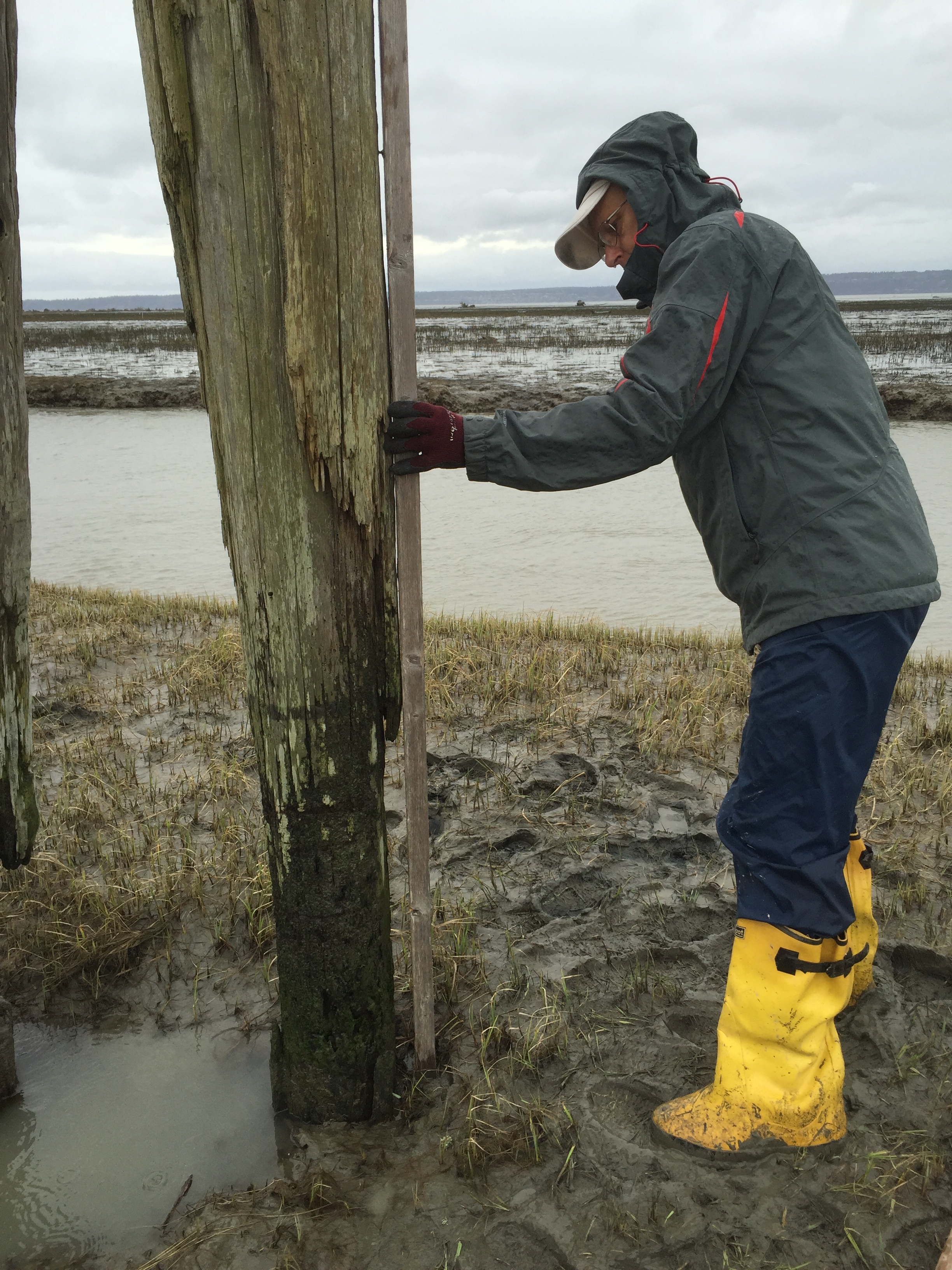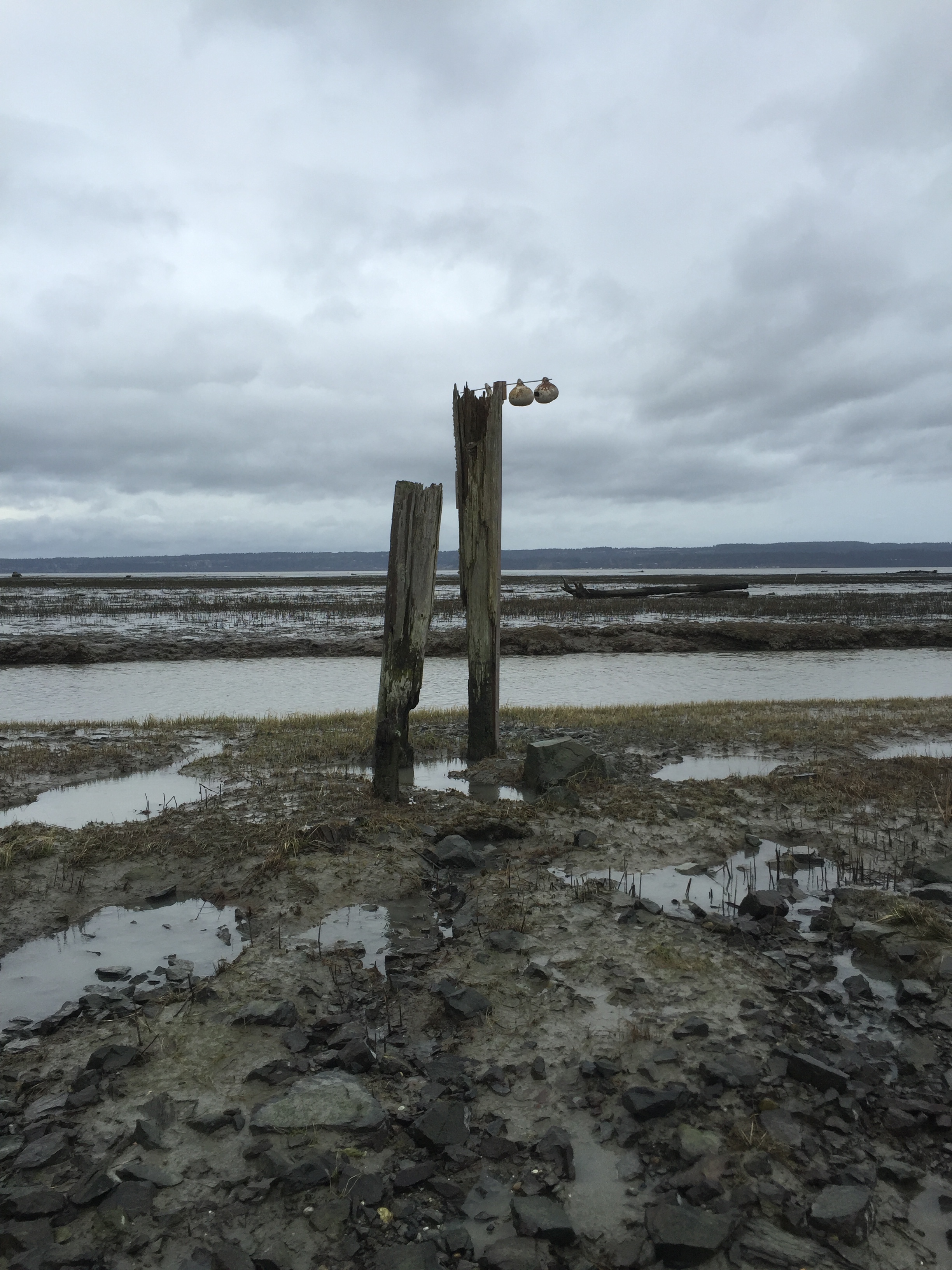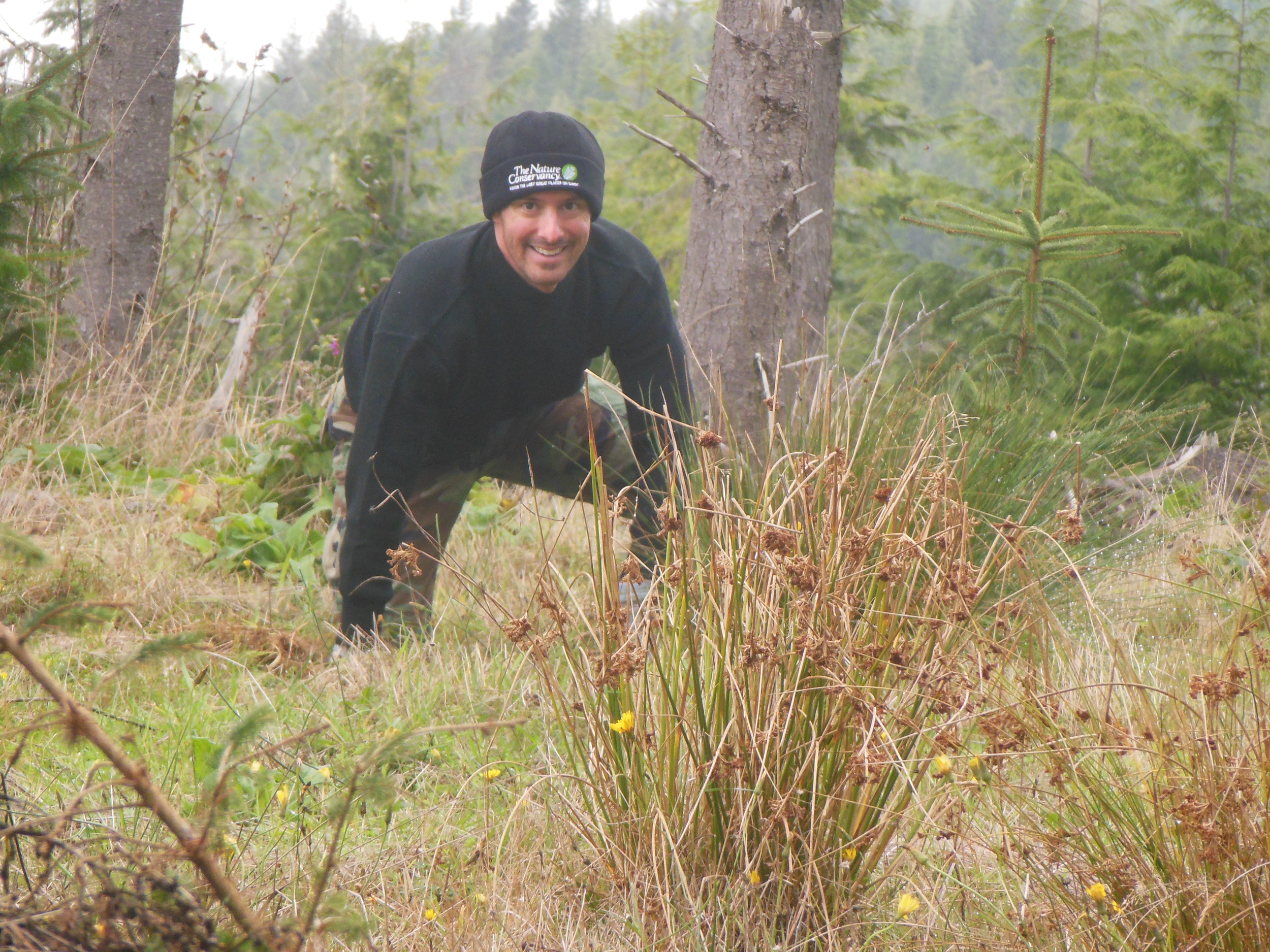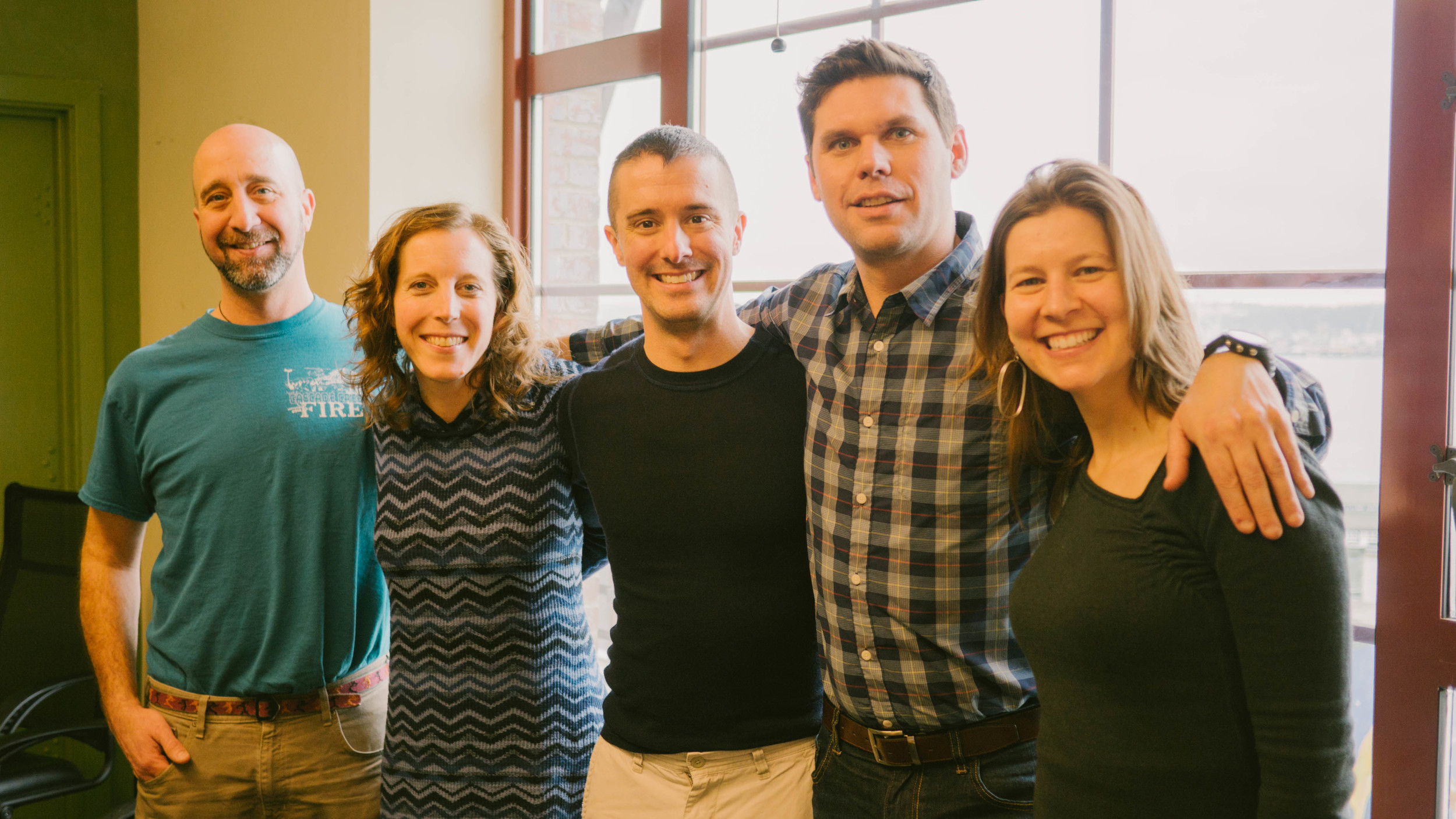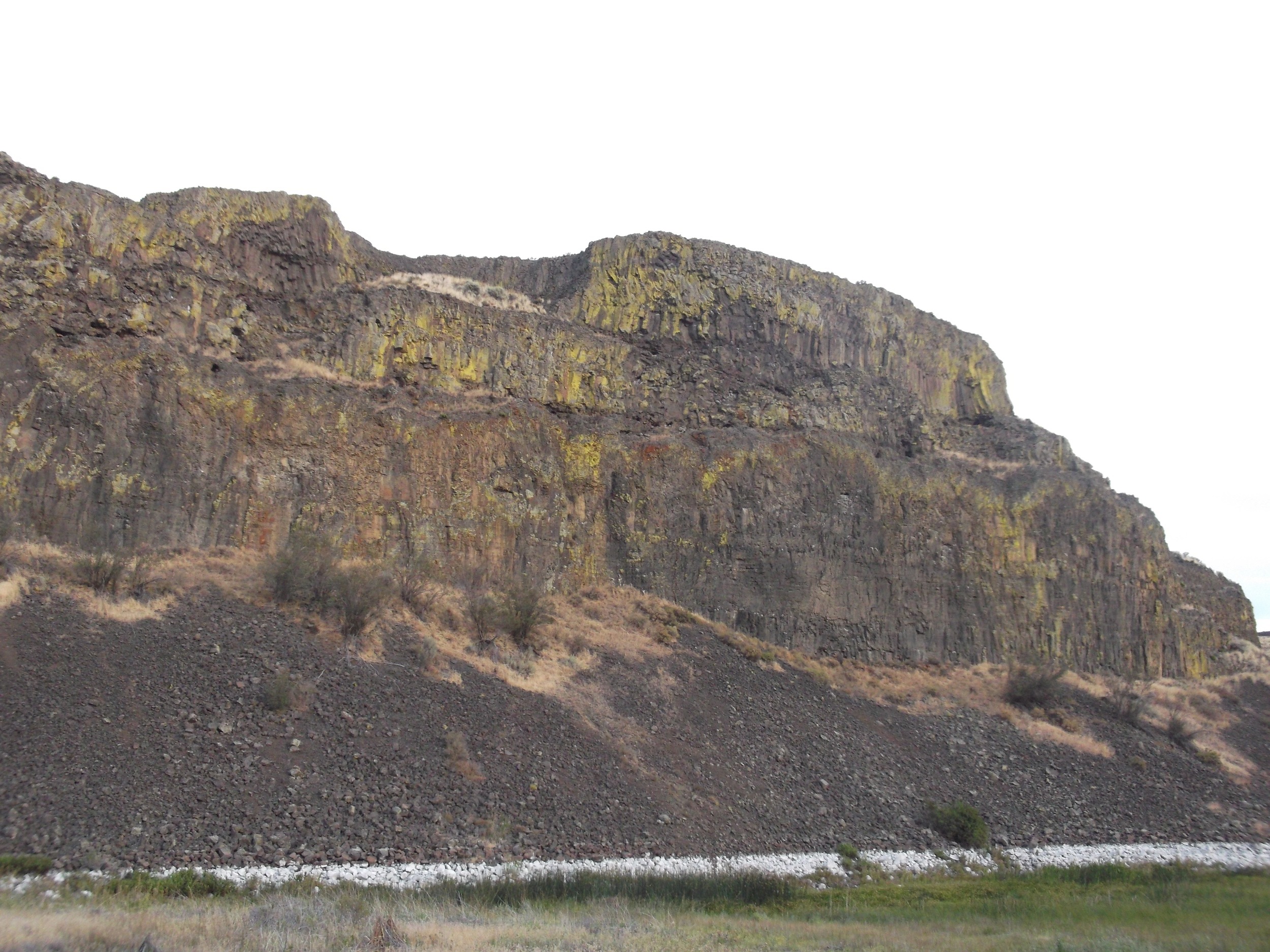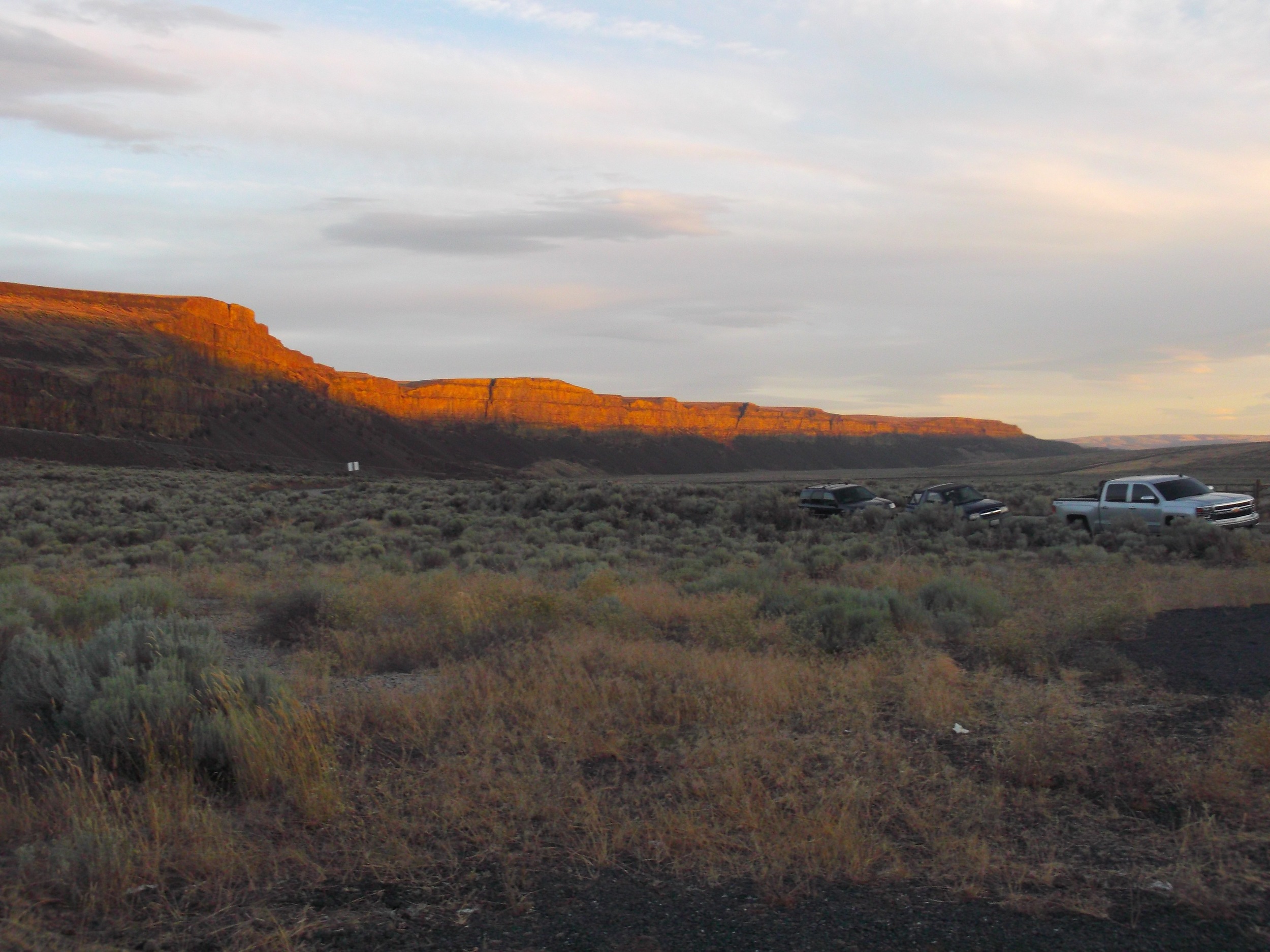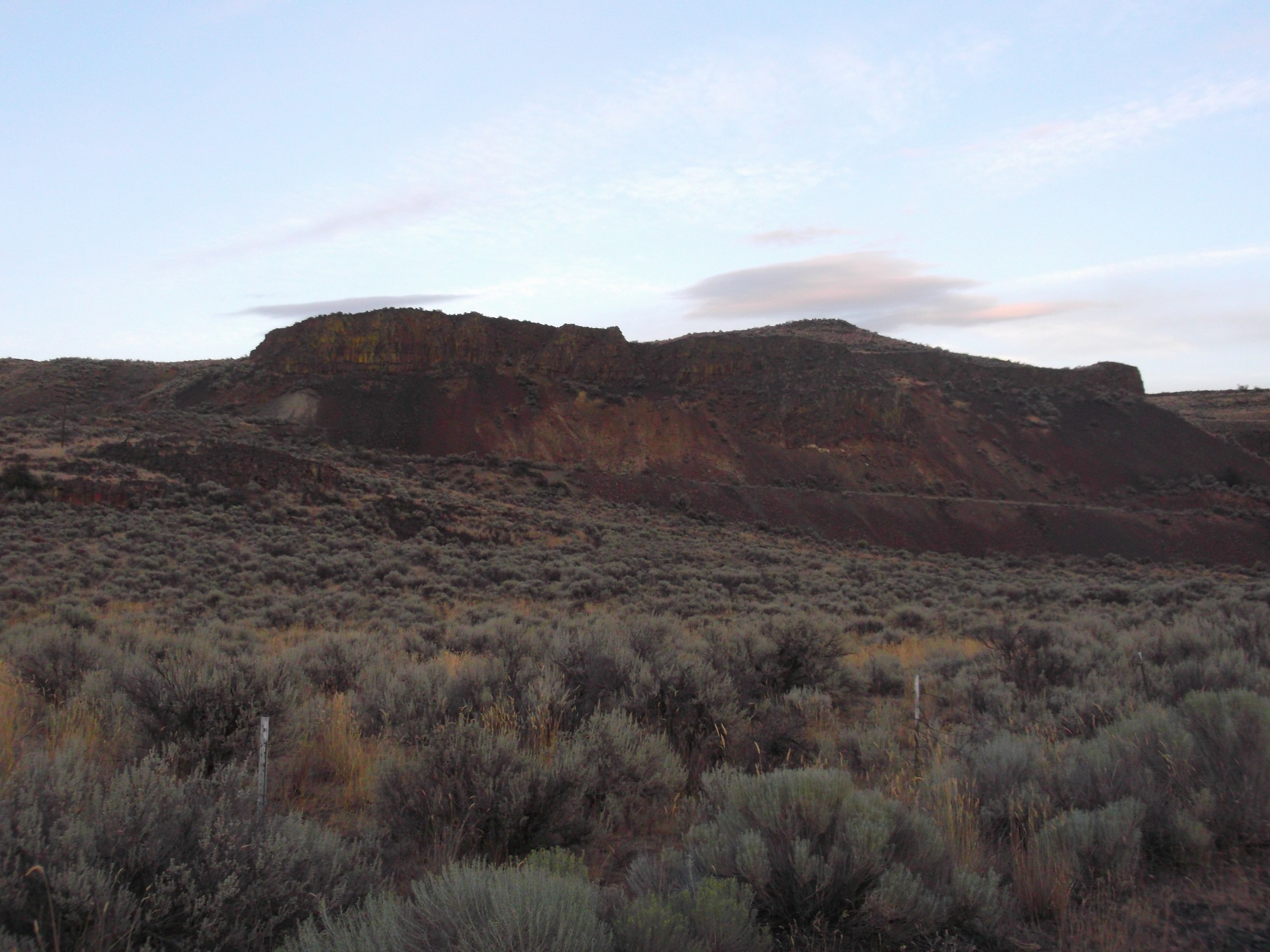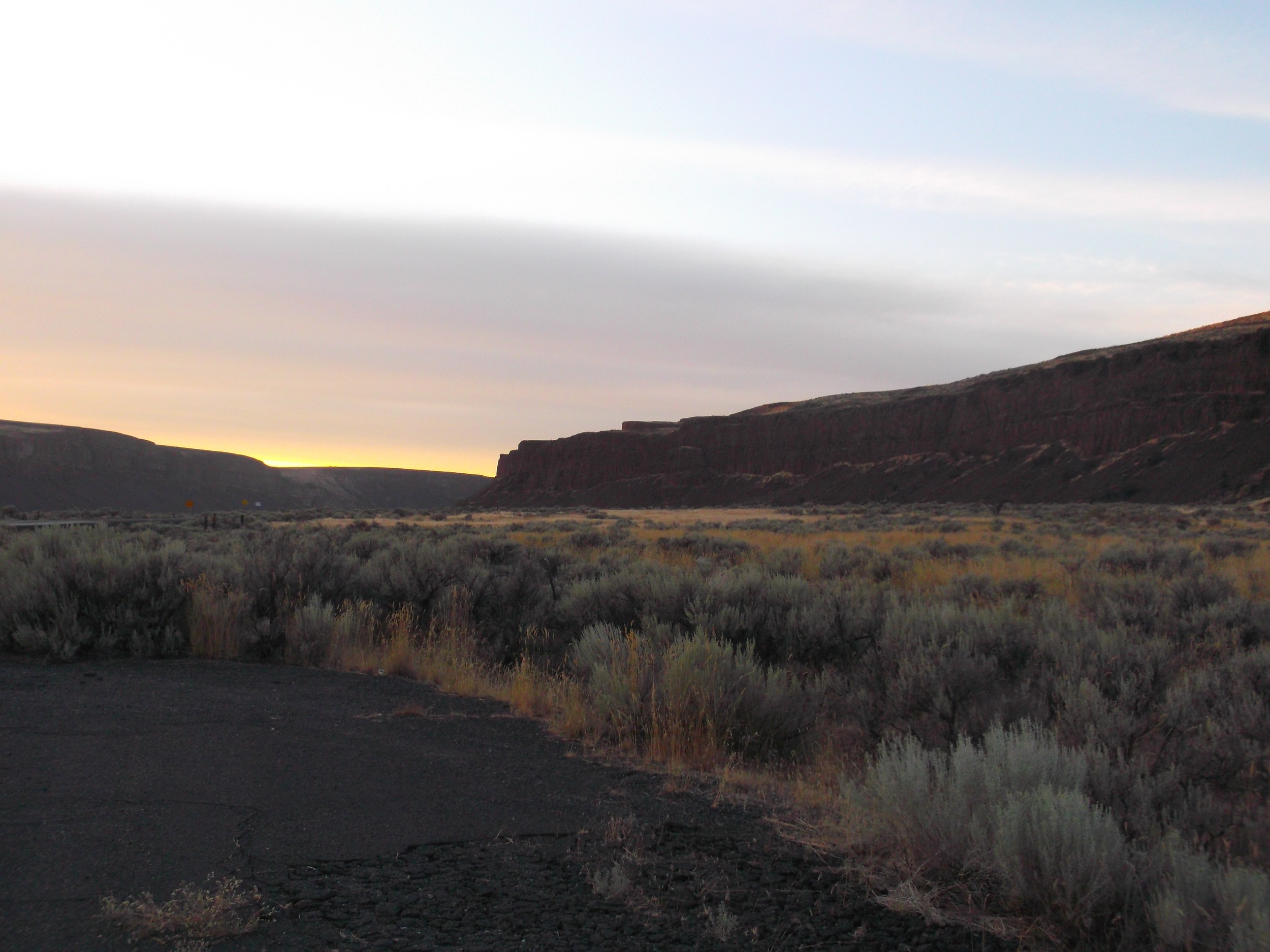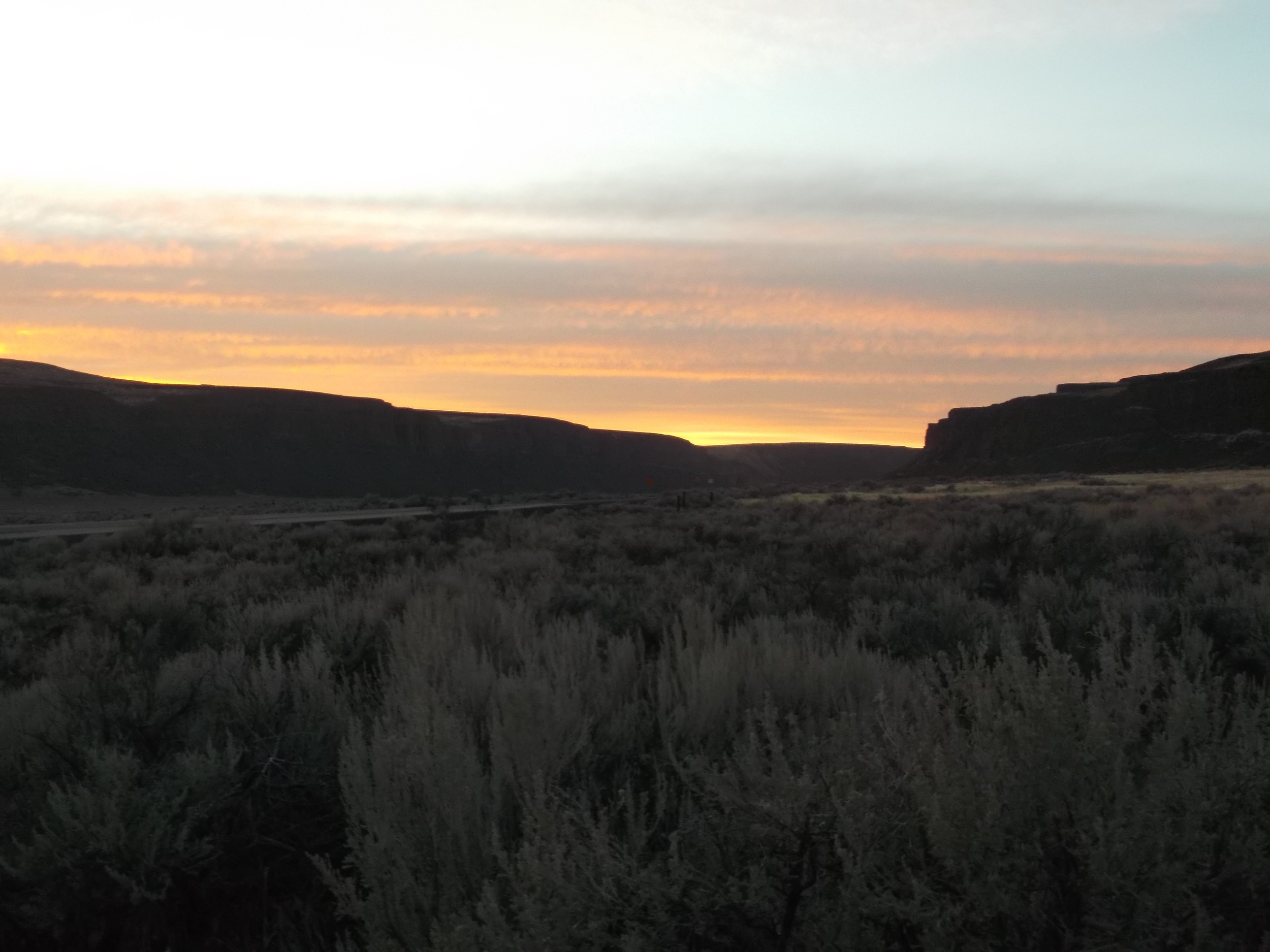Jon Cowan, Stewardship Intern, reflects about his time spent at Moses Coulee Preserve, a Nature Conservancy owned property in Central Washington.
Making a Difference One Rain Garden at a Time
October 22nd was a successful (and sunny) day for communities and Puget Sound! Make a Difference Day (MDDAY) is a one of the largest annual single-days of volunteer service nationwide. With the help of hundreds of volunteers and dedicated partners, we truly witnessed the difference happen right before our eyes. Check out the amazing outcomes from a few of the MDDAY projects and see the photos from each event.
MDDAY Project Outcomes
8 Rain gardens
1 Green Wall (Seattle’s longest at 136 feet in length!).
4,000 sq. ft + of depaved space planted with native plants.
150 Rain Barrels
Around 3000 plants planted
Around 300 volunteers
A rough estimation of the combine impacts of these MDDAY projects will be able to reduce about 473,000 gallons of polluted runoff that enters Puget Sound each year. That’s a half a million gallons of harmful pollution being redirected to attractive, healthy garden spaces that was made possible by hard working volunteers and dedicated staff from many organizations!
Read more about the success of a few these projects below
Tacoma
After removing 4,000 square feet of unsightly pavement from two asphalt islands in Tacoma, staff from Pierce Conservation District and City of Tacoma led a group of 90 volunteers, including staff from Lowes and KING5, who planted hundreds of trees and shrubs to beautify this space. By removing this impervious pavement the site will allow 86,400 gallons of rainwater to naturally infiltrate into the ground, water the plants, and reduce the amount of pollution each year.
Photos by Christin Hilton, Conservancy Urban Partnership Director
Poulsbo
Around 40 volunteers helped Kitsap Conservation District and the Conservancy to plant 6 residential rain gardens complete with native and edible plants! These rain gardens will help clean Liberty Bay by reducing the amount of polluted run off that flows into this body of water.
Photos by Emily Howe, Conservancy Aquatics Ecologist
Mill Creek
Volunteers from Lowes Heroes, KING5 News, and Phillips Law Firm participated in some friendly competition while building rain barrels for MDDAY. The barrels used were re-purposed from containers for fruit juice concentrate, complete with a fruit punch aroma. After a demonstration from Snohomish Conservation District staff, these fast working volunteers built 150 rain barrels in less than 2 hours! Rain barrels help the environment by capturing rain water that flows off of rooftops before it runoffs onto roads and driveways, where it picks up pollutants and eventually flows into Puget Sound.
Photos by Kat Mogan, Puget Sound Communication Partnership Manager
Learn More about our work in Cities
Volunteer Stories: Supporting the Pacific Northwest
Written by Jill Irwin, Volunteer
Photo Credit: Milo Zorzino
With explosive growth in the Pacific Northwest—especially in Seattle and Portland—more and more people are adding to the stresses on our rich and complex natural environment. How about pitching in to help keep this place beautiful and restore damaged habitats?
Recently a group I'm involved with spent part of a day volunteering with the Nature Conservancy at one of their sites in the Puget Sound region. (One of the cool things about helping out the Nature Conservancy is that their sites are often scenic and rarely open to the public. Hence, no crowds.)
On a breezy Sunday morning, about 10 of us, an eclectic collection of Zen Buddhists, a retired teacher, father and son duck hunters, conservation biologists, and more, met up near and carpooled to a private property to access the Livingston Bay Pocket Estuary site on Camano. Our goal for the day: pull invasive Scotch broom, which changes the chemical composition of soil and crowds out native plants.
Our Nature Conservancy coordinater for the event, Lauren Mihel, gathered us in a circle for introductions before heading down through the woods to the beach.
"What's your name and what are you excited about for fall?" she asked as an ice breaker.Our responses varied from "making soup again", "fall colors," "cooler weather and rain," and mine: "hiking to see the golden larches." Then we headed down to the estuary with tools for uprooting the Scotch broom and big plastic bags for picking up trash.
We spent a few hours uprooting most of the Scotch broom we could spot, and some of us walked the beach looking for trash.
On the outside of the pocket estuary, exposed to the ebb and flow of the tides, a lot of trash had washed up—plastic bottles, plastic lighters, plastic bags, a few stray shoes, old tires, bits of plastic, and even a big plastic trash can.
I filled a big bag until it got too heavy to squeeze in anything else. Sadly, this much trash, predominantly plastic refuse, is now common, even on wilderness beaches and shorelines. So there are plenty of opportunities to help clean up on your own, too.
We finished up a bit earlier than the allotted time, and gathered for Lauren and fellow coordinator Joelene Boyd to talk a bit about the site, ongoing restoration efforts here that began in 2012, its value as refuge for juvenile salmon, and the Nature Conservancy's programs in general. It's all part of a larger restoration effort in the area.
In a sweet gesture, Lauren passed around tins of excellent chocolate chip cookies she made for the group. And of course it was a beautiful, peaceful place to spend several hours on a sunny Sunday.
Overall it was a thoroughly enjoyable and rewarding day well spent. I met good people, got better acquainted with people I already knew, felt a sense of accomplishment, was outside moving in fresh air, and learned more about our precious Salish Sea ecosystem.
While there are many options for volunteering with the Nature Conservancy, there are lots of other organizations that could use your help too. Here are a few:
The U.S. Forest Service in the Pacific Northwest needs volunteers for many things such as trail maintenance and youth programs.Conservation Northwest has many volunteer needs for things like monitoring wildlife and planting native trees. EarthShare Washington and Oregon have a variety of volunteer and organizational needs. Portland Audubon and Seattle Audubon have active and well-organized volunteer programs. Sierra Club offers lots of ways to get involved. Washington Trails Association has regular work parties. The Portland-based Mazamas has lots of volunteer needs.
I could go on and on, although time doesn't permit it right now. Maybe you would like to suggest some ways to volunteer and your favorite environmental organizations by leaving a comment below! Or let me know if you'd like me to contact you with more ideas. Because it's important!
The Volunteer Crew
Seattle-born Jill Irwin blogs about the environment and everyday adventures in the Pacific Northwest. Read more of her stories on her blog Pacific Northwest Seasons
July Volunteer Spotlight: Donna LaCasse
For our July volunteer spotlight, we are featuring a volunteer with a unique story who Has reliably been coming to events all over the state, traveling and camping with her feline companion, and is also a Master Hunter and Master Birder.
Donna LaCasse has been volunteering with The Nature Conservancy since 2014 when her husband passed away suddenly, and she decided to throw herself into service as a way to work through her grief. Since then she’s been highly involved with The Nature Conservancy and many other environmental organizations, and is willing to take trips halfway across the state to help out on our preserves.
The Nature Conservancy: What is your volunteer role? How long have you been volunteering with The Nature Conservancy? Do you volunteer anywhere else?
Donna LaCasse: I volunteer at Port Susan Bay and other Conservancy preserves throughout the state, traveling with my cat Stonewall Jackson. I volunteer at Puget Sound Bird Survey, Coastal Survey, USGS breeding bird survey, Vaux swift migration counts, and with the Great Old Broads for Wilderness.
The Nature Conservancy: Where are you from? How long have you been living in Washington?
Donna LaCasse: I was born in WA but have lived in other states.
TNC: Anything about your career or schooling you would like to share?
Donna: Currently retired, college grad and worked in hospital labs in chemistry during my career.
TNC: What inspired you to start volunteering with The Nature Conservancy?
Donna: Been a volunteer throughout my children’s school years...then after my hubby’s sudden death started working more closely with the various groups associated with Audubon and the environment.
TNC: What gives you the most hope for the future?
Donna: What gives me hope for the future is education of children and adults on the situation of our planet.
TNC: What's your favorite thing to do when you're not volunteering?
Donna: I am avid hiker and gardener and have completed entire PCT, but in many hikes.
TNC: How does volunteering make you feel?
Donna: Volunteering makes me feel like everyone can make a difference if they give of themselves and their time...and hopefully I am making a small difference.
TNC: What is your favorite Nature Conservancy preserve or project?
Donna: I love helping with pygmy rabbits and this year with the Broads on sage grouse habitat problems.
TNC: Who is your environmental hero?
Rachel Carson--Silent Spring-- hero. (We agree Donna!)
Pickleweed in a Pickle at Dabob Bay
Written by Joelene Boyd, Stewardship Coordinator, Puget Sound Program
Photographed by Milo Zorzino, Volunteer Photographer
While visiting the Dabob Bay conservation easement this past month I noticed something I had never seen before. At first I mistook it for a plastic oyster bag that was degrading, then I noticed more and more patches along the spit and it was only present in the pickleweed (Salicornia). Pickleweed is a native saltmarsh succulent plant that can withstand and grow in high salinity conditions.
Pickleweed (Salicornia) at Dabob Bay © Joelene Boyd
A volunteer and I decided to take a break from easement monitoring photos and get a closer look. “It looks like silly string,” we said to each other. Upon further inspection and some prodding we discovered that it was plant-like and when breaking it apart it felt like we were snapping tiny roots. One of the volunteers in our group knew exactly what it was – dodder. Its unimpressive name sells this parasitic plant short of its tenacity and impact. Dodder is a leafless and rootless filamentous plant that gets nutrients and water from host plants (in this case pickleweed) by wrapping itself and becoming intertwined to the host plant. Morning glory is a close relative of dodder which gives an indication of how persistent it can be. Once we realized what it was we noticed there were discrete patches of dodder along the eastern side of the spit. Since dodder is a native to this type of environment there is no plan to control it but it does raise a good and age old question, especially if you are a pickleweed at Dabob Bay – when is a weed a weed?
Besides discovering a cool new plant at the Long Spit easement in Dabob Bay 8 volunteers along with Melissa Watkinson and Kara Cardinal helped out to remove Scotch broom and pick up garbage along the spit. After we finished representatives from Rock Point Oyster gave us a tour of their oyster production facility.
LEARN HOW YOU CAN BE A VOLUNTEER
June Volunteer Spotlight: Susan Bernstein
For our June Volunteer spotlight, we’d like to introduce you to a volunteer who’s seen all of our preserves… but hasn’t necessarily visited all of them in person! Susan Bernstein has been volunteering every Tuesday with our Marketing team on photo management for over a year.
Read below to learn more about how she supports our visual story-telling and why she volunteers!
The Nature Conservancy: What is your volunteer role? Do you volunteer anywhere else?
Susan Bernstein: For over a year now I’ve been helping to move the Washington chapter’s image archive to a cloud-based service (the Photo Vault). The goal is to make a curated collection of interesting and useful photos, mostly taken for The Conservancy by professional and volunteer photographers, available to and easily searchable by staff.
Over the years I’ve volunteered with other Nature Conservancy groups, including Eastern Conservation Science and the Global Marine Team.
TNC: Where are you from? How long have you been living in Seattle?
SB: I’m from Montreal, and have dual Canadian and American citizenship. My husband and I moved to Seattle from the Boston area in 2005 in order to live in the west, where we had always loved to travel. What a great move!
TNC: Anything about your career or schooling you would like to share?
SB: For many years I enjoyed a stimulating career with one of the Internet’s originators in Cambridge, Massachusetts, doing programming, product development, and consulting in network and educational technologies. My undergraduate days were spent at McGill University, graduate years at Columbia. I began my professional life as an educational research psychologist.
TNC: What inspired you to start volunteering with The Nature Conservancy?
SB: Originally, I was seduced by the beautiful ecoregional maps made by the science team back east, and volunteered to help. At the time I was really interested in land conservation. As I learned more about biodiversity, freshwater, and oceans, I continued to find ways to work with The Conservancy. Here in Seattle, being able to focus on Washington State interests me.
TNC: What's your favorite thing to do when you're not volunteering?
SB: My husband and I like to take road trips. When we moved here, we decided that we’d visit every one of Washington’s 39 counties, which I think we’ve finally accomplished. We hike, discover geological features, visit wineries and power generators and university campuses, learn a lot, have fun.
TNC: How does volunteering make you feel?
SB: Useful. I really appreciate opportunities to use and extend my skills and knowledge to support conservation. Interacting with folks in the Seattle office is stimulating, as is learning more about Conservancy projects in Washington.
TNC: What is your favorite Nature Conservancy preserve or project?
SB: I’m not sure I could pick a favorite. Ramsey Canyon Preserve in southern Arizona is a treasure. Closer to home, I love hiking the Bluff Trail at Ebey’s Landing in any season.
LEARN HOW YOU CAN BE A VOLUNTEER
May Volunteer Spotlight: Hannah Letinich
The month of May is a time when trees are leafing out, flowers are blossoming, and birds are migrating north – a great time to be a photographer in Washington State, so it is fitting that we are highlighting our lead volunteer photographer, Hannah Letinich, for our May volunteer spotlight!
Hannah has been volunteering with TNC a little over a year and just recently went from volunteer photographer to lead volunteer photographer. She coordinates and bottom-lines assignments with fellow volunteer photographers and videographers, ensures staff photography needs are being met, and provides guidance and direction on assignments in addition to photographing special events, volunteer work parties and other fun projects.
Aside from volunteering with The Nature Conservancy, Hannah has been involved in photography most of her life and studies multi media production at The Evergreen State College with a focus on Sustainability and Justice. Through her volunteer work with TNC she has been growing as a wildlife and documentary photographer.
Learn more about Hannah in her interview below, and check out some of the assignments she’s worked on for us.
The Nature Conservancy: What inspired you to start volunteering with The Nature Conservancy?
Hannah Letinich: I am inspired by the success of TNC, the people I encounter and photograph who are creating change and awareness in order to preserve the amazing places on the planet.
TNC: What gives you the most hope for the future?
Hannah: I see hope in the younger generations, they are learning how to be more respectful of nature and are more aware of their impact.
TNC: What's your favorite thing to do when you're not volunteering?
Hannah: When I'm not photographing I'm communications manager at Mountain to Sound Outfitters and my favorite past time is paddling my 18 foot wooden canoe with my Fiancé Todd.
TNC: What do you think the world will be like in 50 years?
Hannah: I have no idea, but let's make it great!
TNC: Who is your environmental hero?
Hannah: My Dad Rob Letinich, he lived on a wooden sailboat, ate and shopped local, was conscious of his impact on the Earth and helped others see the benefit in being sustainable.
TNC: Is there anything you would like to see The Nature Conservancy doing that we are not already doing?
Hannah: I am very excited about the volunteer photography program in Washington, I hope it grows moving forward to help build imagery that will help promote the preservation of Washington's wild places!
Chuckanut Island Ivy Pull
Written by Ann Frost, Wild Whatcom’s Girl’s Explorer’s Club
Drawing by Clara Johnson, Wild Whatcom’s Girl’s Explorer’s Club
Photographed by Milo Zorzino, Volunteer Photographer
A mother goose sitting on a nest of eggs, brilliantly colorful starfish on the rocks, dozens of beautiful madrona trees, sandstone carved into patterns by the water, and heaps of shells from natives who lived hundreds of years ago. These are only a few of the amazing things we saw on an expedition to Chuckanut Island with my Girls Explorers Club group from Wild Whatcom, an organization devoted to outdoor exploration and service. We also saw some things that weren’t so great, that shouldn’t have been there: bird skeletons caught in fishnets, a bit of litter and garbage on the beaches, but most of all we saw invasive ivy, and that’s why we were there. The Nature Conservancy gave us a great chance to help preserve Chuckanut Island, an amazing little bit of the natural world.
Chuckanut Island is about five acres, a small island in Chuckanut Bay. Despite the fact that you can hear trains passing on the mainland and houses line the bay in most directions, it still feels like wilderness. A few unmaintained trails trace the edge of the island, and trees over 250 years old host the nests of eagles and herons. Cliffs of sandstone are covered in beautiful swirls and dips, and are dappled with honeycomb patterns sculpted by the sea over centuries of tides going in and out.The very first people on the island, tribes of native Americans, used it seasonally, and left behind are large middens of oyster shells.
We met with community volunteers and a few staff from the Nature Conservancy and took a small motorboat out to the island. We spent 4+ hours on the island, exploring and pulling invasive ivy. For years now, Wild Whatcom has taken groups out to the island, but there’s always more ivy to pull. Ivy and other invasive plants work against the natural biodiversity and can overwhelm native plants, so it’s very important that we devote some time and effort into pulling invasive plants like ivy.
The hours that we spent on the island helped all of us to connect to nature in a very rare and beautiful way. Knowing that we were making a difference and helping the world around us even in a small way was an amazing experience. I, and many others, walked away with a satisfaction and hope that had been lacking beforehand. Thank you so much to the Nature Conservancy for giving us such an amazing chance to connect with and help conserve nature.
In celebration of Earth Day, volunteers came to pull invasive ivy that has started to spread on the island, in order to maintain its nearly pristine conditions. This preserve features intertidal habitat, a wooded trail, and beautiful madrone trees on sandstone cliffs. See more from the day in the slideshow above!
LEARN HOW YOU CAN VOLUNTEER!
Open House for Birds
Video courtesy of Eleanor Beaton, Volunteer Videographer
Recently, 14 volunteers put the bird boxes and hollowed gourds up on wooden pilings around the Port Susan Bay Preserve. Teams of three or four spread out over the slick mud, wet grass and scattered driftwood. With few places at the site for songbirds to nest, the bird boxes could make a big difference. See how volunteers didn't let the rain stop them from making a difference in the video above!
Learn More About How You Can Volunteer
Bird Boxes at Port Susan Bay
Photographed by Joelene Boyd, Puget Sound Stewardship Coordinator /Interim Stewardship Director and Lauren Miheli, Volunteer Coordinator
This past weekend, volunteers joined us at our Port Susan Bay preserve to put bird houses up! The bird houses were taken down for our restoration project there and our amazing volunteers came to re-install them, before the birds come to nest! The bird houses were put on the old pilings that remain around the site. See more in the slideshow above!
READ THE FULL STORY IN THE EVERETT HERALD
LEARN HOW YOU CAN BE A VOLUNTEER
February Volunteer Spotlight: Erin Costello
For this month’s volunteer spotlight we are happy to recognize our Data Ninja Erin Costello! Erin supports both the Philanthropy and Marketing teams in our Seattle office at least once a week.
Philanthropy Operations Specialist Dan Hoon especially values Erin’s contributions.
This is what he had to say about her:
“The time and quality of work that Erin has donated to the Philanthropy team is invaluable. Her hard work has meant that we are able to be a more proficient team, which would not be possible without her. There is not enough I could say in praising Erin for the work she does and the great help she is to the Philanthropy team and the Washington Chapter.”
Erin was delighted to hear that she was chosen for this month’s spotlight. This is what she had to say about volunteering with The Nature Conservancy:
“In my role as "Data Ninja" I organize and edit files in the database as well as the hard copies. Lately I have been converting lots of paper files to digital in anticipation of the office move. I have been volunteering with The Nature Conservancy for one year now.
I grew up in beautiful Hood River, Oregon then moved to Seattle 6 years ago to attend the University of Washington. There I studied Oceanography and Marine Biology. I plan on attending graduate school for Environmental Science with a focus in Hydrology.
I was inspired to volunteer by a love of the outdoors and an interest in environmental non-profits. I hope to pursue a career in conservation and The Nature Conservancy has been a great introduction to this profession.
When I am not volunteering you can find me climbing, skiing, or snuggling with my fluffy little dog named Squirt.
I am excited about all of The Nature Conservancy's projects, but especially by the Emerald Edge due to its international aspects.”
You rock Erin!
The Nature Conservancy is grateful for the support of Erin and all of our volunteers! Keep up the good work, it really makes a difference!
2015 Volunteers of the Year!
Written by Lauren Miheli, Volunteer Coordinator
This year two volunteers made an amazing impact at our Ellsworth Creek preserve in southwest Washington, doing any task necessary, whether it be simple or challenging, and helping out as much as possible to restore this former industrial forest to a healthy condition.
Their contributions included removing invasive tansy ragwort, planting native Sitka spruce and hemlock trees, collecting litter, building a rain garden and making repairs to the forestry research shed. Because of their effort and their enthusiasm and commitment to our mission, Tricia Sears and Julian Lawrence have been named The Nature Conservancy in Washington’s Volunteers of the Year!
Both Tricia and Julian have been volunteering on the Ellsworth Creek Project since 2009. They’ve joined almost every group restoration party we’ve organized, and have also taken the initiative to tackle smaller and more time intensive tasks on their own, sometimes camping out to complete a project over a weekend or several days, as they did when they built a rain garden at the shed. They have a great attitude, and work in even the wettest weather conditions with smiles on their faces. In the 4 years they’ve been volunteering with us they’ve contributed a combined total of 305 hours!
An interesting fact about our Washington Volunteers of the Year is that they live in Portland! We know that there are many great volunteer opportunities in Portland and with TNC Oregon, so we really appreciate Tricia and Julian’s commitment to Ellsworth Creek and their willingness to cross the Columbia River to come volunteer for us!
The Nature Conservancy in Washington is grateful to have over 1000 volunteers who work on our projects throughout the state, and exceptional volunteers like Tricia and Julian who contribute 100s of hours and years of service to conservation. Congratulations to Tricia and Julian, as well as our other Volunteer of the Year nominees, Caitlyn O’Connor, Mary Ann Redeker, Erin Costello, and Stephanie Williams.
LEARN HOW YOU CAN VOLUNTEER
Winging It: The 2015 Bat Count
Citizen science is critical to spotted bat monitoring in Eastern sagelands
Written and Photographed by Cailin Mackenzie, GLOBE Intern
Twenty-four committed volunteers gathered on July 25th to count bats at the Conservancy’s Moses Coulee preserve, home to the largest concentration of spotted bats in the state. Collecting this data not only furthers white nose syndrome research and treatment, but also informs wind turbine impacts on bat migration. Although the wind made hearing the bats’ distinctive clicking noises difficult, we enjoyed a meditative evening under the stars surrounded by the coulee’s unique shrub-steppe ecosystem.






